ABRAM, Cyril Henry
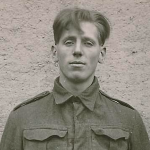
The first No.2 Commando was formed on the 22nd June 1940 for a parachuting role at Cambrai Barracks, Perham Down, near Tidworth, Hants. The Unit at the time consisted of four troops - 'A', 'B', 'C' and 'D'. Eventually 11 troops were raised. A nominal roll of 'C' and 'D' troops can be found in our documents album within the No 2 Commando gallery.
In November 1940 the unit would be redesignated as 11 Special Air Service Battalion. They were the airborne part of the Commando "Special Service" units, and had no connection to the SAS later raised by Bill Stirling and his brother David. They would be renamed 1st Parachute Battalion in September 1941.
On the 26th February 1941 authority was granted to raise a new No. 2 Commando by the reorganisation of the 1st Special Service Battalion. The new No 2 Commando under the command of Lt.Col. Augustus Charles Newman was now at Paignton, and consisted of men who had perviously served in some of the Independent Companies that formed the short lived 1st Special Service Battalion.
Many of the entries below commencing with the Commanders are from a narrative of No. 2 Commando history written by Bob Bishop and dedicated to John and Daisy Wright of Sutton Coldfield, Warwickshire in memory of their son, Pte. Dennis Wright, who at the age of 18 was the youngest member of No. 2 Commando to fall in battle, September 13th, 1943. New content has been added over the years since.
View our Gallery images of No 2 Commando
Click/touch No 2 Commando below for additional content, or follow the links below it to specific content entries.

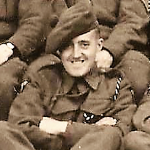
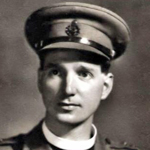
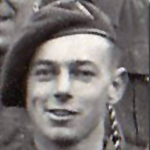
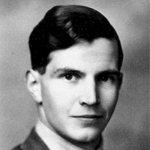
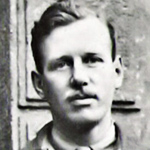
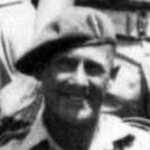
Lance Sergeant Charles Blattner, 5 troop, was killed in action at Dragone Hill, Salerno, as the enemy attacked down the valley of La Molina towards Vietri. Son of Julian and Mary Blattner.
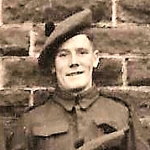
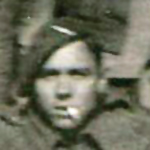
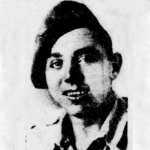
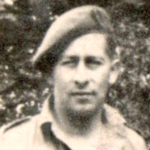
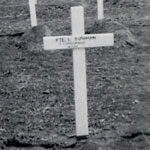
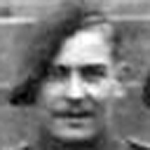
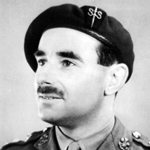
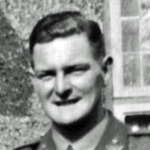
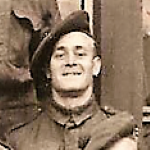
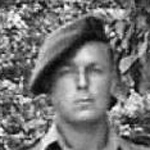
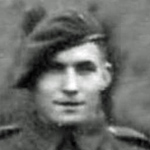
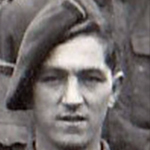
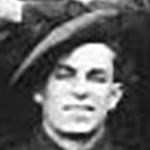
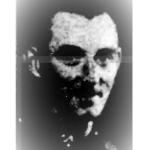
Lance Sergeant Norman Campbell, 3 Troop, died of wounds during the 6 week period when No.2 Commando was placed "in the line" in Italy under 5 Corps. Son of Norman Priggen Campbell, and of Minnie Louise P. Campbell, of Wootton, Bedfordshire.
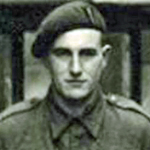
Gunner Alfred Clarke died during operations at Sarande, Albania.
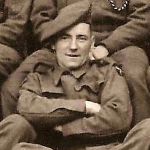
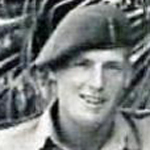
Lieutenant James Coyle died during operations at Sarande, Albania.
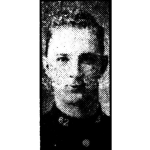
Private Robinson Craig was killed in action at Dragone Hill, near Vietri, Salerno. He was buried there the following day, his grave being marked with a cross. However it was never again found and Private Craig is one of the many who now have no known grave.
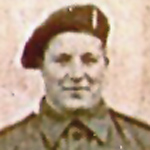
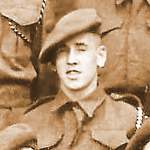
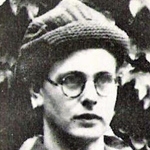
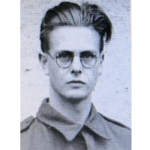
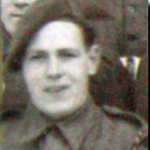
Lance Sergeant Raymond Davies, 5 troop, died during operations at Lake Comacchio, Italy.
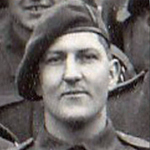
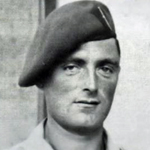
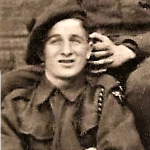
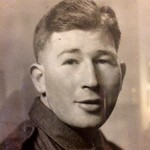
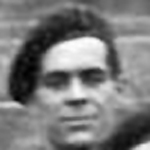
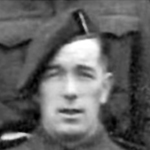
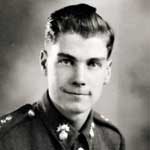
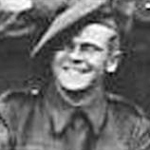
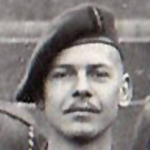
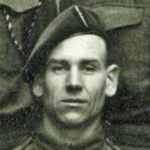
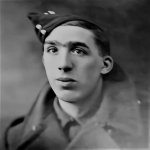
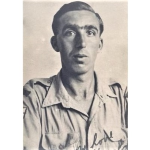
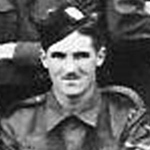
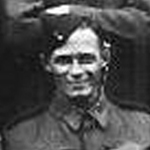
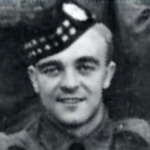
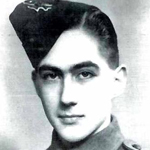
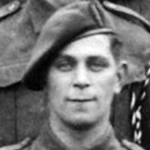
Corporal Charles Harrons, 1 troop, died after No 2 Commando had just taken part in the raid on Spilje, Albania.
An entry in the No 2 Cdo War Diary dated 24th August 1944 states " Burial Service for Cpl Harrons (1 Tp) who died in hospital at Bari was held in the afternoon."
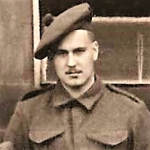
Guardsman Frank Hayes, 4 troop, was killed in action during operations at Vaagso, Norway. Son of George Richard Hayes, and of Lillian Hayes, of Manchester.
Lance Corporal Edwin Higginbottom died during the 6 week period in February/March when No 2 Commando were placed "in the line" in Italy under 5 Corps.
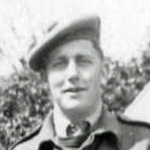
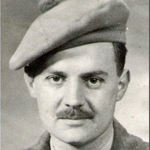
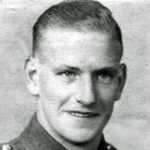
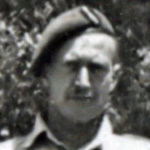
Private (Acting Lance Corporal) Joseph Jackson was killed in action during operations at Salerno, Italy. Son of Joseph and Frances Jackson, of Warrington, Lancashire.
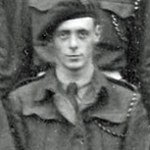
Lieutenant John Jeffreys, 2 troop, died during operations at Scaletta, Sicily.
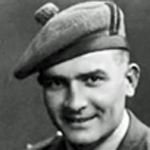
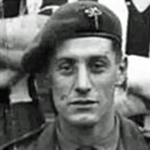
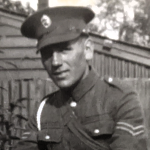
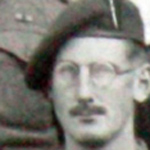
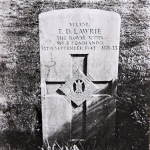
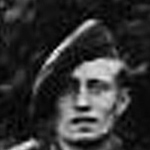
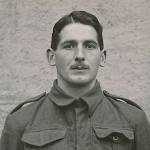
Private Reginald Makeham, 6 troop, was one of the seven men of No. 2 Commando who were captured after Operation Musketoon, and later executed under Hitler's Commando Execution Order, at Sachsenhausen Concentration Camp, Berlin, 1942.
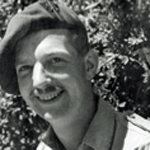
Temporary Captain Frank Mason, 6 Troop, died during operations at Dragone Hill, Salerno, Italy. Son of David Richard and Selina Machel Mason; husband of Dorothy Lilian Mason, of Cricklewood, Middlesex. He was originally buried by house at the top of the steps on the West side of Hill. Map ref.
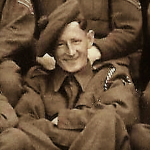
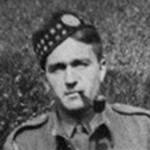
Gunner Norman Mitchell was reported missing 10 March 1945 during operations in Italy, later presumed killed in action. At the time of his death his Commando had been placed in the line in Italy for 6 weeks under 5 Corps. Gunner Mitchell has no known grave.
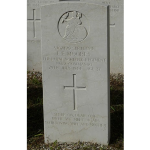
Sergeant Jack Moores died during operations at Spilje Bay, Albania. Son of Walter and Alice Moores; husband of Vera Lucy Moores, of Cambridge.
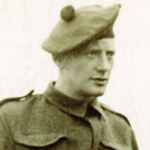
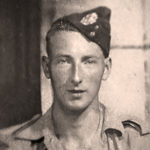
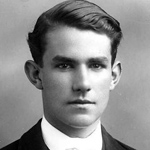
Private Francis Phelan was reported missing presumed died in Tunisia, North Africa. He has no known grave.
Private Alfred Porter died of wounds during the 6 week period in February/March when No 2 Commando were placed "in the line" in Italy under 5 Corps. Son of Alfred H. and Florence M. Porter, of Woodford Green, Essex.
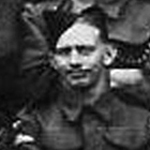
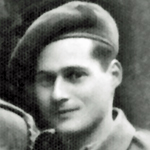
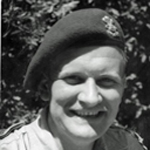
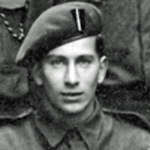
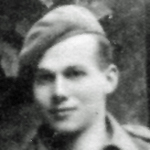
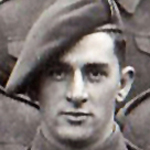
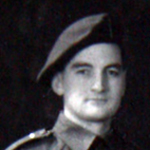
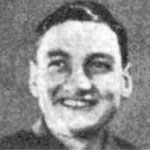
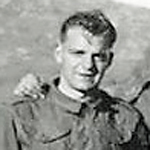
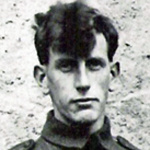
Sergeant Miller Smith, a former Police Officer, was one of seven men from No.2 Commando captured after Operation Musketoon and later executed at Sachsenhausen Concentration Camp under Hitler's Commando Execution Order.
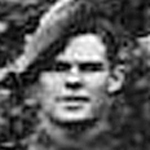
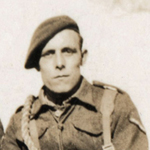
Lance Corporal John Stewart, 5 troop, was fatally wounded during operations at Dragone Hill, Salerno, Italy, and died on way to the Regimental Aid Post. Reported as buried by 41 RM Commando but his grave was never subsequently found. Son of John and Francis Stewart, of Clubmoor, Liverpool.
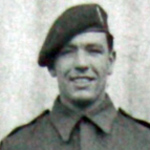
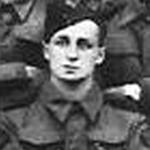
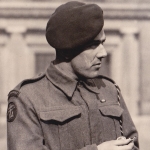
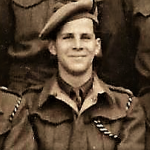
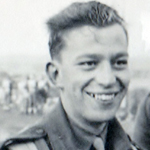
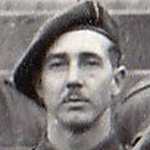
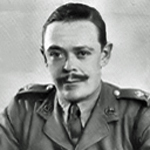
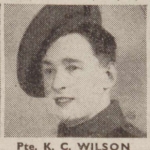
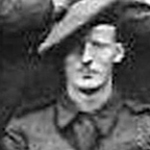
Lance Sergeant Leslie Woods was killed in action in Italy. This was during the 6 week period in February/March when No 2 Commando were placed in the line under 5 Corps.
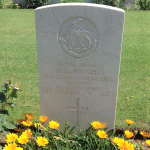
In 1946 the Army Council decided that the Army Commandos were to be disbanded and no provision was allowed or made for any depository or office which would have at least contained a complete Roster of Names of the men who served in the various units.
For historical & research purposes, we have tried to compile the names of all No.2 Commando volunteers which were obtained from the Commonwealth War Graves Commission Lists of Casualties, the No.2 Commando War Diary, papers from the National Archives and further research by members of the CVA and various other resources. In preparing this list, we acknowledge that it is very likely there are omissions.
Note: Where a service number is shown on our nominal rolls and no source is shown in the end column, it should be treated as possible but not confirmed. Contact the Archive if you suspect an error.
|
SURNAME
|
FORENAME
|
RANK
|
NUMBER
|
AWARD
|
ADDITIONAL
|
|---|---|---|---|---|---|
|
Abbey
|
Philip, Robert, A.
|
LCpl
|
6296572
|
|
The Buffs; 2Tp (CA63)
|
|
Cyril, Henry
|
Rfn
|
6922005
|
|
Rifle Bde; executed
|
|
|
Acreman
|
John, Ellery
|
Gnr
|
944326
|
|
2 Cdo from 1945 (DR) ; and 6 Cdo WO417/56
|
|
Adams
|
C.R.
|
Pte
|
|
|
lka Brighton (LL1) |
|
Adams
|
W
|
Pte
|
|
|
Parents from Rotherham (DR)
|
|
Adamson
|
|
Lt
|
|
|
|
|
Agnew
|
J.F.
|
Pte
|
5335029
|
|
R.Berks; wounded 1943 CasList WO417/67
|
|
Aiden
|
P.M. St J.
|
Cpl
|
|
|
(LL1)
|
|
Ainslie
|
Leslie,
'wee' or 'titch'
|
Pte
|
2826201
|
|
Seaforths; 5 Tp (JR) (PG); Sgt. Australian Army (CA23)
|
|
Walter
|
Gnr
|
898494
|
|
RA; 5 Troop
|
|
|
Aird
|
Gerald
|
Pte
|
4613225
|
|
(DR)
|
|
Michael, Derrick
|
Pte
|
3772603
|
|
Kings Regt; kia St Nazaire
|
|
|
Albutt
|
Frank
|
Pte
|
|
|
from Coventry (CA83)
|
|
Aldersea
|
S
|
Pte
|
|
|
S.Staffs Regt; (LL1); (DR)
|
|
Jack
|
LSgt
|
1892443 |
|
RE; (St Nazaire)
|
|
|
Hugh, Bryan
|
LCpl
|
14000107
|
|
Royal Scots; kia
|
|
|
Allbutt
|
H
|
Pte
|
5127298
|
|
R Warwicks Regt; 4 Tp (DR)
|
|
Allen
|
Kenneth, George
|
2Lt
|
240429
|
|
Sherwood Forresters
|
|
Allen
|
Reginald, John
|
Pte
|
5947997
|
|
Beds & Herts; (CA104)
|
|
Allnutt
|
Cyril, W.
|
Pte
|
2878481
|
|
Gordons; 2 Cdo Sigs (PG)
|
|
Allott
|
Edward
|
LCpl
|
|
|
Pioneer Corps (DR)
|
|
Alfred, Edmund
|
Cpl
|
4536995
|
MM
|
W. Yorks/Recce Corps
|
|
|
Amos
|
Richard, Henry
|
LSgt
|
5343009
|
|
R Berks; 29Jul'44 CasList WO417/80; (CA92)
|
|
John, Robert
|
LSgt
|
2616491
|
MM
|
Grenadier Gds
|
|
|
Harold
|
Gdsm
|
2620580
|
|
GrenGds; Op. Chariot ML446/ 2 troop
|
|
|
Andrew
|
K.D.
|
Pte
|
6350065
|
|
QORWK; lka Australia (LL1); (DR)
|
|
Albert, Mailly
|
LCpl
|
6916421
|
MM
|
Rifle Brigade
|
|
|
Andrews
|
B
|
Pte
|
|
|
|
|
H.E.
|
Pte
|
4546729
|
|
W.Yorks; CasList 1943 WO417/69; POW
|
|
| Armstrong | J | Pte | ? 986201 | Parents from Middlesborough | |
|
Armstrong
|
Jeffrey, Howard
|
Pte
|
|
4tp (Spalding); (LL7)
|
|
|
Arnison
|
Stanley, Frazer 'Stan'
|
Pte
|
3599697
|
|
Border Regt; (PG); (CA94)
|
|
Arnold
|
Frank, H.W.
|
Cpl
|
5932921
|
|
Suffolks;CasLists;Italy wounded 13Sep43
|
|
Arnold
|
Lieut
|
|
|
R.W.F.; attached 4/12/43. WD (F.R.O. Dec43)
|
|
|
Arthur
|
LCpl
|
2929623
|
|
Liverpool Scots; 5 troop; wounded Op Chariot
|
|
|
Ashcroft
|
T
|
Pte
|
3959697
|
|
Welch Regt
|
|
Ashton
|
Eric
|
|
|
|
|
|
Ashton
|
Ernest
|
Gnr
|
|
|
RA; (PG)
|
|
Ashton
|
James
|
Pte
|
|
|
|
|
Ashton
|
R.G.
|
Cpl
|
|
|
|
|
Ashton
|
W
|
Pte
|
|
|
HWT (PG)
|
|
Aspey
|
William,
'Bill' or 'La'
|
LCpl
|
2930678
|
|
Liverpool Scots; 5 Tp; (PG)
|
|
William
|
Pte
|
4546321
|
|
West Yorks Regt; (PG);(DR)
3Tp; wounded WO417/84
|
|
|
Attwood
|
R.W.H
|
Fus
|
6479169
|
|
R Fusiliers (CA44); (LL1);(DR); WO417/68
|
|
Attwood
|
S.G.
|
Gdsm LCpl
|
2617679
|
|
Gren. Gds; (DR); wounded 22/3/44 WO417/74
|
|
Norman, John
|
Gdsm (Cpl)
|
2616306
|
|
Grenadier Gds; (CA63)(CA75)(CA119)
|
|
|
Auld
|
Luke
|
Pte
|
|
|
Liverpool Scots; 4 Ind. Coy (PG)
|
|
James, Herbert
|
Bdr
|
2083573
|
|
RA; (DR); (PG); PoW 135268
Dalmatian Islands
WO416/13/234
|
|
|
Austin
|
P
|
Fus
|
|
|
|
|
Austwick
|
John, 'Jack'
|
LCpl
|
5989253
|
|
Beds & Herts; (PG); (CA54)
|
|
Charles
|
Cpl
|
2931647
|
MiD
|
QOCH / later 1SAS (PG)
|
|
|
Bailey
|
Charles
|
Sgt
|
|
|
(CA117)
|
|
Bailey
|
Norman
|
LCpl
|
|
|
Kings Rgt. Served in 1 Cdo Bde. Awaits verification of 2cdo service. (PG)
|
| Bailey | P | Pte | 5121166; | R.Warwicks; 1944 CasList WO417/81 & WO417/84 | |
|
Bailey
|
W.F.
|
Pte
|
|
|
from Wallington (LL1)
|
|
Bailey
|
W.H.
|
Gnr
|
|
|
RA
|
|
Bailey
|
W.J.
|
Gnr
|
|
RA; 4 Troop
|
|
|
Baker
|
Richard
|
Lt
|
|
|
Seconded to RM Cdos Yugoslavia (EB)
|
|
Baldock
|
R.G.A.
|
Bdr
|
2065660
|
|
RA; (LL1); 1 tp (DR)
|
|
Baldwin
|
Wallace, Amos
|
Spr
|
|
|
RE; & 2 Cdo Bde (CA77)
|
|
Ballard
|
Sidney, Robert, James
|
Gnr
|
|
|
RA; (CA104)
|
|
Ballard
|
William, Joseph
|
LSgt
|
6019504
|
|
Essex Regt (CA91)
|
|
Stephen, Dorcas
|
Sgt
|
6349577
|
|
QORWK; kia
|
|
|
Bancroft
|
Dilwyn,
'Taff' or 'Dil'
|
LSgt
|
2734698
|
|
Welsh Guards; 6 Tp Dec42 (PG); 4 Tp Dec43 (WD);(CA88,CA93)
|
|
Banks
|
Frederick, Charles. 'Stan'
|
LCpl
|
3863503
|
|
Loyal Regt; (PG)
|
|
Banks
|
Harry
|
Gnr
|
|
|
RA; 1 Tp (PG); (DR)
|
|
Gareth, Bernard
|
Capt Padre
|
159706
|
|
RACD; kia
|
|
|
Banting
|
J
|
|
|
|
|
|
H. John
|
Pte
|
5779882
|
|
R Norfolk Regt; 5 Tp (JR); (PG); PoW Salerno
|
|
|
Jack, Stormont
|
Capt
|
88169
|
|
Artist Rifles; kia
|
|
|
Barker
|
William, Edward
|
Gnr
|
|
|
RA; 4 Troop
|
|
Gilbert, Michael
|
Capt
|
|
|
RAMC; 2 Cdo M.O. at St Nazaire
|
|
|
Arthur, Leslie
|
Pte
|
6032057
|
|
Beds & Herts; Salerno CasLists WO417/67
|
|
|
Barlow
|
E.J.
|
Sgt
|
|
|
|
|
Jack
|
LCpl
|
6482241
|
MBE,BEM, CPM
|
R. Fusiliers
|
|
|
Barmby
|
Geoffrey
|
LCpl
|
|
|
|
|
Frederick, Charles, Kenneth
|
LSgt
|
|
RA (CA56)
|
||
|
Barnard
|
N
|
|
|
|
|
|
Barnes
|
H
|
Lt
|
|
|
|
|
Barnes
|
M
|
|
|
|
|
|
Wiliiam, Walter
|
LSgt
|
6482223
Police
|
MID
|
R.Fusiliers; wounded 20/3/45 CasList WO417/90
|
|
|
Barnett
|
L
|
|
|
|
|
|
Robbie
|
Sgt
|
2877689
|
MBE
|
London Scottish
|
|
|
John
|
Pte
|
3663903
|
|
South Lancs Regt; kia
|
|
|
Bernard, James
|
Maj
|
134120
|
DSO, MC
|
44 Recce Corp
|
|
|
Basire
|
Manuel, Pienti, 'Peter'
|
LCpl
|
6351539
|
|
QORWK; 4 tp (PG); Italy 1945 wounded WO417/90 (CA61, CA113)
|
|
Bass
|
J
|
Pte
|
|
|
lka Essex (LL1)
|
|
Bateman
|
L
|
Pte
|
|
|
lka Folkestone (LL1)
|
|
Bates
|
Les, G.
|
Tpr
|
|
|
2 Cdo (LL1); Recce Corps; 1 Troop
|
|
Battersby
|
W.J.
|
Fus
|
|
|
|
|
Robert, John,
'Bob'
|
Capt
|
100219
|
MiD
|
SWB
|
|
|
Leonard
|
Sgt
|
6467968
|
|
R. Fusiliers
|
|
|
Beard
|
J.F.
|
Gnr
|
|
|
RA
|
|
Beardmore
|
L
|
Pte
|
|
|
|
|
John, Clifford
|
Rfn
|
6912677
|
MiD
|
Rifle Bde; wounded St Nazaire /evac.UK/to R.E.
|
|
|
Beasley
|
F
|
Cpl
|
5337125
|
|
R. Berks Regt
|
|
Beck
|
A
|
Pte
|
4546709
|
|
West Yorks. Regt; (LL2) (DR)
|
|
Beckett
|
Paul, Henry
|
Pte
|
4747367
|
|
Yorks & Lancs. Regt; (PG)
|
|
Beeden
|
Walter, Reginald
|
Sig
|
2325052
|
|
R Signals; (PG)
|
|
Belcher
|
Edward
|
Pte
|
|
|
|
|
Bell
|
A
|
Pte
|
|
|
|
|
Bell
|
Reginald, William
|
Fus
|
|
|
(CA80)
|
|
William, White
|
LCpl
|
6461342
|
|
R Fusiliers; (CA83); 6 Tp
PoW after St Nazaire
|
|
|
Bellamy
|
Frank
|
Gnr
|
.1580169
|
|
RA; (DR)
|
|
Bellamy
|
G
|
Pte
|
|
|
6 Tp Dec42 (PG)
|
|
Bellamy
|
R.W.
|
Gnr
|
|
|
RA
|
|
Roy,
'Ting-A-Ling'
|
LSgt
|
5342397
|
|
R Berkshire
|
|
|
Bells
|
J
|
|
|
|
|
|
Benn
|
Robin
|
Capt
|
138116
|
OBE
|
RA
|
|
Norman, Joseph
|
Rfn
|
6920786
|
|
Rifle Bde;
died on war service
|
|
|
Bennett
|
A.J.
|
Lt
|
124713
|
|
Lincolnshire
|
|
Bennett
|
A.S.
|
Lt
|
249968
|
|
RA
|
|
Derrick, S.
|
Pte
|
6351281
|
|
QORWK; kia
|
|
|
Bennett
|
Frederick, 'Fred'
|
Pte
|
3655156
|
|
South Lancs; 5 troop
|
|
Bennett
|
Gordon
|
Sig
|
|
|
R Signals
|
|
John, Henry
|
Pte
|
|
|
|
|
|
Benson
|
Dave
|
Pte
|
6351411
|
|
QORWK; (CA78); (LL2 - LCpl D.G. Benson); (DR)
|
|
Berry
|
J
|
|
|
|
|
|
Berry
|
R.D.
|
Pte
|
|
|
from Boscastle (LL2)
|
|
Bibby
|
T.
|
Pte
|
?663944
|
|
|
|
Bird
|
R
|
Gnr
|
|
|
|
|
David, Leslie
|
Capt
|
75991
|
|
Rifle Bde; kia St Nazaire
|
|
|
Birchall
|
T
|
Pte
|
|
|
|
|
Bishop
|
D.B.
|
Gnr
|
11061131
|
|
RA
|
|
Ivor, W.
|
CSM
|
|
|
R.Berks; 6 troop
|
|
|
Bishop
|
J
|
LCpl
|
|
|
|
|
Bishop
|
Robert, Frederick
|
LCpl / Lt
|
346135
|
MC, MiD
|
R.Norfolk; CasLists;Italy (Pte) wounded 13Sep43
|
|
Graeme, Delamere
|
Capt
|
106240
|
DSO,MC
|
South Lancs; executed
|
|
|
Blackburn
|
E
|
Pte
|
3974529
|
|
Welch;CasLists;wounded Italy 9Sep43
|
|
Blackett
|
E
|
Bugler
|
|
3311912
|
HLI
|
|
Blackie
|
E.J.
|
Bdr
|
6015726
|
|
RA; wounded Sicily 16/8/43 CasList WO417/66
|
|
Blackmore
|
M
|
Pte
|
5192753
|
|
Glosters; 1 Troop
|
|
Blackwell
|
F.A.
|
Pte
|
14683190
|
|
|
|
Alun, Trevor
|
LCpl
|
3655742
|
DCM
|
S Lancs Regt
|
|
| Bladen | W | LCpl | 3972536 | Welch;CasLists;wounded Italy 13Sep43 | |
|
Blanchard
|
William, John
|
Lt
|
197443
|
|
RA; joined Cdo 13/11/43 posted 1 tp.(WD / F.R.O.); later Hon.Maj.
|
|
Blandford
|
Thomas, Alexander
|
Capt
|
160504
|
|
Somerset LI; and CBTC (CA84)
|
|
Charles, William
|
Sgt
|
3063224
|
|
Royal Scots; kia
|
|
|
John, Willie
|
Bdr
|
874391
|
|
RA Attestations 1937
|
|
|
Bleach
|
William, E.J.
|
Rfn
|
|
|
KRRC
|
|
Blewett
|
Frederick, Charles
|
Gnr
|
|
|
RA
|
|
Blewitt
|
M
|
Gdsm
|
|
|
|
|
Harry, Harold
|
Maj
|
90331
|
|
Kings Regt;
and Bde Maj 1 SS Bde
|
|
|
Alfred
|
Pte
|
3772259
|
|
Kings Regt; kia
|
|
|
Blunt
|
B.M.
|
Gnr
|
|
|
RA (CA113)
|
|
William 'Bill'
|
LCpl
|
2930644
|
|
QOCH/ Liv. Scots/PoW after St Nazaire
|
|
|
Boagey
|
Leonard, W.
|
Pte
|
|
|
CA98
|
|
Boardman
|
Arthur 'Boy'
|
Sgt
|
|
|
|
|
Robert, John, 'Ron'
|
Pte
|
|
|
and No.4 Cdo (CA97)
|
|
|
Theodor
|
Dvr
|
PAL/30441
|
BEM
|
RASC
|
|
|
Peter
|
Gnr
|
5183803
|
|
RA; kia
|
|
|
Boone
|
R
|
|
|
|
|
|
Boseley
|
D
|
Pte
|
|
|
(DR)
|
|
Bosley
|
F
|
Gnr
|
|
|
RA (DR)
|
|
Bott
|
J
|
Pte
|
|
|
N.Staffs Regt; 3 Troop; (DR)
|
|
Bottomley
|
S
|
Gnr
|
|
RA
|
|
| Boulter | H | LCpl | 5047114 | N.Staffs; and 11SAS Bn., PoW Op Colossus WO417/22 | |
|
Cyril, Bryan
|
Gnr
|
14285384
|
|
RA
|
|
|
Bowes
|
J.E.
|
LCpl
|
|
|
|
|
Bowers
|
G
|
Pte
|
|
|
RASC; (DR)
|
|
Bowler
|
G
|
Pte
|
3973545
|
|
Welch (DR)
|
|
Lionel, George
|
Pte
|
5956867
|
|
Beds & Herts; kia
|
|
|
Bowring
|
T.H.
|
LCpl
|
7014938
|
|
RUR;CasLists;wounded Italy 13Sep43
|
|
Boyce
|
A.T.
|
LSgt
|
|
|
|
|
Boyd
|
Micky
|
Fus
|
3130045
|
|
R Scots Fus
|
|
Boyer
|
D
|
Pte
|
|
|
|
|
Bradburn
|
F
|
Gnr
|
|
|
RA; 5 Troop
|
|
Eric
|
Sgt
|
3770135
|
|
Kings Regt; died para acc.
|
|
|
Richard
|
LSgt
|
5344190
|
MM
|
R Berkshire
|
|
|
Brafman
|
C
|
Pte
|
PAL/10958
|
|
The Buffs/RAOC;
2 Troop
|
|
Brain
|
D
|
Pte
|
|
|
R. Warwickshire
|
|
Bramley
|
T
|
Gnr
|
|
|
RA; 6 troop (PG)
|
|
Brearley
|
H.T.
|
Pte
|
3663854
|
|
S Lancs; 29Jul'44 CasList WO417/80
|
|
Brewerton
|
J.B.
|
Pte
|
|
|
Yorks & Lancs.
|
|
Brigden
|
Frederick, James
|
Pte
|
|
|
|
|
John
|
LCpl
|
3973527
|
|
Welch Regt; kia
|
|
| James |
Pte
|
6104149
|
|
Queens Royal; POW
|
|
|
Harold, R.
|
LCpl
|
T/264673
|
|
RASC; kia
|
|
|
Brodie
|
J.R.
|
LCpl |
321068
|
|
RAC; CasLists;wounded Italy 10Sep43
|
|
Brookes
|
A.C.
|
Pte
|
4928693
|
|
S.Staffs; wounded Salerno WO417/67
|
|
Brooks
|
T A
|
Pte
|
|
|
|
|
Richard, Frank, 'Dickie'
|
Capt
|
85468
|
|
South Lancs Regt; kia
|
|
|
Brown
|
C.L.
|
Pte
|
2936249
|
|
QOCH; POW Salerno
|
|
Douglas, Cornell
|
Pte
|
5622344
|
|
Devonshire Regt; 1 Troop
|
|
|
Brown
|
E.F.
|
LSgt
|
6104884
|
|
Essex Regt; 3 Tp; CasList WO417/70 wounded Italy
|
|
Louis, Walter, 'Ben'
|
Sgt
|
2929147
|
|
QOCH /Liv. Scots/PoW after St Nazaire
|
|
|
Ralph, Douglas
|
Pte
|
partial ??351544
|
|
QORWK; (CA97)
|
|
|
Robert, Hall
|
LSgt
|
2879761
|
MM
|
London Scottish
|
|
|
Brown
|
W
|
Cpl
|
|
|
|
|
Browning
|
James, Stanley
|
Pte
|
|
|
Pioneer Corps
|
|
Bruce
|
Alexander
|
LCpl
|
T 144937
|
|
RASC; CasList WO417/90
|
|
James, M.
|
Sgt
|
5989540
|
|
Beds & Herts; (CA94)
|
|
|
Bruce
|
Kenneth
|
TSM
|
|
|
Liverpool Scots (PG)
|
|
Arthur, Trotter
|
Lt
|
172379
|
|
Durham Li; kia
|
|
|
Edward, Joseph
|
LCpl
|
3775300
|
|
Kings Regt; kia St Nazaire
|
|
|
Bryan
|
Sidney, Eric
|
Sgt
|
|
|
|
|
J.H.
|
Pte
|
5510092
|
|
Hamps. Regt; 17/10/43 wounded CasList WO417/67
|
|
|
Buckby
|
J
|
|
|
|
|
|
Raymond, F.
|
LSgt
|
.1505833
|
|
RA; kia
|
|
|
Buckland
|
J
|
Pte
|
3975418
|
|
Welch
|
|
Eric, H.
|
Pte
|
T264339
|
|
RASC; 5 Troop
|
|
|
Stanley, Owen
|
Dvr
|
T10691421
|
|
RASC; 5 Troop
|
|
|
Bullen
|
Christopher, Vincent, Kit
|
Lt
|
251068
|
|
RA
|
|
Bullock
|
|
Sgt
|
|
|
|
|
Norman
|
Tpr
|
7893626
|
|
RAC; died of wounds
|
|
|
Burchall
|
T
|
|
|
|
|
|
Edward 'Tiny'
|
Sgt
|
2929845
|
BEM
|
Liverpool Scots;
5 Troop
|
|
|
Burley
|
C.W.
|
Pte
|
6205700
|
|
Middx Regt; CasList 16/9/43 WO417/68; (LL4)
|
|
Michael, Clive 'Micky'
|
Capt
|
74087
|
MC
|
KRRC; PoW St Nazaire
|
|
|
Charles
|
Gnr
|
.1612571
|
|
RA; kia Salerno
|
|
|
Burns
|
J
|
|
|
|
|
|
Burns
|
J.V.
|
LCpl
|
|
|
|
|
Ronald, Edward, David
|
LCpl
|
6895664
|
|
KRRC; kia St Nazaire
|
|
|
Burrage
|
Lawrence, Raymond
|
Pte/Lt
|
5509884 & 352377
|
|
Hampshire Regt.
Royal Fusiliers
|
|
Burridge
|
E
|
|
|
|
|
|
Burridge
|
N
|
Pte
|
|
|
|
|
Bursztein
|
|
Dvr
|
|
|
|
|
Robert, James, Glover
|
Lt
|
89395
|
MiD
|
Cheshire Regt;
kia St Nazaire
|
|
|
Burton
|
G
|
Pte
|
6019699
|
|
Essex Regt; HW Tp (WD report by Capt Keep 18/12/43)
|
|
Paddy
|
Rfn
|
7014446
|
|
R. Ulster Rifles; 6 troop; PoW after St Nazaire
|
|
|
Butcher
|
Jesse, E.
|
Sgt
|
|
|
|
|
Cadden
|
Maurice C
|
Cpl
|
3864587
|
|
Cheshire Regt
|
|
Calkin
|
Ron
|
|
|
|
|
|
Dennis
|
LCpl
|
14241621
Police
|
|
Black Watch; Italy CasLists wounded
|
|
|
Callow
|
Ronald, W.
|
LBdr
|
|
RA
|
|
|
Cambridge
|
R G
|
Pte
|
|
|
|
| Cameron | D | Dvr | 88912 | RASC (RTU Feb 1944) | |
|
John, Ewen
|
Cpl
|
410258
|
|
Lovats Scouts; kia
|
|
|
Norman Murray Priggen
|
LSgt
|
5958258
|
|
Beds & Herts; kia
|
|
|
Campling
|
Frederick George 'Joe'
|
Rfn
|
6853905
|
|
KRRC
|
|
Candlin
|
James, Daniel, Danny
|
Gnr
|
993419
|
|
RA; 2 tp.
|
|
Evelyn, Arthur, George
|
Cpl / Lt
|
14241841 Police
|
|
Essex Regt; wounded italy; WO417/70; to OCTU
|
|
|
Cant
|
W
|
|
|
|
|
|
William, Thomas, 'Bill'
|
Cpl
|
14241731 Police
|
|
R.Fusiliers
|
|
|
N
|
Pte
|
14241651 Police
|
|
Black Watch; (LL2)
|
|
| Caravias | B | Pte | N/S 8436 | Mother from Athens | |
| Carey | H.J. | Spr | 1907563 | R.E. | |
|
Carlisle
|
Thomas,Alexander
|
LSgt
|
3657093
|
|
R. Irish Fus.
|
|
John, Richard, Owen
|
Pte
|
5631088
|
|
York and Lancs Regt; 5 Tp; wounded 17/4/45
|
|
|
Carr
|
Frederick, T.
|
Bdr
|
|
RA (wounded discharged)
|
|
|
George
|
LCpl
|
14241652 Police
|
|
Lancs Fusiliers; kia Salerno
|
|
|
Carrol
|
K
|
|
|
|
|
|
Carrol
|
P
|
|
|
|
|
|
John, Joseph
|
Fus
|
6469540
|
|
R. Fus; 3 troop; PoW after St Nazaire
|
|
|
Hugh, John
|
Cpl
|
4078193
|
|
Monmouthshire Regt; died in training
|
|
| Cartwright | E.N. | Manchester | |||
|
William
|
Tpr
|
14241792 ?
Police
|
|
3 troop (DR)
|
|
|
Caslin
|
P.G. 'Pat'
|
Fus
|
|
|
R. Fusiliers; (CA98);
lka Co. Clare, Eire (LL3)
|
|
Caswell
|
William, James
|
Gnr
|
2059600
|
|
RA
|
|
Caveney
|
John
|
Fus
|
3134031
|
|
Royal Scots Fus
|
|
Chadwick
|
E
|
Dvr
|
|
|
RASC
|
|
Chadwick
|
John, Richard
|
Pte
|
|
|
(CA119, CVA PG) |
|
William, A.
|
Sgt
|
3515161
|
DCM
|
QOCH
|
|
|
Chant
|
Doug
|
Pte
|
5110274
|
|
R.Berks Regt; 2 tp; CasList WO417/67 9Sep43
|
|
Chant
|
L
|
Pte
|
|
R Warwickshire Regt
|
|
| Chapman | A.J. | Pte | 14631000 | Suffolk Regt; wounded Italy 2/4/45 CasList WO417/91 | |
|
William, Jopp
|
Pte
|
14241789
Police
|
|
QOCH; Mortar Section 1943 (PG); (CA54)
|
|
|
Charlesworth
|
Arthur F.
|
LCpl
|
|
|
|
|
Gerald
|
Fus
|
6482292
|
|
R.Fusiliers (COF L); died on war service
|
|
|
Jack, F.
|
Cpl
|
2930999
|
|
Liverpool Scots/PoW after St Nazaire
|
|
| Cheney | Robert, W. | Gnr | 1523294 | RA | |
|
Chesters
|
William
|
Cpl
|
14241790
|
|
2 Tp; S.Staffs; wounded Salerno WO417/67; OCTU; Poss police intake; (CA93)
|
|
William, Henry, Albert
|
LBdr
|
882221
|
|
RA; executed
|
|
|
Francis, John
|
Cpl
|
14411819
|
|
AS&H; wounded twice
|
|
|
Church
|
J
|
|
|
|
|
|
J.M.T.F.
'Jack'
|
Lt Col
|
34657
|
MC,DSO*
|
Manchester Regt;
OC 2 Cdo after Chariot
|
|
|
Clancy
|
S.J.
|
Fus
|
|
|
|
|
James
|
Gnr
|
402083
|
MM
|
RA
|
|
|
Clark-Darby
|
P.F.R.
|
Pte
|
|
|
|
|
Alfred, John, Douglas
|
Gnr
|
902982
|
|
RA; kia
|
|
|
Clarke
|
H
|
|
|
|
|
|
George, Francis
|
LCpl
|
14241653
Police
|
|
Border Regt; to OCTU; (CA57)
|
|
|
Cleary
|
T.D. 'Paddy'
|
Pte
|
|
RA (RTU 2/11/44)
|
|
|
Albert, Edward
|
Pte
|
-
Police
|
|
Police Intake Sussex Constabulary
|
|
|
Clements
|
Percy, Priestley
|
Sgt later Lt.
|
|
MC,DCM, MM
|
2 Para Cdo, 11 SAS Bn, Army Air Corps, Paras
|
|
Clery
|
R.V.
|
Gnr
|
|
RA (RTU Oct44)
|
|
|
Clibborn
|
William
|
Maj
|
|
|
|
|
Clifford
|
Oswald
|
Pte
|
|
|
|
|
Coates
|
Edward
|
Pte
|
|
|
Liverpool Scots
|
|
Cobelli
|
Dominic
|
LSgt
|
|
|
|
|
Victor, Charles
|
|
14241816
Police
|
BEM
|
|
|
|
Cochrane
|
James, Geoffrey
|
Dvr
|
|
|
RASC
|
|
Robert
|
LCpl
|
3654681
|
|
S.Lancs Regt; 4 Troop; PoW after St Nazaire
|
|
|
Cockine
|
M
|
|
|
|
|
|
Codd
|
Charles, John
|
Dvr
|
|
|
|
|
Lawrence, Joseph
|
Sig
|
2332748
|
|
R Signals, and 11 Cdo;
PoW June'44; (CA26)
|
|
|
Cohen
|
L
|
Pte
|
|
|
Middx. Regt.
|
|
Colbeck
|
S
|
Gdsm
|
|
|
Grenadier Gds; 3 tp (WD report by Lt Keep 18/12/43)
|
| Colbert | George, Thomas | Gnr | 914341 | RA 1939; & 1 Cdo; from Peterborough (CA92) | |
|
Coleman
|
C.L.W.
|
LSgt
|
|
|
|
|
Lloyd
|
Pte
|
14241610 Police
|
|
5 Troop
|
|
|
Coleman
|
R
|
Pte
|
|
|
& 4 Cdo; TB Sanitorium, Worcs. 1953 (CA17)
|
|
Colkin
|
Ronald, Arthur
|
LCpl
|
|
|
|
|
Collins
|
D.A.
|
Pte
|
|
|
Herts Regt
|
| Collins | E | Pte | 5989748 | Beds & Herts; Salerno CasLists WO417/67 | |
|
Collins
|
Edward
|
Cpl
|
|
|
|
|
Collins
|
Ronald, George
|
Gnr
|
11412936
|
|
RA
|
| Conley or Comley | J | Rfn | 14404456 | Father from Swansea | |
|
Stanley, J.
|
Pte
|
T 328227
|
|
RASC; kia Salerno
|
|
|
John, Alphonsus
|
Fus
|
14241817
Police
|
|
R Irish Fus; (PG); CasList wounded 18/1/44 WO417/71
|
|
| Cook | J | Gnr | 5383332 | Ox and Bucks LI and RA. | |
|
Ken
|
Pte
|
14241818 Police
|
|
RAC
|
|
|
Charles
|
Cpl
|
14241654
Police
|
|
KOSB
|
|
| Cooper | A.C. | Gnr | 11062858 | RA | |
| Cooper | Claude, V. | Pte | |||
|
Dudley, Edward
|
Fus
|
14241655
Police
|
MM
|
Lancs Fusiliers
|
|
|
George
|
Pte
|
14241819 Police
|
|
Notts&Derby Regt;
5 Troop and HWT
|
|
|
William,Oranmore 'Bill'
|
Maj
|
50169
|
DSO
|
South Lancs Regt; 2 i/c St Nazaire; PoW
|
|
|
Corke
|
Denis, A., David
|
Pte
|
|
|
|
|
John
|
LCpl
|
3781807
|
|
Kings Regt; kia St Nazaire
|
|
|
John, Richard
|
Cpl
|
14241656 Police
|
|
RAC
|
|
|
Arnold, C.
|
Pte
|
14241706
Police
|
|
Durham LI. (CA57)
|
|
| Courtney | E.L | Gnr | 944786 | RA Signals | |
|
Courtney
|
T
|
Pte
|
|
|
|
|
Couts
|
K
|
|
|
|
|
|
Coutts
|
Kenneth, Thomas,Freeman
|
Cpl
|
6352712 & 341981
|
|
QORWK; 4 Tp, OCTU 1945, LG37092, p2657
|
|
Cecil, Ernest, Roberts
|
Cpl
|
14241734 Police
|
|
RAC; kia
|
|
|
Edward
|
Gnr
|
.1779575
|
|
RA; kia
|
|
|
Hugh, Wilfred
|
Pte
|
|
|
|
|
|
Cox
|
R.
|
Pte
|
5672751
|
|
Somerset LI
|
|
Coy
|
Reginald
|
Gnr
|
848464
|
|
RA
|
|
James, Albert
|
Lt
|
255387
|
|
RA; kia
|
|
|
Coyne
|
Horace
|
Cpl
|
S929128
|
|
RASC; 2 tp; PoW 6/6/44 CasList WO417/82; (LL3); from burnley (CA120)
|
|
Ben
|
Gdsm
|
14241707
Police
|
|
Coldstream Gds; 6 tp; to CMP 6Oct45
|
|
| Craddock | Raymond, Charles | Pte | 14650092 | East Surrey Regt | |
|
Craggs
|
Francis, W.
|
LBdr
|
937282
|
|
RA Attestations 1939
|
|
John
|
Pte
|
14241657 Police
|
|
Black Watch/ Italy CasList;wounded
|
|
|
Robert
|
LCpl
|
14241708
Police
|
|
RA; 4 Troop
|
|
|
Robinson, Ostle
|
Pte
|
14241791 Police
|
|
KOSB; kia Salerno
|
|
|
Craig
|
W
|
Pte
|
|
|
PoW Italy ?
|
|
Crane
|
Syd
|
LCpl
|
|
|
Essex Regt; 2 troop
|
|
Craven
|
George
|
Fus
|
|
|
from Burnley (CA92)
|
|
Crayne
|
S
|
|
|
|
|
|
Cree
|
Lamb, Lawrence,. 'Jock'
|
Gnr
|
|
RA attestations 1941; wounded Italy 16/9/43 CasList WO417/68
|
|
|
Cresswell
|
A.B.
|
Pte
|
4868423
|
|
Leices. Regt; wounded 12/9/43 Italy WO417/69
|
| Creswell | J.M. | Fus | 6978829 | (DR) | |
|
Ronald
|
RQMS
|
S/136147
|
BEM
|
RASC
|
|
|
Arthur, Raymond
|
Rfn
|
11420547
|
|
R Ulster Rifles; kia
|
|
|
Cross
|
S.J.
|
Fus
|
|
|
|
|
Crowe
|
Edward, 'Ted'
|
Pte
|
14241837
|
|
R. Norfolk; s/n suggests possible Police Intake; CA106
|
| Crowther | W | Gnr | 4543597 | W. Yorks Regt & RA | |
|
John
|
Fus
|
6468006
|
|
R. Fusiliers; 6 Troop; PoW after St Nazaire; (CA120)
|
|
| Cullen | J | Pte | |||
|
Cullum
|
T.
|
Gnr
|
5336897
|
|
R Artillery (SL)
|
| Cummings | G | Pte | 4127301 | Cheshire Regt. | |
| Cummings | J | Fus | R. Irish Fus. | ||
| Cunningham | A | Cpl | 2525713 | R. Signals | |
|
Henry, Peter
|
Pte
|
2781746
|
|
Kings Regt;
kia St Nazaire
|
|
|
James
|
Cpl
|
3525713
|
MM
|
Royal Tank Regt
|
|
|
Cunningham
|
William, 'Joseph'
|
Sgt
|
3521614
|
|
Manchester/Pioneer Corps?
|
|
Curness
|
Charles
|
Pte
|
|
|
|
|
John, Robert, Sanderson
|
Sig
|
2578032
|
|
R Signals /2 SS Bde Sigs; kia
|
|
|
Currie
|
Malcolm, R.
|
Gnr
|
|
RA attestation 1940 to A&SH 22/9/44 WO417/89;
From Lanark; (LL4) (DR)
|
|
|
Eric, Gordon
|
Pte
|
6349613
|
|
QORWK; executed
|
|
|
Curtis
|
Reg
|
Pte
|
2615427
|
|
Grenadiers; 11th SAS; 1 Para wounded 25/9/44 WO417/84 & 91; WO392/11
|
|
SURNAME
|
FORENAME
|
RANK
|
NUMBER
|
AWARD
|
ADDITIONAL
|
|---|---|---|---|---|---|
|
Dahl
|
Leslie
|
Pte
|
|
|
& 4 Cdo (CA34, CA71)
|
|
Dalby
|
Aubrey, R.
|
Pte
|
14288596
|
|
Herts Regt; HWT; (EB)(DR) (PG)
|
|
Daniel
|
Robert ,Henry 'Bob'
|
Bdr
|
|
RA; (CA114); 4 Tp; wounded x2 Italy WO417/90 and 91
|
|
|
Gordon, Percy
|
Pte
|
14241820 Police
|
|
RAC; wounded Italy
|
|
|
Douglas, W.
|
Fus
|
6482296
Police
|
|
R Fusiliers
|
|
|
Davidson
|
Andrew
|
Major
|
|
|
Liv.Scots; 4 Ind.Coy; 2 Cdo 5 Tp injured 1941 reurned to unit
|
|
Douglas, Oscar
|
Tpr
|
14241622
Police
|
|
from Yorkshire (CA81)
|
|
|
Davidson
|
Ronald, F.
|
Pte
|
3775164
|
|
Kings Regt; 27Dec'41 wounded CasList WO417/36
|
|
Davidson
|
W
|
Pte
|
|
|
(PG)
|
|
A.H.W.
|
LCpl
|
14241793 Police
|
|
KRRC/CasLists;wounded Italy 13Sep43.
|
|
|
Davies
|
Brinley
|
Pte
|
|
|
Pioneer Corps
|
|
Davies
|
James, Emlyn
|
Pte
|
6297210
|
|
Buffs East Kent
|
|
L
|
Pte
|
14241658 Police
|
|
Lancs Fus
|
|
|
Raymond, Spencer
|
LSgt
|
5780063
|
|
R Norfolk Regt; kia
|
|
|
R.J.
|
Gnr
|
2060103
|
|
RA; wounded Albania CasList WO417/80
|
|
|
Ronald, John
|
Cpl
|
7014421
|
|
R Ulster Rifles;
accidentally killed
|
|
|
Wyndam, Francis
|
Fus
|
6482247
|
|
R Fus (COF L);
kia Salerno
|
|
|
Davis
|
G.E.P.
|
Lt
|
18704
|
|
Recce Corp
|
|
Stanley, B.E.
|
LSgt
|
6459239
|
|
R. Fus; PoW St Nazaire; (CA120)
|
|
|
Dawson
|
H
|
Pte
|
5951021
|
|
Beds & Herts (DR)
|
|
Herbert, Horace
|
Pte
|
|
|
1st Bn Glosters POW Korean War (CA13)
|
|
|
John, William
|
LSgt
|
6465567
|
|
R Fus; wounded 29/7/44 CasList WO417/80; (DR)
|
|
|
Dawson
|
W
|
|
|
|
|
|
Arthur, Frank
|
Pte
|
6350696
|
|
QORWK; kia Salerno
|
|
|
Stanley, Ambrose
|
Capt
|
70873
|
MC
|
R Signals; Op Chariot
|
|
|
Derrick, John
|
Sgt
|
6896540
|
DCM
|
KRRC
|
|
|
George, James
|
LBdr
|
6201681
|
|
RA; kia
|
|
|
Deane-Drummond
|
Anthony, John
|
Lt (later Maj.Gen)
|
71076
|
CB,DSO,MC*
|
R Signals
|
|
Patrick, Gabriel
|
Fus
|
3854234
|
|
R Fusliers
|
|
|
Bernard, John, 'Paddy'
|
Sgt
|
4751121
|
|
KOSB; 5 troop (PG)(CA45).
|
|
|
Deighton
|
Jack, C. 'Yorkie'
|
Pte
|
|
|
|
|
Dempsey
|
J.R.
|
Pte
|
|
|
lka Wallsend on Tyne (LL4)
|
|
Mallinson, Charles, 'Bung'
|
Maj
|
145047
|
MiD
|
R Fusiliers; Op Chariot
|
|
|
Denny
|
George
|
Pte
|
6029743
|
|
Essex Regt
|
|
Dent
|
Henry, James
|
Gnr
|
|
|
R Artillery
|
|
Charles, Henry
|
Gnr
|
5123008
|
|
RA; wounded Sep43 Italy, CasList WO417/68
|
|
|
Devaney
|
George
|
Pte
|
|
|
Kings Regt
|
|
Devaney
|
J
|
|
|
|
|
|
Diamond
|
C
|
|
|
|
|
|
Thomas, A.
|
Pte
|
3779240
|
|
Kings Regt;
kia St Nazaire
|
|
|
Dickenson
|
E
|
LCpl
|
5630880
|
|
Devonshire
|
|
Dickenson
|
J
|
|
|
|
|
|
Dinham
|
W.G. 'Wally'
|
TSM
|
S/109291
|
|
RASC
|
|
Ditmar
|
G
|
|
|
|
poss id with Dettmer, C.
|
|
Herbert, 'Bert' or 'Herbie'
|
Fus
|
6290340
|
|
Buffs
|
|
|
Dobie
|
R
|
Sgt
|
|
|
|
|
Dodson
|
John, Thomas, Frederick, 'Doddy'
|
Gnr
|
|
|
RA; 5 troop
|
|
Doherty
|
James, Laurence
|
Pte
|
|
|
& 1 SS Bn; from Runcorn (CA110)
|
|
Dolphine
|
|
Pte
|
|
|
|
|
John, 'Jock'
|
LCpl
|
2884838
|
|
Gordon Hlighlanders;
kia St Nazaire
|
|
|
Done
|
W
|
Pte
|
|
|
|
|
Donovan
|
Patrick, 'Paddy'
|
Pte
|
5626300
|
|
Royal Sussex
|
|
Edward, 'Ted'
|
LSgt
|
292793
|
MM
|
Liverpool Scots
|
|
|
Douglas
|
William
|
Gnr
|
|
|
RA
|
|
Reg
|
Pte
|
6207462
|
|
Middlesex Regt./ 5Tp then MT Section
|
|
|
George, David
|
Dvr
|
T92276
|
MM
|
RASC
|
|
|
Drever
|
W
|
|
|
|
|
|
Frank
|
Gnr
|
|
RA; PoW Salerno
|
||
|
Charles, Henry
|
Pte
|
6019959
|
|
Essex Regt; kia Salerno
|
|
|
Dudlaston
|
Jack
|
Pte
|
3779202
|
|
Kings Regt
|
|
Anthony, Patrick
|
Sgt
|
37732988
|
|
Kings Regt; kia
|
|
|
Duncan
|
George
|
Lt
|
|
|
|
|
Eagleson
|
A
|
Pte (3 tp)
|
|
|
Cheshire Regt / Wounded Grohote
|
|
Eaglestone
|
L.F.
|
Tpr (4 tp)
|
|
|
Recce
|
|
Eagley
|
R.E.
|
Lt
|
212252
|
|
R Sussex Regt
|
|
Eastaugh
|
Colin, Gordon
|
Lt (later Maj)
|
220396
|
MiD (Suez)
|
Manchester Regt; (2 Cdo Overseas doc); LG41092
|
|
Eaton
|
Frank
|
Cpl
|
5950653
|
|
R Warwicks
|
|
William, John
|
Pte
|
3772677
|
|
Kings Regiment (OP Chariot ML 306); 4 tp
|
|
|
Edge
|
John
|
Gnr
|
|
|
RA
|
|
Robert, Ernest
|
Capt
|
212512
|
|
R. Sussex Regt; 17/4/45 wounded Italy WO417/8.
|
|
|
Edwards
|
Bernard, 'Bernie'
|
LBdr
|
|
|
RA; from Aspley Notts (CA120)
|
|
Edwards
|
Frederick, Stanley, James
|
Pte
|
|
|
|
|
Edwards
|
J
|
Pte
|
?....435808
|
|
|
|
Edwards
|
James, Henry
|
Gnr
|
?...137133
|
|
RA
|
|
Edwards
|
L
|
|
|
|
|
|
Edwards
|
Phillip, G. 'Swan'
|
Pte
|
|
|
|
|
Arthur, W.
|
LCpl
|
5336245
|
|
R Berks Regt; PoW 6/6/44 Italy WO417/77
|
|
|
Elder
|
J
|
|
|
|
|
|
Leonard, Frederick
|
Sgt
|
6461633
|
|
R Fus (City of London) ;
kia St Nazaire
|
|
|
Eley
|
Ronald, 'Ginger'
|
Pte
|
5781361
|
|
RNorfolk;CasLists; Italy wounded 13Sep43
|
|
Ellingsworth
|
C
|
Cpl
|
|
|
R. Sussex
|
|
Alfred, John
|
Pte
|
3773017
|
MiD
|
Kings Regt. (OP Chariot ); 3 tp
|
|
|
James
|
Bdr (A/LSgt)
|
|
RA; wounded Salerno
|
||
|
William, Cyril, 'Bill'
|
CSM
|
6019994
|
DCM
|
Essex Regt
|
|
|
Emmerson
|
John, Kenneth, 'Ken
|
LCpl
|
|
|
12, 12, 14 Cdos; and 1 SS BDE HQ (PG) (CA88)
|
|
Erdman
|
|
Pte
|
|
|
|
|
Etches
|
W
|
|
|
|
|
|
Etheridge
|
C.S. 'Jack'
|
Cpl or LSgt
|
|
|
and 6 Cdo (CA6)
|
|
F
|
Pte
|
5617635
|
|
Devonshire Regt. (OP Chariot ML 262); 2 tp
|
|
|
Evans
|
Frank
|
Pte
|
5017636
|
|
Sherwood For
|
|
Evans
|
P.G.
|
Pte
|
|
|
|
|
Ralph, John
|
Dvr
|
T175282
|
|
RASC;
died para accident
|
|
|
Evans
|
William, Frederick
|
Pte
|
|
|
|
|
Thomas
|
Sgt
|
7264371
|
|
RAMC, (OP Chariot ML 446)
|
|
|
George
|
Sgt
|
6460277
|
|
R Fusiliers (OP Chariot ML 156); 3 tp
|
|
|
J
|
Pte
|
3771871
|
|
Kings Regt. (OP Chariot ML 177); 4 tp
|
|
|
John
|
Sgt
|
2619513
|
MM
|
Grenadier Gds
|
|
|
Fairey
|
John
|
|
|
|
|
|
Farebrother
|
Patrick
|
Pte
|
|
|
|
|
Farnell
|
M.J.
|
Lt
|
201330
|
|
Northumberland
|
|
Farrer
|
Patrick, George, Michael, Hugh, 'Gash'
|
Pte
|
6025733
|
|
Essex; initials on CasList WO417/92 only show G.H. (PG)(LL4)(JR)
|
|
Faure
|
R
|
Gnr
|
|
|
RA
|
|
Featherstone
|
G.J.
|
Pte
|
4436814
|
|
Durham LI
|
|
Featherstone
|
Maurice
|
Cpl
|
6469566
|
|
R Fusiliers
|
|
Felton
|
G.M.
|
Gnr
|
|
|
RA
|
|
John, R.A.
|
LCpl
|
|
MM
|
London Scottish
|
|
|
Ferriss
|
George
|
Gnr
|
|
|
RA
|
|
Field
|
Norman
|
Gnr
|
959809
|
|
RA; wounded 9/10/44 WO417/84
|
|
William, Frederick
|
LCpl
|
5337375
|
|
R. Berks. Regt (OP Chariot ML 457); 1 tp
|
|
|
V.W.C. 'Nicky'
|
Cpl
|
6012717
|
|
Essex (OP Chariot ) 3 tp
|
|
|
Finnigan
|
John
|
Cpl
|
|
|
|
|
Finnigan
|
W
|
|
|
|
|
|
Fisher
|
Joseph
|
Pte
|
|
|
|
|
Norman, Lucas
|
Cpl
|
6896443
|
|
KRRC; kia St Nazaire
|
|
|
John, 'jack'
|
Pte
|
3780278
|
|
Kings Regt (OP Chariot ML 443); 4 tp
|
|
|
Fitton
|
Doug
|
Pte
|
3192224
|
|
KOSB
|
|
Fitzgerald
|
Gerald
|
Cpl
|
5338021
|
|
R Berkshire
|
|
Fletcher
|
C
|
Pte
|
|
|
LKA Balsall Heath, Birmingham (LL5)
|
|
Fletcher
|
G
|
|
|
|
|
|
Fletcher
|
William, Douglas
|
Gnr
|
|
|
RA; from Crowthorne, Berks (CA118)
|
|
Foale
|
V.P.
|
Rfn
|
|
|
|
|
Donald, Neville
|
LCpl
|
6467881
|
|
R Fus (City of London);
kia Salerno
|
|
|
Forrester
|
Donald
|
Spr
|
2076993
|
|
RE
|
|
Henry, Francis
|
LCpl
|
6019554
|
|
Essex Regt; died in UK of wounds St Nazaire
|
|
|
Fowler
|
J V
|
|
|
|
RA
|
|
Fox
|
John
|
Gnr
|
|
|
RA; (CA112) (LL5)
|
|
Fox
|
L
|
|
|
|
|
|
Foy
|
L.T.
|
Fus
|
14209732
|
|
|
|
Francis
|
C.J.
|
Lt
|
304749
|
|
R Signals
|
|
Godfrey, Reginald
|
Major
|
71409
|
CdG(Belgian)
|
& 10 (IA) Cdo)
|
|
|
Fraser
|
Howard, Osborne
|
Cpl
|
|
|
|
|
Fraser
|
W
|
Pte
|
|
|
|
|
B
|
LCpl
|
5989934
|
|
Beds&Herts Regt.(OP Chariot ML 446); 1 tp
|
|
|
Freeman
|
P.W.
|
Lt
|
229204
|
|
R Signals
|
|
George
|
Pte
|
|
|
2 Troop
|
|
|
Fryer
|
Benjamin, W.
|
LCpl
|
2931435
|
|
Liverpool Scots; 5 Tp
|
|
Fuchs
|
Franz, R.
|
Dvr
|
|
|
|
|
Fuller
|
Denis, Charles
|
Sgt
|
6898932
|
|
KRRC; 6Tp; 16/7/42 to OCTU; later Capt. (PG)
|
|
Fuller
|
J.C.
|
Pte
|
|
|
|
|
Furnell
|
N.J.
|
Capt
|
|
|
|
|
Reginald,Henry
|
Sgt
|
6896471
|
|
KRRC, (OP Chariot ML 156); 6 tp
|
|
|
C. A. 'Jock'
|
LCpl
|
2591013
|
|
R Sigs (OP Chariot)
|
|
|
Francis, West, 'Ted'
|
Lt Col
|
109827
|
MC, Bx STAR
|
London Scottish
|
|
|
John
|
LSgt
|
3768318
|
|
Kings Regt (OP Chariot ML 306); 4 tp
|
|
|
Gallagher
|
J.
|
LCpl
|
last part of no.-613916
|
|
from New Ferry, Cheshire (DR)
|
|
Gallington
|
T
|
LCpl
|
last part of no.-39258
|
|
from Stoke Newington (DR)
|
|
Gamby
|
Albert, Henry, W.
|
Gnr
|
|
|
R Artillery
|
|
Gardiner
|
Bill
|
Rfn
|
|
|
& 4 Cdo. (CA19)
|
|
Gardiner
|
C
|
Rfn
|
|
|
|
|
John, A.
|
Pte
|
3598488
|
|
Border Regt. (OP Chariot); 3 tp.
|
|
|
Garfield
|
Mike
|
|
|
|
|
|
Lindsay, Ernest, Albert
|
Sgt/TSM
|
6012353
|
|
Essex; kia Salerno
|
|
|
Garrat
|
H
|
|
|
|
|
|
Arthur, Ernest
|
LCpl
|
5338655
|
|
R Berkshire Regt;
kia St nazaire
|
|
|
Garwood
|
E
|
Pte
|
|
|
3 Tp 15/12/43 (WD)
|
|
Harold
|
Cpl
|
3864592
|
|
Loyal Regt. (N Lancs);
died of wounds
|
|
|
John, W.
|
LBdr
|
MM
|
RA
|
||
|
George
|
H
|
Gnr
|
|
RA
|
|
|
George
|
Neil
|
Lbdr
|
|
|
RA
|
|
George
|
R.
|
Gnr
|
|
RA
|
|
|
Gibbs
|
Alf
|
Pte
|
|
|
served 2 Cdo 1942 only (CA92)
|
|
Gibson
|
J.W.
|
CSM
|
|
|
Served 11 SAS Bn. Poss 2 Cdo before ? (CA21)
|
|
Gibson
|
Thomas
|
Gnr
|
|
|
RA
|
|
William
|
LSgt
|
2879864
|
|
Gordon Highlanders;
kia St Nazaire
|
|
|
Gilkes
|
J.W.
|
Pte-4tp
|
|
|
|
|
Richard
|
Rfn
|
6846123
|
MM
|
Cameronians
|
|
|
Gillian
|
W
|
LCpl
|
|
|
|
|
Goff
|
Charlie
|
Pte
|
|
|
|
|
Goldie
|
Thomas
|
LSgt
|
|
|
|
|
Alfred, G.R.
|
Pte
|
3056437
|
|
R Scots;CasLists;PoW Italy 13Sep43;Stalag 2B
|
|
|
Gooby
|
|
Lt
|
|
|
|
|
Frank , C
|
Rfn
|
7016236
|
|
R Ulster Rifle (Op Chariot); 3 tp
|
|
|
Goodwin
|
H.W.H.
|
LCpl
|
|
|
|
|
Gopshill
|
R.F.
|
Gnr
|
|
|
|
|
Gordon
|
John, 'jock'
|
Gnr
|
|
|
R Artillery
|
|
Gordon -Hemming
|
Tom
|
Capt
|
77094
|
|
S.W.B.
|
|
Gosling
|
B
|
Lt
|
193406
|
|
R Artillery
|
|
Leonard, George, William
|
Fus
|
6459167
|
|
R. Fus. (City of London) ;
kia St Nazaire
|
|
|
Gould
|
H
|
|
|
|
|
|
Goulding
|
E
|
Pte
|
3780553
|
|
Kings
|
|
Gradon
|
Ralph
|
Dvr
|
T/168938
|
|
RASC; wounded 10/3/45 WO417/90; (CA92)
|
|
Graham
|
George
|
Gnr
|
14277231
|
|
R Artillery
|
|
Graham
|
Thomas
|
Gnr
|
|
R Artillery; RA attestation lists
|
|
|
Graham
|
T.S.
|
Dvr
|
|
|
RASC
|
|
Grant
|
B.A.J.
|
LCpl
|
6291595; The Buffs
|
|
Wounded 11Sep43 and 4Feb44 Italy - CasLists WO417/68 and 72.
|
|
Grant
|
J
|
Gnr
|
|
|
R Artillery
|
|
Graves
|
E
|
Pte
|
|
|
KOYLI; 4 troop; (LL5)
|
|
Andrew
|
Fus
|
3185419
|
MM
|
R.Scots Fus; Salerno casLists WO417/67
|
|
|
Frank, Herbert
|
Pte
|
14235476
|
|
Hampshire Regt; kia
|
|
|
Gray
|
John, Herbert
|
Pte
|
|
|
& 4 Cdo; from Lancashire (CA107)
|
|
Green
|
Ernest
|
Gnr
|
|
|
R Artillery
|
|
Green
|
Frederick, William
|
Fus
|
14339047
|
|
R. Fusiliers; wounded 20/3/45 WO417/90
|
|
Green
|
H
|
Pte
|
6019884
|
|
Essex;CasList;wounded Italy 9Sep43
|
|
Green
|
S
|
Rfn
|
7015368
|
|
R. Ulster Rifles
|
|
William, F.
|
LBdr
|
6204868
|
|
R Artillery; PoW 6/6/44
|
|
|
Greenan
|
W
|
Fus
|
|
|
lka Ayrshire (LL5)
|
|
Greenfield
|
Edward, G.C.
|
Pte
|
|
|
from Barnes, London (CA102)
|
|
Samuel
|
Rfn
|
7015368
|
|
R. Ulster Rifles; (CA78); Wounded 17Apr45 Italy
|
|
|
Grice
|
J
|
A/Cpl
|
5047781
|
|
N.Staffs; 2 Para Cdo (11SAS Bn) PoW Middle East CasList WO417/22
|
|
Grief
|
E
|
|
|
|
|
|
George, Valentine
|
LCpl
|
5949085
|
|
Beds&Herts (OP Chariot ML 177); 1 tp
|
|
|
Griffiths
|
Owen, Edwards
|
Fus
|
|
|
|
|
Grimwade
|
Stanley, William
|
Pte
|
|
|
(CA91)
|
|
William, Ernest, 'Bob'
|
Gdm
|
2617390
|
|
Grenadier Guards;
kia St Nazaire
|
|
|
Eric, Richard, Clifford
|
Cpl
|
T/183555
|
MM
|
RASC
|
|
|
Groves
|
Peter, W.
|
Cpl
|
6029358
|
|
Essex Regt; wounded 13/9/43 Italy CasList WO417/70; (CA115)
|
|
John, Edward, Hebert
|
Pte
|
2929834
|
MiD
|
QOCH; kia St Nazaire
|
|
|
Habib
|
|
Dvr
|
|
|
RASC. From Palestine. Wounded Grohote
|
|
Hackett
|
John
|
Pte
|
|
|
|
|
Hackman
|
Stanley
|
Gnr
|
|
|
R Artillery
|
|
Haig
|
R
|
Pte
|
|
|
|
|
Haigh
|
W
|
LSgt
|
|
|
|
|
George, Ernest
|
TSM
|
6141513
|
DCM
|
East Surrey (OP Chariot ML 177); 5 tp
|
|
|
Hales
|
G. 'Scouse'
|
Gnr
|
|
|
R Artillery
|
|
Hallgarth
|
Thomas, R.W.
|
Gnr
|
|
|
R Artillery; 4 Tp (WD report by Capt Keep 18/12/43)
|
|
Hallows
|
P
|
|
|
|
|
|
Hamilton
|
R
|
Cpl
|
|
|
S Lancs PofW Vol
|
|
Hammond
|
|
TSM
|
|
|
|
|
Thomas , Gerard, 'Gerry'
|
Pte
|
3654970
|
|
S Lancs (Op Chariot) Maj Copland batman
|
|
|
Hanstock
|
George, Alfred
|
Pte
|
5781568
|
|
RNorfolk; CasLists; Italy wounded 13Sep43
|
|
Harbert
|
Harold
|
Cpl
|
5337734
|
|
R Berkshire
|
|
Harding
|
James, Edward
|
|
|
|
|
|
Victor, Philip
|
Pte
|
5189003
|
MM
|
Glos Regt (Op Chariot ML177) 1 tp
|
|
|
Peter
|
LSgt
|
2879689
|
|
Gordon Highlanders;
kia St Nazaire
|
|
|
Harper
|
Thomas,Harold, Lawrence
|
LCpl
|
14453904
|
|
QOCH
|
|
Jack, Lonsdale
|
LCpl
|
7014698
|
MM
|
R Ulster Rifles (OP Chariot MGB 314)
|
|
|
Harrison
|
Joseph
|
Pte
|
|
|
|
|
Maurice
|
LSgt
|
6896247
|
|
KRRC; kia St Nazaire
|
|
|
Charles, Edward
|
Cpl
|
5337958
|
|
R Berkshire Regt; kia
|
|
|
Harvey
|
J
|
Pte
|
|
|
|
|
Fritz, Sigmund
|
LCpl
|
PAL/1344
|
DCM
|
RASC
|
|
|
Havin
|
Ginger
|
|
|
|
|
|
Hawkes
|
Eric, John
|
Fus
|
|
|
|
|
Hawkins
|
F
|
Cpl
|
5885298
|
|
Northants; POW Salerno
|
|
Hay
|
E.G.
|
Lt
|
|
|
RASC
|
|
William
|
LCpl
|
325315
|
|
RAC; kia St Nazaire
|
|
|
Hayes
|
Arthur
|
Pte
|
|
|
from Liverpool (CA51)
|
|
Frank
|
Gdsm
|
2615360
|
|
Grenadier Guards;
kia Vaagso
|
|
|
Hayle
|
A.N.
|
Pte
|
14683234
|
|
R. Warwicks; wounded 20/3/45 WO417/90
|
|
Healey
|
Frank, H.
|
Fus
|
3136018
|
|
R Scots Fus; wounded Italy 9/3/45 WO417/90
|
|
Heard
|
Thomas, R.W.
|
Cfn
|
|
|
REME
|
|
Heath
|
W
|
Pte
|
|
|
|
|
William, Bernard
|
LCpl
|
6400817
|
|
R Sussex Regt;
kia St Nazaire
|
|
|
Harold, L. 'Harry'
|
Sgt
|
3655790
|
|
2/4 S Lancs; (PG); wounded Salerno
|
|
|
John, 'Jack'
|
LSgt
|
1889465
|
|
R Engineers (Op Chariot ML443); 6tp.
|
|
|
Heesom
|
H
|
Pte
|
3654991
|
|
S. Lancs Regt; Cas List WO417/50 (later deleted)
|
|
Heilds
|
|
LCpl
|
|
|
(see entry for Hields)
|
|
Hemming
|
|
|
|
|
see entry for Capt. Gordon - Hemming
|
|
Stanley
|
Sgt
|
6014969
|
|
Essex Regt;
kia St Nazaire
|
|
|
Henderson
|
Alexander, Ponton
|
Gnr
|
|
|
R Artillery; from Lanark (CA97)
|
|
John, Patrick, Leo
|
Maj
|
117132
|
MC
|
RE/ 2SS Bde
|
|
|
Bernard
|
Pte
|
5337785; R. Berks
|
MM
|
CasList WO417/84 and WO417/67
|
|
|
W
|
Pte
|
3533229
|
|
Manchester Regt; CasList WO417/67;
lka Glossop (LL6)
|
|
|
Herbert, Edward, 'Ted'
|
TSM
|
6013031
|
MiD
|
Essex Regt (Op Chariot ML447); 2tp
|
|
|
Hewitt
|
Gordon
|
Pte
|
|
|
from Swansea (CA118)
|
|
Hickman
|
Stanley, N. 'Stan'
|
Gnr
|
|
|
RA; from Birmingham (CA54, CA113)
|
|
Hields
|
Alan, George
|
Bdr
|
894331
|
|
1939 RA; (CA10); (CA115)
|
|
Edwin, Alexander
|
LCpl
|
6145277
|
|
East Surrey Regt; kia
|
|
|
Higgins
|
K
|
Pte
|
4133888
|
|
Cheshires; wounded Sicily x1 and Italy x2
|
|
Hill
|
Frederick
|
Gnr
|
|
|
R Artillery; from Sheffield (CA97)
|
|
Eric, Arthur
|
Sgt
|
5953566
|
|
Beds & Herts; 4/2/44 CasList WO417/72; Died 30/4/1950 (CA11)
|
|
|
Hiscock
|
G.S.
|
Sgt
|
|
|
from Kent (LL6)
|
|
Hoare
|
Edward, C.
|
-
|
|
|
CA9, CA23, CA27; emigrated to Canada
|
|
Hobart
|
S.G.
|
Gnr
|
|
|
RA; Branch Sec. CA Scarborough (CA26)
|
|
Eric, Stewart, 'Bertie'
|
Capt
|
75234
|
|
Beds & Herts Regt;
kia St Nazaire
|
|
|
William
|
LCpl
|
2326631
|
DCM
|
R Signals
|
|
|
Holden
|
Stanley, John
|
Tpr
|
|
|
from Wythenshawe (CA120)
|
|
Holland
|
S
|
Pte
|
5603586
|
|
Wiltshire
|
|
Holland
|
E.A.
|
Sgt
|
6460776
|
|
R. Fusiliers; PoW 16/2/44 Italy.
|
|
William, Anthony, 'Dutch'
|
Pte
|
3602596
|
MiD
|
Border (Op Chariot); 3tp.
|
|
|
Frederick, Lewis
|
LSgt
|
|
RE (Op Chariot ML 443); 2tp
|
||
|
Fred
|
Cpl
|
2929875
|
|
Liverpool Scots (Op Chariot); 5 tp.
|
|
|
Levi
|
LCpl
|
2930668
|
|
Liverpool Scots
|
|
|
Peter
|
Pte
|
2930015
|
MM
|
Liverpool Scots
|
|
|
Hooper
|
G
|
Cpl
|
2023893
|
|
R Engineers
|
|
Hooper
|
William, F.
|
Cpl
|
|
|
|
|
Richard, Henry, 'Dickie'
|
Capt
|
70956/ 79066
|
MC
|
Kings /5
|
|
|
Hope
|
J.R.
|
Pte
|
6024341
|
|
Beds & Herts; Salerno CasLists WO417/67
|
|
Hoper
|
Peter John
|
Cpl
|
|
|
|
|
Hopkins
|
R
|
Gnr
|
|
|
R Artillery
|
|
Howell Gaston Lloyd Hoppy
|
Lt
|
79651
|
MiD
|
Essex
|
|
|
Francis, Alexandra
|
Pte
|
11050237
|
|
RA & Cheshire Regt; wounded Italy CasList
|
|
|
Hosey
|
T R W
|
Gnr
|
|
|
R Artillery
|
|
Joseph, Blundell
|
Capt
|
130206
|
MC
|
QOCH; executed
|
|
|
Fred
|
alias see entry for HAUSMANN
|
|
DCM
|
|
|
|
Howard
|
H D
|
Gnr
|
|
|
R Artillery
|
|
John, Dennis
|
LCpl
|
7375194
|
MM
|
RAMC
|
|
|
Arnold, 'Arnie'
|
LCpl
|
3448514
|
BEM,MiD
|
Grenadier Guards; escapee St Nazaire; wounded Salerno/died
|
|
|
George, Herbert
|
LCpl
|
6896827
|
|
KRRC; kia St Nazaire
|
|
|
Hughes
|
A
|
|
|
|
from Plymouth (DR)
|
|
Hughes
|
C (or O.C.)
|
Pte
|
|
|
from Glasgow (LL6): (DR)
|
|
Edward, 'Ned'
|
Pte
|
|
|
and 1 Cdo; from Brymbo near Wrexham (CA74)
|
|
|
Edward, Joseph
|
Gnr
|
14204254
|
|
RA; kia Italy
|
|
|
Henry, Finn
|
LCcpl
|
7590916
|
|
REME; kia Albania
|
|
|
Hughes
|
Norman, James
|
Rfn
|
|
|
|
|
Hughes
|
William
|
Pte
|
|
|
QOCH
|
|
George
|
Rfn
|
3247242
|
|
Cameronians; kia
|
|
|
Hulme
|
J
|
|
|
|
|
|
William, Mclean
|
Sgt
|
2940188
|
MM
|
QOCH
|
|
|
Humphrey
|
E.C.
|
LCpl
|
3384817
|
|
N.Staffs; 11SAS Bn., PoW Middle East CasList WO417/22
|
|
John, Edmund
|
LCpl
|
6968214
|
|
Rifle Bde;
kia Salerno
|
|
|
Ernest, 'Ernie
|
Pte
|
2931768
|
|
QOCH; 5 troop; Salerno CasList WO417/67;CA96
|
|
|
Hustwick
|
James, Martin
|
Cpl
|
6352953
|
|
RWest Kents
|
|
Hutchinson
|
F.S.
|
Pte
|
6216020
|
|
Middx. Regt; 13/9/43 CasList WO417/68
|
|
Hutchinson
|
Ron
|
|
|
|
RA; Secretary Tyneside Branch (CA85 etc)
|
|
George, Francis
|
TSM
|
6012900
|
DCM, MiD
|
Essex Regt; (CA120)
|
|
SURNAME
|
FORENAME
|
RANK
|
NUMBER
|
AWARD
|
ADDITIONAL
|
|---|---|---|---|---|---|
|
Ickes
|
W.
|
|
|
|
|
|
Ian
|
Gnr
|
|
RA; kia 1945
|
||
|
Ingram
|
A.
|
|
|
|
|
|
Irvine
|
Alexander
|
Pte
|
|
|
(CA93)
|
|
Irvine
|
B.
|
|
|
|
|
|
Donald
|
LSgt
|
4744517
|
MM
|
Award with Yorks & Lancs; POW 6/6/44
|
|
|
Irwin
|
Stephen, George
|
Lt
|
126519
|
|
Rifle Bde; (Hon. Capt. 1946) LG 37570
|
|
Isted
|
L.
|
Gnr
|
|
|
RA; (DR);
|
|
Jackman
|
H.E.
|
Cpl
|
|
|
lka Worcester (LL6)
|
|
Jackson
|
Alan
|
Dvr
|
part number
? 962102
|
|
(DR)
|
|
Joseph
|
Pte
|
3655268
|
|
South Lancs Regt;
kia Salerno
|
|
|
Joseph
|
LSgt
|
3781177
|
DCM
|
Kings Regt; kia Italy
|
|
|
Jackson
|
Reginald, Henry, Cyril
|
Pte
|
6205802
|
|
Middx Regt; (DR); (CA102)
|
|
Jackson
|
Robert, Kenyon
|
Dvr
|
14640238
|
|
RASC and 3 Cdo; (PG)
(CA109 and 111)
|
|
Jackson
|
William, Henry
|
|
|
|
|
|
Jacobs
|
Harry
|
Sgt
|
2935294
|
|
QOCH (PG)
|
|
Jakeman
|
F.C.
|
Pte
|
5781752
|
|
R. Norfolk; (DR)
|
|
Jakeman
|
K.
|
|
|
|
|
|
James
|
A.
|
LCpl
|
|
|
RAMC; (DR)
|
|
James
|
T.
|
Pte
|
part number
? 968877
|
|
(DR)
|
|
James
|
W.R.
|
LCpl
|
7518223
|
|
RAMC; (DR)
|
|
Jamieson
|
A.H.
|
Rfn
|
6896265
|
|
KRRC; (DR)
|
|
Jarram
|
Derek, Peter
|
Pte
|
14697528
|
|
Joined 5/9/44. Left 3/11/44.
|
|
Charles, Jack
|
Rfn
|
7014212
|
|
R Ulster Rifles; PoW St Nazaire
|
|
|
Jauncey
|
L.G.
|
Pte
|
|
|
(LL7);
rank also seen as Gnr (DR)
|
|
Jay
|
F.
|
|
|
|
|
|
John, Darrell
|
Lt
|
95277
|
|
KOSB; kia
|
|
|
Morgan
|
Lt
|
157336
|
|
Welch Regt; kia St Nazaire
|
|
|
Samuel, Leslie
|
Capt
|
88225
|
|
SWB; kia Solta
|
|
|
Jenkins
|
W.
|
Gnr
|
part number
?341267
|
|
RA; (DR)
|
|
Jermyn
|
John, Bennett, 'Paddy'
|
Capt
|
187409
|
|
RA
|
|
Jessen
|
Ronald, Richard, Cecil
|
Rfn
|
|
|
(DR); spelt wrongly as Jesson on CA103
|
|
Jeyes
|
F.W.
|
Pte
|
5960150
|
|
Beds&Herts; (DR)
|
|
John
|
G
|
Gnr
|
|
|
Left Cdo 3Nov44 (DR)
|
|
John
|
J.F.
|
Rfn
|
|
|
(DR)
|
|
John
|
Roy, D.
|
Dvr
|
part number
? 688827
|
|
RASC; (DR)
|
|
Johns
|
T.J.
|
LCpl
|
|
|
lka Southall (LL7)
|
|
Johnson
|
H.
|
Dvr
|
part number
? 116012
|
|
(DR)
|
|
Johnson
|
L.R.
|
Fus
|
part number
? 4329144
|
|
Lancs Fus; (DR)
|
|
see entry for Houghton
|
Capt
|
130206
|
MC
|
QOCH; executed
|
|
|
Johnston
|
Lionel, Robson
|
Fus
|
14329144
|
|
Lancs Fus
|
|
Colin
|
Sgt
|
2931662
|
MM
|
QOCH (CA67)
|
|
|
Jones
|
G.L.
|
Sgt
|
|
|
lka Manchester (LL7)
|
|
Jones
|
Glyn
|
Cpl
|
|
|
from Wallington (CA112)
|
|
H.L.
|
Tpr
|
7949428
|
|
RAC; wounded 17Apr45 Italy CasList WO417/91
|
|
|
Jones
|
H
|
Cpl
|
4128526
|
|
Cheshire Regt; (DR)
|
|
Jones
|
Harold, W.
|
Cpl
|
|
|
from Congleton (CA107)
|
|
Jones
|
L.A.
|
Spr
|
|
|
R Engineers
|
|
Jones
|
O.
|
|
|
|
|
|
Jones
|
T.
|
|
|
|
|
|
Jones
|
W.F.
|
Pte
|
part number
?215572
|
|
(DR)
|
|
William, George
|
Pte
|
3781556
|
|
King's Regt; Op Chariot
|
|
|
Clifford, Norman
|
Capt
|
176804
|
MiD,
CMG
|
R. Fus and RA; and 2 Cdo Bde); CMG post war
|
|
|
Jupp
|
J.W.
|
LCpl
|
|
|
RAMC; (DR) (LL7)
|
|
Justice
|
Leonard, D.'Len'
|
Pte
|
5336367
|
|
R Berkshire Regt
|
|
Kallaway
|
L.T.
|
Dvr
|
T/175413
|
|
RASC; PoW 6/6/44 CasList WO417/82
|
|
Kayes
|
|
LCpl
|
|
|
|
|
Keenan
|
Stanley, D. 'Taff'
|
Pte
|
|
|
from Somerset (CA108)
|
|
Raymond, Walter
|
Maj
|
187000
|
MC
|
West Yorks Regt
|
|
|
Keith
|
A.
|
Rfn
|
3248768
|
|
Cameronians wounded 3/4/45 CasLists WO417/91
|
|
Keith
|
G.W.
|
Pte
|
3605595
|
|
Border Rgt; wounded Sicily 16/8/43 CasList WO417/66
|
|
Kelf
|
R.
|
|
|
|
|
|
Kelly
|
Desmond
|
Pte
|
|
BEM
|
|
|
Kelly
|
Edward, Norman
|
TSM/Lt
|
6920929
|
|
|
|
Ernest, Patrick
|
Gnr
|
|
RA; kia Italy
|
||
|
Francis
|
Pte
|
4467369
|
|
Border Regt;
kia St Nazaire
|
|
|
John
|
Cpl
|
3660155
|
|
South Lancs Regt;
6/6/44 POW at Brac
|
|
|
Martin
|
Pte
|
404846
|
|
Beds & Herts Regt;
kia Salerno
|
|
|
Kilpatrick
|
A.
|
|
|
|
|
|
David
|
LBdr
|
|
RA; kia Italy
|
||
|
King
|
L.R.
|
Rfn
|
|
|
|
|
King
|
Norman
|
Cpl
|
|
|
|
|
William, Adamson
|
Cpl
|
7662003
|
DCM
|
R Signals / 2 SS Bde Signals
|
|
|
E.
|
Pte
|
3059140
|
MiD
|
R. Scots
|
|
|
Knowles
|
Johnny
|
Sgt
|
2931831
|
|
QOCH
|
|
Knowles
|
William, H.G.
|
Gnr
|
|
|
R Artillery
|
|
Knox
|
|
Gnr
|
|
|
R Artillery
|
|
Sidney, James
|
Fus
|
6482244
Police
|
|
R.Fusiliers
|
|
|
Langford
|
K
|
Gnr
|
|
|
RA; & 6 Cdo (LL7)
|
|
Latto
|
Jack
|
LCpl
|
|
|
|
|
Laundon
|
Richard, L.J. 'Ricky'
|
LSgt
|
6850423
|
|
KRRC;CasList; Rfn.wounded
Italy 9Sep43. 4Tp
|
|
Lavin
|
Joe
|
Pte
|
|
|
|
|
Lawley
|
Arthur, William, Albert
|
|
3952374
|
MM
|
S Wales Borderers
|
|
Thomas, Dick
|
Maj
|
47603
|
|
Royal Scots; kia Salerno
|
|
|
William, Henry
|
Pte
|
6401966
|
|
R Sussex Regt
|
|
|
Charles, William
|
Lt
|
65769
|
GM
|
RE; kia Salerno
|
|
|
Ledger
|
E.H.
|
Gnr
|
|
|
RA
|
|
Lee
|
Arthur
|
Lt
|
5990155
|
|
Beds & Herts
|
|
Lee
|
E
|
Pte
|
|
|
|
|
Lee
|
G
|
|
|
|
|
|
Lee
|
|
Tsm
|
|
|
|
|
Lees
|
Brian
|
Capt
|
|
|
RAMC
|
|
Letts
|
F.E.
|
Pte
|
2658728
|
|
Wounded Grohote
|
|
Levy
|
I
|
Pte
|
|
|
|
|
John, Frederick
|
Gdsm
|
217158
|
|
GrenadierGuards;
kia St Nazaire
|
|
|
Lewis
|
S
|
LCpl
|
|
|
|
|
Lima
|
Cyril
|
Cpl
|
2929831
|
|
Liverpool Scots
|
|
Herbert, Charles 'taffy'
|
Gdm
|
2617231
|
|
Grenadiers
|
|
|
Lloyd
|
John, David, Leonard, 'John'
|
Rfn
|
|
|
died London 2/6/49 (CA12)
|
|
Love
|
F.G.H.
|
Gnr
|
|
|
R Artillery
|
|
Lownden
|
|
Lt
|
|
|
|
|
Lucas
|
|
Pte
|
|
|
Wounded Grohote
|
|
Lucock
|
J.
|
Gnr
|
|
|
RA; (CA32) post war RA Sgt
Minden Barracks Malaya
|
|
Albert, James
|
Fus
|
6461459
|
|
R Fus (City of London);
kia St Nazaire
|
|
|
Luffman
|
C. 'nick'
|
Cpl
|
|
|
|
|
Lumm
|
Harry, Dennis
|
Pte
|
5956829
|
|
Beds & Herts; wounded Italy 11/3/45 WO417/90
|
|
Lyon
|
B
|
|
|
|
|
|
Frederick, James
|
Pte
|
6469624
|
|
Queen's Royal Regt; kia
|
|
|
Mabbott
|
C
|
Pte
|
|
|
|
|
Mabey
|
Reginald, Stanley
|
Pte
|
2066882
|
|
|
|
Maccreedy
|
Hugh, Francis
|
Fus
|
|
|
|
|
Laurence, Eric
|
Major
|
129561
|
MC, MiD
|
Manchester Regt
|
|
|
Macdonald
|
William, 'Mac'
|
Fus
|
|
|
|
|
Mackay
|
Peter, John
|
Gnr
|
|
|
R Artillery
|
|
A. George
|
Sig
|
2757591
|
|
R Signals; Caslist WO417/80
29July44
|
|
|
Macklen
|
Charles
|
Sgt
|
|
|
|
|
Maclean
|
Alexander, Robert
|
TSM
|
6465533
|
|
Royal Fusiliers
|
|
Maclere
|
A
|
|
|
|
|
|
Madeley
|
S
|
Pte
|
|
|
|
|
Madley
|
S
|
|
|
|
|
|
Reginald, Henry
|
Pte
|
841059
|
|
Gordon Highlanders;
executed
|
|
|
Manderville
|
|
Pte
|
|
|
|
|
Mandeville
|
|
|
|
|
|
|
Mann
|
G. 'yorkie'
|
Pte
|
|
|
|
|
Mann
|
R.
|
|
RFN
|
|
|
|
Mann
|
Robert
|
Rfn
|
|
|
|
|
Ernest, Victor
|
Pte
|
4864151
|
|
Leics. Regt; CasList WO417/67.
|
|
|
Marshall
|
A.E.
|
Gnr
|
|
|
R Artillery
|
|
Mason
|
F.
|
|
|
|
|
|
Frank, Stanley
|
Lt
|
149207
|
|
Recc Corps, RAC;
kia Salerno
|
|
|
Mason
|
K.
|
|
|
|
|
|
Mason
|
Robert, H. 'Taffy'
|
Gnr
|
|
|
RA; & 4 Cdo (CA98)
|
|
Ronald
|
Pte
|
3655109
|
|
S.Lancs; (CA 108);
CasList WO417/67
|
|
|
Tom
|
Pte
|
3655804
|
|
S.Lancs; (CA68) 29Jul'44
CasList WO417/80
|
|
|
Matchell
|
|
Lt
|
|
|
|
|
Matchwick
|
Maurice, Gordon
|
LCpl
|
5344998
|
|
R Berkshire
|
|
Mather
|
Ernie
|
Pte
|
|
|
|
|
Mather
|
Fred, N.
|
LCpl
|
|
|
RAC; post war licensee in Morpeth 1962 (CA35)
|
|
Harry
|
LCpl
|
3656822
|
|
South Lancs Regt;
kia St Nazaire
|
|
|
Mattison
|
William
|
Fus
|
6458012
|
|
Royal Fusiliers
|
|
Mavin
|
John
|
Pte
|
|
|
|
|
Jesse
|
Pte
|
3654748
|
|
South Lancs Regt
kia St Nazaire
|
|
|
Kenneth
|
TSM
|
2929412
|
|
Liverpool Scots, 5r Troop
|
|
|
McAnulty
|
D.
|
Rfn
|
834883
|
|
R Artillery
|
|
McCallum
|
J.
|
|
|
|
|
|
Alexander, Richard
|
LSgt
|
6968725 & 251446
|
MiD
|
2 Cdo.Op Chariot; OCTU; Temp. Capt. 2SBS
|
|
|
McClean
|
A.
|
Sgt
|
|
|
|
|
McClusky
|
George, Anthony
|
Gnr
|
14270688
|
|
RA; wounded Italy 9/10/44 CasList WO417/84 (initial
only shown as 'A') ; CA94
|
|
McCormack
|
J.
|
|
|
|
|
|
Thomas
|
Pte
|
2930404
|
|
QOCH; kia St Nazaire
|
|
|
J.
|
Pte
|
3604728
|
|
Border Regt (Op. Chariot)
|
|
|
McDonnell
|
J
|
Pte
|
6469199
|
|
Royal Fusiliers
|
|
McDonough
|
John
|
Pte
|
|
|
|
|
Peter
|
Bdr
|
|
RA; died of wounds Italy
|
||
|
John
|
LCpl
|
2929120
|
|
LiverpoolScots; (CA101); Force X Malta
|
|
|
McGee
|
Edward
|
Gnr
|
|
|
R Artillery
|
|
McGinley
|
Pete
|
Bdr
|
|
BEM
|
R Artilery
|
|
McGuire
|
T.H.
|
Sgt
|
|
|
|
|
McIver
|
Alex, J.
|
Capt
|
|
|
RAMC
|
|
McKechnie
|
Harold
|
Pte
|
|
|
|
|
A.
|
Pte
|
4698775
|
|
KOYLI; wounded 22/3/45 CasList WO417/90
|
|
|
McLean
|
John
|
Sgt
|
3654604
|
|
Pow Vol
|
|
James, Hugh
|
Lt
|
UDF64394V
|
MC
|
Transvaal Scottish SA
|
|
|
McNiven
|
H.
|
Pte
|
|
|
|
|
Lionel, 'doc'
|
Major
|
100995
|
MC
|
RAMC
|
|
|
Meaney
|
P.
|
|
|
|
|
|
Jack
|
Bdr
|
|
|
RA; & 4 Cdo (CA26) (PG)
|
|
|
Mewse
|
A.
|
|
|
|
|
|
Miles
|
|
LCpl
|
|
|
Wounded Grohote
|
|
Miles
|
Sidney, J
|
Pte
|
5672122
|
|
SLI; Italy wounded 11Sep43 WO417/68
|
|
Mill
|
J.
|
|
|
|
|
|
Miller
|
E.G.
|
LCpl
|
|
|
|
|
Miller
|
J.E.
|
Bdr
|
|
|
|
|
Miller
|
J.L.
|
Pte
|
|
|
|
|
Miller
|
O.F.
|
LSgt
|
|
|
2 Tp (WD report 15/12/43 by Capt Keep)
|
|
Miller
|
S.B.
|
Gnr
|
|
|
R Artillery
|
|
Miller
|
Steve, 'Ossie'
|
|
|
|
|
|
Miller
|
T.S.
|
CSM
|
|
|
Coldstreams
|
|
Miller
|
V.W.
|
LCpl
|
|
|
|
|
Miller
|
Victor
|
|
5835397
|
|
R Norfolk Regt
|
|
Mills
|
William
|
Pte
|
5336103
|
|
R Berkshire
|
|
Robert
|
Gnr
|
2567490
|
MiD
|
R Artillery
|
|
|
Milner
|
Ernie
|
Sgt
|
3775340
|
|
South Lancs
|
|
Norman, John
|
Gnr
|
5440660
|
|
RA; kia Italy
|
|
|
Ronald, England
|
Captain
T/Major
|
79658
|
MBE
|
Herts Regt; & 2 Bde
|
|
|
Mitchell
|
W.
|
Pte
|
|
|
|
|
Moffat
|
'Cocky'
|
Pte
|
|
|
|
|
Molkenthin
|
Alfred, Joseph
|
Pte
|
|
|
|
|
Molkenthin
|
P.E.T.
|
|
|
|
|
|
Mollison
|
I.
|
|
|
|
|
|
Mollison
|
J.M.
|
Lt
|
245312
|
|
KRRC
|
|
Monaghan
|
A.
|
Pte
|
|
|
|
|
Moody
|
John, 'Jack'
|
Rfn
|
|
|
|
|
Moore
|
F.H.
|
|
|
|
from Birmingham
|
|
Moore-Brown
|
C.K.S.
|
Lt
|
|
|
R Fus (COF L)
|
|
Jack, Ernest
|
Sgt
|
5767479
|
|
R Norfolk Regt; kia Albania
|
|
|
Francis, C.
|
LCpl
|
6468099
|
MM
|
Royal Fusiliers
|
|
|
Morgan
|
G.
|
|
|
|
|
|
Morgan
|
J.E.
|
Lt
|
149826
|
|
S W B
|
|
Morgan
|
R.
|
|
|
|
|
|
Richard, Fuller
|
Lt
|
105100
|
MID
|
S. Lancs; post war Maj.
R. Ulster Rifles
|
|
|
Morgan
|
G.C.
|
Pte
|
|
|
|
|
Peter, Douglas
|
TSM
|
3655808
|
DCM
|
South Lancs Regt
|
|
|
Herbert, John
|
Sig
|
|
|
R Signals
|
|
|
Morris
|
J.
|
|
|
|
|
|
Luke
|
LCpl
|
7014390
|
MM
|
RASC
|
|
|
Mort
|
Alexander
|
TSM
|
3656780
|
|
South Lancs
|
|
Alan
|
RSM
|
2930992
|
MID
|
QOCH; kia St Nazaire
|
|
|
Moulsdale
|
B.
|
|
|
|
|
|
Thomas, Joseph
|
LBdr
|
MM
|
RA
|
||
|
Murdoch
|
Sid
|
Pte
|
|
|
LiverpoolScots
|
|
Murphy
|
John
|
|
|
|
|
|
Laurence, Kevin, 'Paddy'
|
LSgt
|
5338001
|
MID
|
R. Berks Regt; wounded Italy 19/4/45 WO417/91
|
|
|
Murray
|
J.
|
Gnr
|
|
|
RA
|
|
Myers
|
John, 'jerry)'
|
Capt
|
253959
|
|
Hampshire
|
|
Albert, Edward 'Mick'
|
Sgt
|
|
MM
|
Somerset Li
|
|
|
Peter
|
Pte
|
13801753
|
|
Pioneer Corps
(Op Chariot)
|
|
|
Alfred, William
|
Pte
|
7349551
|
|
RAMC; kia St Nazaire
|
|
|
Neighbour
|
Ronald
|
Rfn
|
|
|
|
|
Neighley
|
Jimmy
|
|
|
|
|
|
Neil
|
W.
|
|
|
|
|
|
Neilly
|
Stanley J
|
Cpl
|
|
|
|
|
William, John
|
Pte
|
7902975
|
|
R. Ulster Rifles;
died accident Italy
|
|
|
Newell
|
James
|
Pte
|
5504742
|
|
Hampshire
|
|
Augustus, Charles
|
Lt Col
|
33927
|
VC, DSO
|
Essex Regt; OC 2 Cdo PoW St Nazaire
|
|
|
Niblo
|
J.
|
|
|
|
|
|
Joseph, Edward, Chancellor, 'Joe'
|
Capt
|
179442
|
MC
|
RA
|
|
|
Nicholls
|
J.
|
Gnr
|
|
|
RA
|
|
Derrick
|
Sgt
|
|
|
Ident with entry for
Derrick John de Nobriga
|
|
|
Norey
|
H. Pete
|
Fus
|
|
|
|
|
Norman
|
William
|
Pte (later CSM)
|
|
|
from Holmfirth, Yorkshire (CA120)
|
|
Norton
|
Jimmy
|
|
|
|
|
|
Richard
|
Sgt
|
5340890
|
DCM , MM
|
R Berkshire
|
|
|
Laurence, P.T.
|
Cpl
|
6896669
|
|
KRRC; PoW St Nazaire
|
|
|
Offord
|
Michael
|
Pte
|
|
|
|
|
O'Hare
|
Bernard, Joseph
|
WO/Lt
|
6976912
|
|
Royal Irish Fus
|
|
Oliver
|
C
|
|
|
|
|
|
Oldridge
|
L
|
LSgt
|
6451333
|
|
R. Fusiliers
|
|
Barry, Aden, Joseph
|
Lt
|
151674
|
|
RAC; kia Italy
|
|
|
O'Neill
|
John
|
Pte
|
|
Sherwood Forresters
|
|
|
O'Rourke
|
E.P.
|
Pte
|
|
|
|
|
Osborne
|
H.
|
|
|
|
|
|
O'Sullivan
|
M.
|
Pte
|
5184736
|
|
Glosters; 27/12/41
CasList WO417/36
|
|
O'Sullivan
|
T.
|
Pte
|
5341384
|
|
QORWK; 17/4/45
CasList WO417/91
|
|
Neil
|
Capt
|
70524
|
|
Lincolnshire;
Op Chariot
|
|
SURNAME
|
FORENAME
|
RANK
|
NUMBER
|
AWARD
|
ADDITIONAL
|
|---|---|---|---|---|---|
|
Paddy
|
Leonard, Arthur
|
Capt
|
140076
|
|
RA; LL9; CasLists 17Apr45
wounded Italy WO417/8
|
|
Pallett
|
|
Gnr
|
|
|
named in 2 cdo overseas
|
|
Palmer
|
Fred
|
TSM
|
|
|
|
|
Palmer
|
N
|
Sgt
|
2035474
|
|
R Engineers
|
|
Henry, Albert
|
Fus
|
14318966
|
|
R Fus (City of London);
kia Italy
|
|
|
Charles, Alfred
|
LCpl
|
5950711
|
|
Beds & Herts
|
|
|
Frederick
|
LCpl
|
3652898
|
|
S. Lancs Regt; PoW OP Chariot; (CA96)
|
|
|
Parkes
|
James, Patrick
|
Pte
|
|
|
|
|
Parnell
|
|
Lt
|
|
|
wounded Grohote
|
|
George, Alexander
|
Capt
|
162020
|
MC
|
Somerset Li; kia Albania
|
|
|
Parsons
|
George
|
Cpl
|
|
|
R. Fusiliers; 6Tp; post war Padre of the CVA
|
|
Cecil,Douglas
|
LSgt
|
5952876
|
MM
|
Beds & Herts; award Italy
|
|
|
Parsons
|
Sid
|
|
|
|
|
|
Parsons
|
Thomas, F.
|
LSgt
|
|
|
from Lincs (CA118) (PG)
|
|
Reginald, Jack
|
Gdsm
|
2621407
|
|
Grenadier Guards;
kia Salerno
|
|
|
Pasternak
|
R
|
Dvr
|
PAL/31628
|
|
RASC
|
|
David
|
Capt
|
|
|
RAMC; St Nazaire evac UK
|
|
|
Patterson
|
G.R.
|
Lt
|
|
|
|
|
Kenneth, Albert
|
LCpl
|
5442424
|
|
Duke Cornwall LI;
kia St Nazaire
|
|
|
Payne
|
J.F. 'Jack'
|
Cpl
|
|
|
5 Troop /post war 10Bn, Para TA; (PG)
|
|
Payne
|
Roy, 'Jack'
|
Gdsm
|
2616354
|
|
Grenadier Gds
|
|
Frederick
|
LSgt
|
3654154
|
MM*
|
South Lancs; St Nazaire evac UK
|
|
|
Arthur
|
Sgt
|
4965863
|
|
Essex Regt; St Nazaire
|
|
|
Peck
|
J.E.
|
Pte
|
4983147
|
|
Sherwood Forr.; CasList; wounded Italy 15Sep43
|
|
Pembrey
|
|
Pte
|
|
|
wounded Grohote
|
|
Pender
|
Pat
|
LCpl
|
3656262
|
|
Lincs. Regt; wounded 17/9/44 6th Bn Lins Regt (CasLists)
|
|
Frederick, Arthur
|
Fus
|
6460208
|
|
R.Fus; PoW St Nazaire
|
|
|
Pentelow
|
A
|
Cpl
|
|
|
|
|
Leonard
|
TSM
|
2930945
|
MM ,MiD
|
Liverpool Scots
|
|
|
David, Robert
|
Major
|
124427
|
MC
|
RTR
|
|
|
Peters
|
Frank, J.
|
Rfn
|
6711969
|
|
London Irish Rifles; CasList; Italy 13Sep43.
|
|
Peters
|
Fred
|
Pte
|
|
|
London Irish;
6 Troop (PG)
|
|
Pettit
|
Ernest, Henry
|
Cpl
|
|
|
(CA116)
|
|
Pexton
|
Henry, Charles
|
LCpl
|
5052531
|
|
S. Staffs Regt; PoW Feb41 11 SAS Bn Op Colossus; CasLists and WO344/251/1
|
|
Thomas, Grenville, Pitt
|
Lt
|
112912
|
|
KRRC; kia St Nazaire
|
|
|
Francis, Edward
|
Pte
|
6351455
|
|
QORWK; kia
|
|
|
Phelan
|
E.J.
|
|
|
|
M.D. of a travel agents in London 1950s (CA18,CA20)
|
|
Phelan
|
M
|
|
|
|
|
|
Albert, Henry
|
Cpl
|
7885644
|
|
RAC; died accident 2 Para Cdo (11 SAS Bn)
|
|
|
Henry
|
LCpl
|
6467370
|
|
R. Fusiliers; Force X; PoW
|
|
|
Phillips
|
L
|
Gnr
|
|
|
RA
|
|
Phillips
|
T.A.
|
LCpl
|
|
|
lka Dunstable (LL9)
|
|
Picket
|
R.G. (Ray or Ron)
|
Cfn
|
|
|
REME; (LL9); (CA83, CA88, CA91).
|
|
Pierth or Pirth
|
Henry, Bergamein
|
|
PAL/
|
|
RASC; (PG)
|
|
Pittard
|
Simon, Rood
|
LCpl
|
|
|
& 9 Cdo; from Burnley (CA100)
|
|
Pitter
|
L
|
Pte
|
|
|
|
|
Pitter
|
Toby
|
Sgt
|
|
|
From East Dulwich (CA66)
|
|
Plummer
|
Norman, James
|
Gnr
|
|
|
RA; Emigrated Australia (CA108)
|
|
Pollock
|
John
|
Pte
|
|
|
died May 1950 (CA22)
|
|
Alfred, William, T.
|
Pte
|
14713795
|
|
East Lancs Regt;
kia Italy
|
|
|
Powell
|
A. 'Les'
|
Gnr
|
929812
|
|
RA
|
|
Pratley
|
Sidney, Thomas
|
Sgt
|
|
|
From Walsall (CA68)
|
|
Pratt
|
Victor
|
Cpl
|
5781708
|
|
R Norfolk Regt
|
|
James, Frederick, Anthony
|
TSM
|
|
|
London Scottish
|
|
|
Preston
|
D
|
Maj
|
|
|
|
|
John, Alfred
|
Pte
|
3650666
|
|
S.Lancs; CasLists; St Nazaire
|
|
|
Priest
|
Charles, George
|
TSM
|
|
|
1995 Mayor of Bromley (CA101); (PG)
|
|
Prince
|
Stanley
|
Pte
|
|
|
|
|
William, Henry
|
Lt
|
76488
|
MC MID
|
RE; kia St Nazaire
|
|
|
John, David
|
Lt (later Maj)
|
117903
|
|
Liv. Scots; wounded and evac UK St Nazaire
|
|
|
Rackham
|
Percy
|
Pte
|
867393
|
|
RA 1937; RTU (DR)
|
|
Frederick
|
Pte
|
3772039
|
|
Kings Regt; kia Salerno
|
|
|
Ragan
|
R
|
Fus
|
14408827
|
|
(DR)
|
|
Ralph
|
Victor
|
Pte
|
5989608
|
|
Beds &Herts Regt; wounded 29/7/44 CasList WO417/80
|
|
James
|
Fus
|
6482227
|
|
6 Tp Dec'42 (PG)
|
|
|
Donald, Charles,
|
Sgt
|
2929382
|
DCM
|
Cameron Highlanders;
PoW St Nazaire
|
|
|
Ransom
|
Joseph, Patrick
|
Gnr
|
845061
|
|
RA 1935; (DR)
|
|
Rawlinson
|
Jack
|
Gnr
|
11270315
|
|
RA; (DR)
|
|
Read
|
Victor, Herbert
|
Pte
|
|
|
Pioneer Corps (DR)
|
|
Redfern
|
James
|
Pte
|
3585611
|
|
also 12 Cdo and 4 Cdo (CA101); (DR)
|
|
Reed
|
C
|
Gnr
|
|
|
RA; (LL9)
|
|
James, 'jim'
|
LSgt
|
2930597
|
|
Liverpool Scots;
PoW St Nazaire
|
|
|
Renton
|
J
|
Pte
|
|
|
Border Regt; (DR)
|
|
Reynier
|
Peter
|
|
|
|
|
|
Richards
|
A.S.
|
Pte
|
3959279
|
|
Welch Regt; wounded 17/3/44 CasList WO417/59
|
|
Richardson
|
E
|
Pte
|
|
|
RA. (DR)
|
|
Richardson
|
W.J.
|
Fus
|
14376191
|
|
(DR)
|
|
Richman
|
Harris, Ronald, ‘Harry’
|
Pte
|
|
Royal Berks Regt; 1944 OCTU; Essex Regt
|
|
|
Riggott
|
J
|
Bdr
|
|
|
RA; from Derbyshire
(LL10)
|
|
Riley
|
Bernard
|
LBdr
|
|
RA 1940; (LL10); wounded 30/7/44 CasList WO417/80
|
|
|
Riley
|
R
|
Pte
|
|
|
Pioneer Corps; (DR)
|
|
Ritchie
|
Robert
|
Pte
|
|
|
wounded Grohote
|
|
Thomas, Ypres
|
Rfn
|
6849064
|
|
KRRC; kia St Nazaire
|
|
|
Roberts
|
D.C.
|
Pte
|
6021667
|
|
Essex Regt; (DR)
|
|
Harold, 'Aggs'
|
LCpl
|
|
|
Liverpool Scots;
PoW St Nazaire
|
|
|
Roberts
|
J
|
Fus
|
6459118
|
|
Royal Fusiliers
|
|
Roberts
|
T
|
|
|
|
|
|
G.E.
|
Pte
|
5952268
|
|
Suffolk Regt;wounded Italy
|
|
|
Sydney
|
Gdsm
|
2619196
|
|
Grenadier Guards;
kia St Nazaire
|
|
|
Rochford
|
Desmond
|
Sgt
|
|
|
Black Watch; 1 troop
|
|
Stanley, William
|
LSgt
|
6465544
|
|
R.Fusilers; St Nazaire
|
|
|
John, Morgan
|
Lt
|
94409
|
MC
|
Essex Regt; PoW St Nazaire
|
|
|
Harold, Reginald
|
Pte
|
5346498
|
|
R Berkshire; St Nazaire
|
|
|
Roe
|
John, Windsor
|
Major
|
71049
|
|
RA
|
|
Joseph, Gerard, Anthony
|
LSgt
|
2933493
|
MM
|
Liverpool Scots;
St Nazaire evac UK
|
|
|
Rogerson
|
James, J.
|
Spr
|
|
|
RE; (CA101)
|
|
Rohinger
|
K
|
Dvr
|
|
|
RASC; (DR)
|
|
Rollo
|
Harold
|
Cpl
|
|
|
from Perth (CA54)
|
|
Norman
|
Pte
|
|
|
Liverpool Scots; Force X Malta
|
|
|
Ernest, Zeno
|
LCpl
|
PAL/1115
|
|
RASC; kia Albania
|
|
|
John, Douglas
|
Lt
|
74664
|
|
Welch Regt; kia Salerno
|
|
|
Ross
|
W
|
Pte
|
XO37972
|
|
|
|
Leslie, William
|
Fus
|
5511893
|
|
Lancashire Fusiliers kia 28/2/45 WO417/89
|
|
|
Rousell
|
A
|
LSgt
|
|
|
|
|
Rowe
|
A
|
LSgt
|
3773996
|
|
Kings Regt; (DR); 2 Tp (WD report by Capt Keep 15/12/43)
|
|
Rowe
|
H
|
Pte
|
|
|
Manchester
|
|
Rowland
|
John
|
LSgt
|
|
|
|
|
Donald, William
|
Capt
|
88495
|
DSO
|
Cameron Hldrs; PoW St Nazaire
|
|
|
Royle
|
Victor
|
Gnr
|
|
|
RA
|
|
Leonard
|
LSgt
|
6147484
|
|
East Surrey; kia Salerno
|
|
|
William, Francis 'Tan'
|
Sgt
|
3654948
|
DCM
|
1/4 Bn South Lancs;
PoW St Nazaire
|
|
|
Rudland
|
John
|
LCpl
|
6010470
|
|
1/4 Essex Regt; 3 Ind. Coy; 1 SS Bn.
|
|
Ruffell
|
H.G.W.
|
LSgt
|
7016185
|
|
R. Ulster Rifles; (DR); (LL10)
|
|
Rumble
|
F
|
Fus
|
|
|
|
|
Roy,John, James 'Smoky'
|
Spr
|
14318535
|
|
RE; MT section; wounded 29/7/44 CasList WO417/80;
|
|
|
Rutter
|
Jack, Walter
|
LCpl
|
14329105
|
|
(DR); (CA75)
|
|
George
|
Cpl
|
3772112
|
|
King's Regt; wounded Salerno
|
|
|
G
|
Pte
|
5952271
|
|
Beds & Herts; PoW St Nazaire
|
|
|
Dennis, A.
|
Rfn
|
|
|
|
|
|
Sanderson
|
K
|
|
|
|
|
|
George
|
Pte
|
5888422
|
|
Northants Rgt; Salerno casList WO417/67
|
|
|
Sarginson
|
Edward, William
|
Sgt
|
|
|
|
|
Saunders
|
Alfred, Frederick
|
Pte
|
2066437
|
|
QORWK; wounded Italy 17Apr45 WO417/91
|
|
Sawkins
|
Thomas, James
|
CSM
|
6014018; 343031
|
|
Essex Regt; OCTU
|
|
A.F.E
|
Gnr
|
|
RA.
|
||
|
Dudley, R.
|
Lt
|
74801
|
DSO
|
|
|
|
Schofield
|
G
|
Pte
|
|
|
|
|
Robert
|
Dvr
|
PAL/30212
|
|
RASC; kia Italy
|
|
|
Schreiber
|
Herbert
|
Pte
|
13809326
|
|
Pioneer Corp
|
|
Scott
|
B.J.
|
Pte
|
|
|
|
|
Scully
|
Louis, Len
|
LCpl
|
|
|
(PG); (CA47)
|
|
Scutt
|
Steve
|
LCpl
|
|
|
|
|
Seabrook
|
R.G.
|
Pte
|
|
|
|
|
Searle
|
Francis, A.
|
Sgt
|
881586
|
|
RA; 6Tp Dec42 (PG)
|
|
Searle
|
J.H.
|
Pte
|
|
|
|
|
Alfred, Clarence
|
LSgt
|
6403917
|
MM
|
R Sussex Regt; PoW St Nazaire
|
|
|
Searson
|
T
|
|
|
|
|
|
Alexander, Fairgrieve
|
WO1(RSM)
|
T/1054316
|
|
RASC; known as Sandy; St Nazaire evac UK
|
|
|
Selby
|
H
|
Pte
|
3781155
|
|
Kings Regt
|
|
Selby, or Selsby
|
P.C.
|
Fus
|
|
|
|
|
Seymour
|
H
|
Pte
|
6350471
|
|
The Buffs
|
|
Shankland
|
George
|
|
|
|
|
|
Peter
|
Pte
|
3059646
|
|
QOCH; 1945 wounded
Italy, 1947 died of wounds
|
|
|
Sharpe
|
F
|
Gnr
|
|
RA; wounded Sicily 15/8/43 CasList WO417/67
|
|
|
Shaw
|
Alan
|
Pte
|
|
|
|
|
Shaw
|
L. 'Titch'
|
te
|
4547160
|
|
Yorks & Lancs
|
|
Sheard
|
Enoch
|
Cpl
|
3655822
|
|
S Lancs Regt
|
|
Shears
|
Harry, G.
|
Pte
|
|
|
|
|
Sheehan
|
Christopher
|
Cpl
|
|
|
R Ulster Rifles
|
|
Anthony, Wilson
|
LCpl
|
6351892
|
|
QORWK; kia Salerno
|
|
|
Sherman
|
R
|
Pte
|
|
|
& 6 Cdo; lka Wickford (LL10)
|
|
Thomas
|
TSM
|
|
OBE
|
Kings Regt; (PG)
PoW St Nazaire
|
|
|
Albert, Edward, G.
|
Pte
|
6351428
|
|
QORWK; St Nazaire
died whilst a PoW
|
|
|
Shine
|
R
|
Pte
|
|
|
Mortar Section HWT 1943 (PG)
|
|
Shipley
|
Stanley, George
|
Sgt
|
5568215
|
|
Wiltshire Regt
|
|
Shore
|
G
|
Gnr
|
|
|
RA; Mortar Section 1943 (PG); (WD)
|
|
Shutt
|
George, Thomas
|
A/Sgt
|
4853823
|
|
Leics Regt; PoW Feb41 11SAS Bn. Op Colossus; CasLists and WO344/286/2
|
|
Charles, Arnold
|
Cpl
|
7363858
|
MM
|
RAMC
|
|
|
Simmonson
|
N
|
|
|
|
|
|
Simons
|
M
|
LCpl
|
|
|
|
|
Simpson
|
Charles, J.
|
Cpl
|
|
|
CA77 and others
|
|
Simpson
|
L
|
|
|
|
|
|
Simpson
|
N
|
LCpl
|
2879531
|
|
Gordon Hldrs
|
|
T.S.
|
Pte
|
3766995
|
|
Kings Regt; (CasLists); (DR)
|
|
|
Harold, Leonard
|
LCpl
|
2879581
|
MID
|
Gordon Hldrs; PoW St Nazaire
|
|
|
Richard, William
|
Sgt
|
2033171
|
MM
|
SLI; wounded Italy
11Sep43 CasList
|
|
|
Edward
|
LCpl
|
3654059
|
|
S. Lancs; PoW St Nazaire
|
|
|
Skilling
|
S
|
Pte
|
|
|
|
|
Jack, Noel
|
Cpl
|
6019864
|
MBE
|
Essex Regt
|
|
|
Harold, 'Joe'
|
Cpl
|
3654571
|
|
S Lancs
|
|
|
Slaughter
|
A
|
Pte
|
|
|
|
|
Slaughter
|
Dennis, Harry, 'Todd'
|
Sgt
|
|
REME
|
|
|
Nelson, Arthur. Michel
|
Sgt
|
6467394
|
MiD
|
R Fus (City of London);
kia Italy
|
|
|
Smart
|
Herbert
|
Cpl
|
|
|
|
|
A.
|
Cpl
|
6573594
|
|
St Nazaire evac to Uk
|
|
|
Smith
|
Alfred, Frederick
|
Sgt
|
|
|
(CA89)
|
|
Smith
|
Benjamin, Ralph
|
Pte
|
|
|
& 6Cdo (CA110)
|
|
Smith
|
C
|
|
|
|
|
|
Smith
|
G
|
Fus
|
|
|
|
|
Smith
|
Henry, James, 'Jim'
|
LSgt
|
|
|
|
|
James
|
LCpl
|
3654054
|
|
S Lancs; kia Salerno
|
|
|
Smith
|
Jimmy
|
Sgt
|
3655831
|
|
S Lanc
|
|
Smith
|
L
|
Rfn
|
|
|
|
|
Smith
|
L
|
Fus
|
|
|
6 Tp Dec42 (PG)
|
|
Miller
|
Sgt
|
2657063
|
|
Coldstream Guards;
executed
|
|
|
Smith
|
Peter
|
Cfn
|
|
|
REME; (CA102)
|
|
Smith
|
R
|
Pte
|
6288645
|
|
Recce Corps (The Buffs)
|
|
S. R. 'Solly'
|
Sgt
|
|
|
& 'C' Group SBS (CA7)
|
|
|
Thomas, J.
|
LSgt
|
3655831
|
MM
|
S Lancs Regt;
|
|
|
Snowling
|
G.W.
|
LCpl
|
|
|
|
|
Somerville
|
Robert
|
Bdr
|
|
|
RA; and 9 Cdo (CA103)
|
|
Edward, Gordon
|
LCpl
|
2930775
|
|
Liverpool Scots
|
|
|
Sowerbutts
|
N
|
|
|
|
|
|
Spalding
|
W
|
|
|
|
|
|
Claude, W.
|
Dvr
|
T/193292
|
|
RASC; PoW 6/6/44
WO417/82
|
|
|
William, Albert
|
Cpl
|
6088619
|
|
QRR; kia st Nazaire
|
|
|
Spearman
|
Reg
|
|
|
|
RA
|
|
Spearman
|
T.A.
|
Gnr
|
|
RA
|
|
|
Edward, George
|
Sgt
|
6482324
Police
|
|
R Fus (COF L)
|
|
|
Roy, Peter
|
LSgt
|
6353598
|
|
QORWK; wounded Italy
|
|
|
Sprall
|
G.W.
|
Lt
|
312661
|
|
Queens Royal
|
|
Stafford
|
F
|
|
|
|
|
|
Standen
|
T.E.
|
Pte
|
|
|
|
|
Robert, James
|
Pte
|
6104499
|
|
Queens RR; (DR);(CA67)
|
|
|
Stanley
|
George, V.
|
Sgt
|
|
RE
|
|
|
Stanley
|
T
|
|
|
|
|
|
Stanton
|
W
|
Pte
|
|
|
|
|
Stanton
|
|
2/Lt
|
|
|
|
|
Steele
|
D
|
|
|
|
|
|
Steele
|
Ronald
|
Sgt
|
2334308
|
|
R Signals
|
|
Stephens
|
William, Howard
|
LCpl
|
2621414
|
|
Gren Gds; Italy CasLists WO417/76
|
|
Stern
|
John, Henrick
|
Bdr
|
1123647 & 349226
|
|
RA; (OCTU)
|
|
Stevens
|
Andrew, John
|
Pte
|
|
|
|
|
Stevens
|
Adrian, John
|
LCpl
|
6213205
|
|
Middx Regt; CasList 13/9/43 WO417/68
|
|
Stevens
|
W.H.
|
LCpl
|
2621414
|
|
Grenadier Gds
|
|
Stevenson
|
J.S.C.J.
|
Pte
|
|
|
|
|
Stevenson
|
Stanley, G.
|
LSgt
|
6460557
|
|
Royal Fusiliers; wounded 13/9/43 WO417/68; 2 tp; from Kilmarnock (CA120)
|
|
Stewart
|
J.A.
|
Gnr
|
|
|
RA
|
|
John, Alexander
|
LCpl
|
2931169
|
|
Liverpool Scots;
kia Salerno
|
|
|
Stewart
|
John, Rattray, Chalmers
|
Capt
|
92023
|
MID
|
Kings Regt
|
|
Michael, William
|
Major
|
P/149313
|
CBE, MC
|
Coldstream Gduards
|
|
|
Stitt
|
W
|
Bdr
|
|
|
RA
|
|
Stockie
|
G
|
Pte
|
|
|
|
|
Walter, Percy
|
Fus
|
|
|
from Birmingham (CA81); (DR)
|
|
|
Henry
|
Gnr
|
3392730
|
|
RA; kia Italy
|
|
|
Stott
|
C.F.M
|
Pte
|
|
|
|
|
Straker
|
R
|
Fus
|
4271883
|
|
R North'land Fusiliers
|
|
Straughier
|
Forrest, Mitchinson, Longstaff
|
Gnr
|
|
|
RA
|
|
Stretton
|
Albert
|
Gdsm
|
2612604
|
|
Gren.Gds;CasLists;Italy;
wounded 9Sep43
|
|
Stuart
|
W
|
Gnr
|
|
RA (HAA)
|
|
|
Stubbs
|
G.A.
|
Pte
|
3654706
|
|
S Lancs; 6 Tp Dec42 (PG)
|
|
John, Forbes
|
Lt
|
182409
|
MiD
|
Gordons
|
|
|
Sugden (Sugdon)
|
Eric. Coates
|
LCpl
|
7356938
|
|
RAMC
|
|
Sullivan
|
E
|
Pte
|
5341450
|
|
QORWK; wounded I17/4/45 Italy CasList WO417/91
|
|
Frank
|
LCpl
|
|
|
Liverpool Scots; PoW St Nazaire
|
|
|
Suthers
|
Jimmy, P.
|
Gnr
|
6287961
|
|
RA
|
|
Swallow
|
Ronald, Thomas
|
Sgt
|
|
|
6 Tp Dec42 (PG); (CA23); (CA118)
|
|
Swayne
|
R
|
|
|
|
|
|
Swayze
|
Bill
|
Cpl
|
|
|
|
|
Sweet
|
E.E.
|
Gnr
|
possibly 5628200
|
|
resided Devon
|
|
Swet
|
Zvi, 'Vic'
|
Pte
|
PAL 13437
|
|
& 51ME Cdo; from Tel Aviv (CA98)
|
|
Tarkinton
|
E
|
|
|
|
|
|
William, John
|
Rfn
|
6921429
|
|
Rifle Bde; kia Salerno
|
|
|
Taylor
|
D.M.
|
Gnr
|
3056601
|
|
RA; wounded Italy 9/9/43 CasList WO417/69
|
|
Gerald
|
Sgt
|
7598084
|
|
RAOC; kia St Nazaire
|
|
|
Taylor
|
Horace
|
Cpl
|
5047398
|
|
KSLI; wounded Italy 13/9/43 WO417/68
|
|
Taylor
|
Lawrence, 'Larry'
|
Capt
|
89029
|
|
Liverpool Scots
|
|
Stanley
|
LSgt
|
2927159
|
|
Liverpool Scots; Force X Malta
|
|
|
Taylor
|
Stanley, John
|
Capt
|
|
|
(CA75)
|
|
James, Henry
|
Pte
|
6013011
|
|
Essex Regt; wounded
Italy CasList WO417/70
|
|
|
Templeton
|
Jimmy
|
|
|
|
and 6 Cdo (CA87)
|
|
Terry
|
Anthony, F.A.J.
|
Maj
|
|
MC
|
|
|
Thomas
|
D.I. Royden
|
Capt
|
|
|
RACD
|
|
Thomas
|
Dewi, Alun, 'Tommy'
|
Capt
|
148494
|
OBE
|
RA
|
|
Thomas
|
Donald
|
LBdr
|
|
|
RA
|
|
Thomas
|
S
|
Pte
|
|
|
|
|
Thompson
|
Kenneth
|
Cpl
|
|
|
|
|
Robert
|
Pte
|
6014360
|
MID
|
Essex Regt
|
|
|
Thrift
|
Frank
|
LCpl
|
6459241
|
|
Royal Fusiliers
|
|
Tombs
|
Tommy
|
Pte
|
|
|
|
|
Richard, M.
|
CSM
|
840175
|
MM
|
RA
|
|
|
Reginald, Maurice
|
Cpl
|
6896917
|
|
KRRC; kia St Nazaire
|
|
|
L
|
Cpl
|
5334138
|
|
R Berkshire; (LL11) Italy CasList WO417/67
|
|
|
Torkington
|
Wallace
|
LCpl
|
|
|
|
|
Cecil, Alexander
|
Pte
|
5884935
|
|
North Staffs. Regt; (CA67); wounded 17/4/45 Italy
|
|
|
Frederick, Harry
|
Pte
|
6399046
|
MM
|
Sussex Regt; kia Italy
|
|
|
Trueman
|
Denis
|
Fus
|
6465522
|
|
R. Fus / 2Cdo.6Tp.
|
|
Tuck
|
Albert, Walter
|
Pte
|
6293183; The Buffs
|
|
2 Tp; Wounded 16Aug43 4Feb44 Italy - CasLists
|
|
Edward, Arnold
|
Fus
|
6460951
|
|
R.Fus (Op. Chariot); 6Tp (PG);
13 Bn. Paras.
|
|
|
Turner
|
Larry
|
Capt
|
63622
|
|
KRRC
|
|
William, James
|
CSM
|
5951593
|
|
Beds & Herts
|
|
|
Turpin
|
A
|
Pte
|
|
|
|
|
Turpin
|
Dick
|
LCpl
|
|
|
|
|
Turpin
|
John
|
LSgt
|
|
|
|
|
Raymond, Charles
|
Gdsm
|
2616651
|
|
Gren.Gds; CasLists;
wounded Italy 14Sep43
|
|
|
Twiddy
|
Arthur, Thomas 'Doug'
|
Gnr
|
|
RA
|
|
|
Tynan
|
Sydney
|
LCpl
|
|
|
(CA87)
|
|
J
|
LCpl
|
3775247
|
|
King's Regt; (DR); (CasList)
|
|
|
John, Edward
|
Lt
|
117921
|
|
Kings Regt; kia St Nazaire
|
|
|
George
|
Gnr
|
|
RA Attestations 1940
|
||
|
Vatcher-dow
|
Peter
|
|
143880122
|
|
|
|
Vaughan
|
D.W.
|
Gnr
|
|
|
RA
|
|
Vaughan
|
R.B.
|
Gnr
|
|
|
RA
|
|
John, Young
|
Pte
|
3188895
|
|
Royal Scots; kia Salerno
|
|
|
Veitch
|
W
|
|
|
|
|
|
Alexander
|
Cpl
|
5337321
|
MM
|
R Berkshire
|
|
|
Vick
|
F.G.
|
Cpl
|
|
|
|
|
Vingoe
|
Stanley
|
Rfn
|
1436615
|
|
RA / KRRC: 1944 King's Comm; 1945 2 Cdo
|
|
Wainwright
|
W
|
Pte
|
|
|
Yorks & Lancs
|
|
Waite
|
William, R
|
Fus
|
|
|
|
|
Eric, Graham
|
Lt
|
217716
|
MiD
|
Buffs; 1 Tp (Jan43); award with The Buffs 1944
|
|
|
Wakefield
|
Edward, Roger
|
Capt
|
138709
|
|
Special Svc Bde
|
|
Waldron
|
F
|
Gnr
|
|
|
RA
|
|
Walker
|
Alan
|
Capt
|
|
|
Beds & Herts
|
|
Walker
|
J.F.
|
Cpl
|
3771765
|
|
Kings Regt
|
|
Walker
|
G
|
Cpl
|
6350209
|
|
QORWK
|
|
Peter
|
Pte
|
ALIAS
|
|
See Peter NAGEL
|
|
|
Walker
|
R.S.
|
Cpl
|
|
|
Pioneer Corps; to OCTU
|
|
Walker
|
S
|
|
|
|
|
|
Walker
|
T.G.A.
|
Lt
|
91956
|
|
Herts Regt
|
|
Walkinshaw
|
A.D.
|
Pte
|
|
|
RA
|
|
Wallace
|
D
|
LSgt
|
|
|
|
|
Wallace
|
J
|
Cpl
|
7016105
|
|
R. Ulster Rifles
|
|
Walsh
|
T
|
Sgt
|
|
|
|
|
Walters
|
|
Lt
|
|
|
|
|
George, William
|
Gdsm
|
2618526
|
|
Grenadier Guards;
kia St Nazaire
|
|
|
Philip
|
Lt
|
104117
|
|
Beds & Herts Regt;
kia St Nazaire
|
|
|
Walton
|
W
|
Pte
|
3712489
|
|
S. Staffs; wounded 27Dec'41 CasList WO417/36
|
|
Wanstall
|
Sydney, D.
|
Pte
|
|
|
|
|
Warburton
|
H
|
Pte
|
|
|
Recce Corps
|
|
Ward
|
Cyril
|
LSgt
|
|
|
Loyal Regt
|
|
Ward
|
H.P.N.
|
Pte
|
|
|
|
|
J.W.
|
Rfn
|
|
Rifle Bde; wounded 17/4/45 Italy
|
||
|
Ward
|
V
|
Gnr
|
|
|
RA
|
|
Arthur
|
Sgt
|
3459543
|
MC
|
Lancs Fusiliers; later Capt 3Cdo
|
|
|
Wardle
|
M
|
|
|
|
|
|
Wardle
|
V.F.
|
Fus
|
6461567
|
|
R. Fusiliers; wounded 7/4/45 CasList WO417/91
|
|
Warne
|
Roy, Peter
|
Gnr
|
886077
|
|
RA attestation 1938; (DR).
|
|
Watson
|
Robert
|
Cpl
|
5989899
|
|
Beds & Herts; (CA16)
|
|
William, Humphries 'Tiger'
|
Lt
|
189409
|
MC
|
Blackwatch
|
|
|
William
|
Cpl
|
6460971
|
|
R Fus (City of London);
kia Sicily
|
|
|
Watts
|
Stanley
|
Tpr
|
365294
|
|
RHG
|
|
Weaver
|
D
|
Pte
|
7392008
|
|
RAMC
|
|
Weaver
|
William, Charles
|
LCpl
|
|
|
RAMC
|
|
John
|
Sgt
|
7377410
|
MM
|
RAMC
|
|
|
Michael, Hinton
|
Capt
|
242138
|
MC*
|
Transvaal Scottish
|
|
|
Webster
|
Douglas, 'Dink'
|
Sgt
|
|
|
R. Norfolk Regt
|
|
Welbeck
|
|
LSgt
|
|
|
|
|
Welburn
|
T
|
LSgt
|
|
|
W. Yorks Regt
|
|
Welch
|
F
|
Pte
|
|
|
RASC
|
|
Henry, Valerian, George
|
Captain the Duke of Wellington
|
56864
|
|
Duke of Wellington's West Riding Regt; kia Salerno
|
|
|
Wellings
|
Clifford, J.
|
Pte
|
|
|
Border Regt; & 12 Cdo (CA113);(DR)
|
|
Wellington
|
H
|
|
|
|
|
|
Wells
|
Leonard
|
Pte
|
|
|
Hampshire Regt; (DR)
|
|
Wells
|
Stanley, D. 'Bomber'
|
Pte
|
|
|
|
|
Wells
|
Terence, Morris
|
Pte
|
5950877
|
|
Beds & Herts
|
|
Westlake
|
Peter, D.
|
Rfn
|
7016551
|
|
R. Ulster Rifles
|
|
Weston
|
W.F.
|
Gnr
|
|
|
|
|
Albert
|
Rfn
|
6898157
|
|
KRRC; died accident
|
|
|
George, Leslie 'Les'
|
Pte
|
2930965
|
|
QOCH
|
|
|
George, Russell
|
Cpl (later Lt)
|
6899186
|
MM
|
R Sussex Regt;
St Nazaire escapee
|
|
|
John, William 'Jack'
|
Bdr
|
883001
|
|
RA
|
|
|
John, Edward
|
Sgt
|
2620077
|
MM
|
Grenadier Guards
|
|
|
White
|
V.C.W.
|
Rfn
|
6971154
|
|
Rifle Brigade
|
|
William, L.
|
Sgt
|
6010917
|
MiD
|
Essex; CasList; wounded
Italy 13Sep43
|
|
|
Whitehouse
|
C.F.G.
|
LCpl
|
5499071
|
|
Hamps Regt; & 5 SS Bn., PoW 13/11/41 - WO417/34, 35, 38, 76,
|
|
Peter, Beckwith
|
Capt
|
100423
|
|
RE; 2 SS Bde SORE kia Albania
|
|
|
Guy, Faulkener
|
Capt
|
143475
|
MC
|
KSLI / Recce Corp RAC
|
|
|
Whittaker
|
W
|
LCpl
|
3654663
|
|
S. Lancs; 29July'44
CasList WO417/80
|
|
Whittingham
|
Ernest, Edgar 'Dick'
|
Pte
|
|
|
(CA105)
|
|
Lionel, Charles
|
Sgt
|
5950750
|
MM
|
Beds & Herts
|
|
|
Wightman
|
C.L.
|
Dvr
|
|
|
RASC
|
|
Wightman
|
Norman
|
Cpl
|
|
|
(CA107)
|
|
Arthur, G.
|
Pte
|
14682795
|
|
R. Warwickshire Regt; and 6 Cdo (CA107); wounded Italy 17/4/45 CasList WO417/91
|
|
|
Richard, 'Dick'
|
LCpl
|
2931468
|
|
L/pool Scots; PoW St Nazaire
|
|
|
Wild
|
C
|
Gnr
|
|
|
RA
|
|
Wild
|
Jack
|
Piper
|
|
|
|
|
J
|
LCpl
|
3655016
|
|
South Lancs
|
|
|
Frederick
|
Pte
|
2931680
|
|
Liverpool Scots / PoW St Nazaire
|
|
|
Wilkins
|
Lewis, M.
|
Lt
|
140113
|
|
RASC
|
|
Wilkinson
|
Cyril
|
Pte
|
2929839
|
|
QOCH
|
|
Willett
|
Stanley, W. 'Billy'
|
Pte
|
6094960
|
|
QRR
|
|
Williams
|
C
|
Gnr
|
|
|
RA
|
|
Williams
|
C.H.
|
Dvr
|
|
|
RASC
|
|
Williams
|
W
|
Fus
|
|
|
|
|
Wills
|
A.J.
|
Pte
|
|
|
|
|
Wilson
|
|
Fus
|
|
|
|
|
Wilson
|
A
|
Pte
|
|
|
|
|
Wilson
|
Gerry
|
Pte
|
2929369
|
|
Liverpool Scots
|
|
Kenneth, Charles
|
Pte
|
6297934
|
|
Middlesex Regt;
died accident
|
|
|
Wilson
|
Lawrence, Henry
|
Pte
|
|
|
|
|
Winter
|
Frederick
|
Pte
|
|
|
|
|
Winter
|
|
Cpl
|
|
|
|
|
Winter
|
Thomas William
|
|
108938
|
|
RASC
|
|
Wood
|
G
|
Rfn
|
|
|
|
|
Wood
|
H.W.E.
|
Pte
|
3909924
|
|
SWB; CasLists ;Italy;
wounded 13Sep443.
|
|
Wood
|
R
|
Pte
|
|
|
|
|
Arthur, Frank,
'Buster'
|
Cpl
|
5343292
|
MM
|
Queens Royal; PoW St Nazaire
|
|
|
Robert, Salonicka
|
Fus
|
6467448
|
|
R Fus (City of London);
kia St Nazaire
|
|
|
Leslie, William
|
LSgt
|
5777911
|
|
R Norfolk Regt; kia Italy
|
|
|
Woods
|
Anthony, H. 'Toc'
|
Cpl
|
5781196
|
|
R Sigs; CasLists;
Italy 13Sep43
|
|
Woolford
|
E
|
Pte
|
|
|
RAMC
|
|
S
|
Pte
|
6353299
|
|
QORWK; 6Tp Dec42 (PG); (CA21) (DR)
|
|
|
William, A.
'Bill'
|
Gnr
|
|
|
RA; post war Met Police; (CA57) (DR)
|
|
|
Wray
|
|
LCpl
|
|
|
Loyals
|
|
Wright
|
C
|
Pte
|
|
|
DCLI
|
|
Wright
|
C.E.
|
Gnr
|
|
|
RA
|
|
Dennis, Raymond
|
Pte
|
5127463
|
|
R. Warwickshire Regt;
kia Salerno
|
|
|
Wright
|
E
|
Pte
|
|
|
|
|
Wright
|
J
|
Dvr
|
|
|
RASC
|
|
Wright
|
J.H.
|
LCpl
|
2335243
|
|
R. Signals
|
|
Wright
|
S
|
Gdsm
|
2615718
|
|
Grenadier Gds
|
|
Wright
|
William, Leonard
|
Pte
|
|
|
|
|
Wynne
|
Hugo
|
Sgt
|
|
|
QOCH/Liv.Scots
|
|
Yoles
|
P
|
|
|
|
|
|
York
|
George
|
Gnr
|
|
|
RA
|
|
Arthur
|
LCpl
|
2880180
|
MiD
|
Gordons
|
|
|
Young
|
L
|
Dvr
|
|
|
|
|
Young
|
M
|
|
|
|
|
|
Younger
|
A
|
|
|
|
|
|
Youngman
|
Frederick
|
Gnr
|
|
|
RA; resided Zimbabwe (CA72)
|
|
Zavaroni
|
Cesare
|
Pte
|
|
|
|
This history of No. 2 Commando was compiled at the request of The Commando Veterans Association, who wanted a record of the unit’s activities and first-hand recollections of its members as seen through the eyes of a No. 2 Commando veteran. There was a certain urgency about the request because this veteran, turned author, is old and just about one step away from the knacker’s yard. There is much to tell about the No. 2 Family and its Father, Charlie Newman.
Bob Bishop
Read more about each Commanding Officer below.
Continue reading our history of No 2 Commando here 'Some of the Men'.
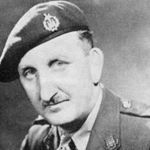
The Citation for the award of the Victoria Cross to Lt Col A.C. Newman The Essex Regt No 2 Commando and Commander of the land forces St Nazaire raid 27/28th March 1942.
Follow this link to learn more about all the Commandos awarded the Victoria Cross
After a brief spell as 2i/c No 5 Commando, the then Major John Malcolm Thorpe Fleming Churchill (later affectionately known by some as Mad Jack) moved to 2i/c No 3 Commando. Wounded during Operation Archery at Vaagso 27 December 1941.
On the 1st July 1942 the now Lieutenant Colonel 'Jack' Churchill M.C. was appointed commanding officer of No. 2 Commando joining them on 3rd July 1942*, their previous OC, Lt Col Newman [more...] , having been taken prisoner of war at St Nazaire. Lieutenant Colonel Churchill remained OC until he was also taken prisoner during Operation Flounced on the island of Brac in 1944.
*No. 2 Commando War Diary July 1942 and Field Returns of Officers in WD (incl. Dec43).
An account by Bob Bishop No 2 Commando from his history of No 2:
"It has been over sixty-three years since this author served under the command of Jack, but to this day it is impossible to think of the man without prefacing my reverie with some kind of exclamation such as: Whew! or My God! and I have to stop thinking about this larger-than-life character or else I wouldn’t get anything done during the day or sometimes, night. Jack will always be with me because he will be part of my life; something that will last and never fade.
Unlike so many of the men he commanded, Jack came from a pretty well-heeled Oxfordshire family. Following his formal education at the Dragon School, Oxford and King William’s College, Isle of Man, then RMC Sandhurst, he obtained a regular army commission in the Manchester Regiment in 1926. His career in the peacetime army came to a screeching halt ten years later when Jack and his C.O. agreed to disagree and Jack resigned his commission.
Jack was recalled to the army at the outbreak of war, served with distinction at Dunkirk and got himself an M.C. After which, he was one of the very first volunteers for the newly-formed Commandos. Jack found himself assigned as Major, and second-in-command of No. 3 Commando. The author wonders about that time. The thought of having three diverse personalities and future Commando legends – John Durnford Slater, Peter Young and Jack Churchill – all under the same roof is frightening! However, it all worked out well – J.D.S. was kicked upstairs, promoted to Brigadier, Peter Young eventually got control of No. 3 Commando, and Jack Churchill was shifted over to No. 2 Commando replacing Lt. Col. Charlie Newman, who had been lost at St. Nazaire.
The ‘coming’ of Jack to No. 2 Commando in 1942 and his subsequent campaign exploits are related elsewhere. In this narrative, the author confines himself to relating his memories of Jack and endeavors to try to convey some truths that need to be recorded and questions that need to be asked now, or they will never see daylight.
This author finds himself somewhat dismayed by various reports that have surfaced from time-to-time which infer that Jack Churchill was a sort of ‘publicity seeker’. For those who have that opinion, I ask them to consider this:
Where is there a book written by Jack Churchill concerning No. 2 Commando depicting himself in a starring role?
Jack has never written anything about his life and times, or caused them to be recounted by some ghost-writer. Thankfully no officer who served in No. 2 Commando has ever caused publication of a book to join the many which were authorized by Jack’s brother-colonels in other Commando units and several accounts written by lieutenants on upwards. The author makes this point, not in criticism of these many published scribes, but to illustrate that Jack certainly had a personal story of unexcelled heroism to tell, but was too darn modest to cash in on it.
There is that matter of a decoration. At Salerno Jack and his runner had operated far out ahead of the Commando and entered the enemy-held village of Pigoletti, whereupon Jack descended on each German sentry post or weapons pit, made its occupants prisoner and delivered them group by group to be guarded by the waiting runner. When the count was made it amounted to 42 prisoners Jack had taken. He even made the German mortar crews carry out their own mortars. The prisoners with all their weapons were then handed over to the leading Commando troop when it finally caught up with Jack. For this audacious feat of arms Col. Jack was recommended for the Victoria Cross, which was in due course watered down to a D.S.O. WHY? The award of the V.C. had certainly been made as a result of actions concerning far-lesser valour.
The qualities of leadership displayed by Jack’s fellow Commando colonels, Lt. Cols. Durnford Slater, Peter Young, Derek Mills-Roberts, Lord Lovat and Ronnie Tod, were all recognized by their promotion to the rank of Brigadier. They were all grand leaders who deserved such recognition. BUT Jack was not promoted. In fact, we have to sadly note that in 1948 he had been demoted to the rank of major engaged in the thankless task of keeping Arabs and Jews from each others throats in the Palestine mandate. It is thought that Jack had fully deserved the promotion which was awarded to his peers, but somehow denied to him. WHY? again.
It is said by many fanciful writers that Jack went into action in No. 2 Commando ‘resplendent with bow and arrows’. Where? The author participated in everyone of the Colonel’s operations in No. 2 and only saw our Jack adorned with claymore, bagpipes, an American M-1 carbine, sometimes a 45 automatic, haversack, helmet with large S.S. badge, and map case. Wasn’t that enough?
Jack much admired the discipline and enthusiasm of the average German soldier. He once stated ‘that was what made them such wonderful soldiers’. He compared such qualities rather favourably with those who inhabited our ‘mass-produced army’. He always advocated more realistic training for the ordinary British soldier although he fully realized that it would be impossible to put the whole army through Achnacarry.
Jack, the man, was hard, if not impossible, to get to know. He lacked a certain rapport with his brother-officers and certainly never got close to the rank and file boys in the same way as Charlie Newman. But, then again, Charlie Newman’s fatherly attitude was a tough act to follow and Jack Churchill’s pale, steely-blue eyes were fixed on the prosecution of the war and nothing else.
Our ‘Mad Jack’ once gave himself to prose, writing that:
"No Prince or Lord has tomb so proud
As he whose flag becomes his shroud"
Lt. Col. J.M.T.F. Churchill, D.S.O., M.C., a.k.a. ‘Jack' and 'Mad Jack’ passed on March 8, 1996. He was 89."

A difficult man to describe - perhaps he was not as fatherly as Lt Col Newman, more like an uncle I suppose, and not as autocratic as Jack Churchill. His style was more ‘laid back’ and easier in the manner of many South Africans, but when you looked at Ted you knew that he had ‘seen’ life. Although this author is second-to-none in his admiration of ‘Mad Jack’ and considered him to be the ‘bravest of the brave’, after two and a half years of serving under his command Ted was regarded with an expression of some relief. This quiet man who had taken over, we all knew, was going to be o.k. It was as though someone had said “It’s time to lighten-up a little, boys!”.
In October, 1942, at Lerwick in the Shetlands, Ted became the titular head of ‘Fynn Force’, a group of Commandos formed with the purpose of making life uncomfortable for the Germans in Norway. Ted led attacks on objectives in Southern Norway. The first assault was on Stord Island where Ted blew up a pyrites mine at Lillebo. A highly successful raid, Ted managed to get this job done with the loss of only one Commando K.I.A. Other operations followed. Ted said nothing of this background when he joined No. 2 and went on to lead the Commando in action at Himare, Albania July ’44 and Sarande, Albania October ’44. Shortly after these operations, the author was seconded to S.O.E. and that was the last he saw of Ted.
Ted won the M.C. in 1943 and was also awarded the Bronze Star (U.S.A.) for his leadership of No. 2 Commando at Lake Comacchio 1945.
The author would like to relate an episode from Ted’s tenure with No. 2. Ted had gotten himself married in Bari, Italy, with a good attendance at the ceremony by officers and others. He was later asked by someone , “How did the night go?” Ted then said, “Well, do you remember what Charlie Newman said when he was awarded the Victoria Cross?” The enquirer replied, “What did Charlie say?” Ted then smiled and uttered the historic words:
"I GOT IT FOR THE WHOLE COMMANDO."
There is a worn-out cliché which goes as: "They came from all walks of life". It is descriptive and fits, so we will use it one more time because it certainly describes the pre-service backgrounds of the people who took their places in the ranks of No. 2 Commando. They were an interesting assortment and what follows is some insight as to how their lives unfolded and sometimes terminated.
nb. click/touch the names for additional info
Joe was a former Isle of Man taxi-driver who was an old hand from the Independent Company days and was there from the beginning of the Commando. Awarded the Distinguished Conduct Medal Joe almost made it to the end of the war, K.I.A. 27 February, 1945, Age 39, at Lake Comacchio, Italy.
Dennis was a student from Birmingham, although judging by his age probably schoolboy would have been more accurate. This lad fought in the battle of Dragone Hill in the Salerno landing and was K.I.A. 13 September, 1943. Dennis was 18.
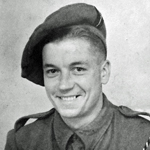
Johnny was educated at an expensive finishing school in Belgium. He came from a family that operated a flourishing restaurant business in London. Johnny was in the campaigns in Sicily, Italy, Yugoslavia and Albania. He was commissioned from the ranks as a Lieutenant in 1945. The thing that the author remembers most about Johnny is that he got on our nerves relating about yummy hot roast beef sandwiches at his family restaurant while we were in the process of consuming our usual meal of corned-beef and hard-tack biscuits.
The men of No. 2 Commando were indeed a quiet group of men who worked very well together. They said very little concerning their pre-war backgrounds. The Sergeant who was in civil life a floor-walker in a department store was always on very good terms with the bookie (sorry, I mean turf-accountant) and the scion of a wealthy family with huge land holdings and business companies was quite at home commanding his group of men which included men from such diverse backgrounds as a gardener and part-time grave digger, a Lloyds Bank management trainee, a former office-boy, a rather elderly building contractor, professional soldiers, a solicitor, labourers, an elementary school-teacher, a couple of lorry drivers and a former communist party worker. The list of pre-war vocations could go on ad infinitum.
Some time statistics will tell a story or be informative, the author has thought of a few:
The average age of the soldiers of No. 2 Commando was 23. The youngest member of the unit to fall in battle was aged 18 and, at the other end of the scale, the eldest man to be K.I.A. was aged 45.
The volunteer soldiers of the Commando came from 54 different Regiments of the Line and from all the Corps of the army with the exception of the Corps of Military Police. Somehow, strangely enough, the lack of C.M.P. representation was not a cause of great concern or sorrow to the troops.
The South Lancashire Regiment (The Prince of Wales Own) supplied the largest contingent of the volunteers, with the Royal Artillery coming in second place.
The origins of the 2 Commando boys lay in many far-flung lands. As the author’s memory goes they were from England, Wales, Scotland, Canada, Southern Rhodesia, Palestine, Switzerland and the Republic of Ireland plus a couple of lads who were refugees and thus, stateless.
Only one soldier of the Commando had seen service in World War I. That was Major Bill Copeland who was awarded a D.S.O. for his role at St. Nazaire.
Only one officer had been with the B.E.F. at Dunkirk. That was Mad Jack Churchill himself. The author muses that if the B.E.F. had all consisted of men of the calibre of Mad Jack, history would now be describing Dunkirk as an attack instead of an evacuation.
About 30 percent of No. 2 were graduates of Achnacarry. This percentage dwindled as No. 2 was forced to replace its losses in 1943, 1944 and 1945 with volunteers recruited from Gibraltar and also the 5th and 8th Army in Italy. Alumni of Col. Charlie Vaughan’s finishing school were inclined to be a trifle ‘snobby’ about their training background. As the news of the ardours of Achnacarry became public domain, the Achnacarry boys were possibly even more insufferable.
What always united the men was their supreme, sincere regard for the family of No. 2 and their collective desire to stay put in its ranks. According to what information this author can assemble, about 72 men (all ranks) were ‘Returned to Unit’ for one reason or another. Although any man was free to do so, only a handful of the men decided to leave the Commando of their own volition. They were never allowed to return.
These have been an odd collection of thoughts of this, now 83 years gone, author who can only now say that it was good to be one of THE MEN.
nb. The above account is part of the overall history of No 2 Commando by Bob Bishop No 2 Cdo.
"The frustrations of 1941 dragged on almost to the end. It had not been a good year from the offensive-action viewpoint of the men of No. 2 Commando. They had done nothing to speak of and were upset at being unemployed. However, the Vaagso raiding force announced the end to this inertia, commencing warfare on December 27th, 1941, landing on Maaloy Island and overrunning the place in less than ten minutes.
The Vaagso operation was a No. 3 Commando affair. Lt. Colonel John Durnford Slater took along all his boys numbering close to 500, all ranks, and No. 2 Commando got into business by providing two troops – about 127 men, all ranks – as part of the raiding force.
This author was not invited to this party. He was ‘miffed’, as were about 323 other members of 2 Commando from Lt. Colonel Newman on down who also had received no invitations. Inasmuch as these writings are supposed to be ‘as seen through the author’s eyes’, I cannot describe the raid happenings because I was not there.
The History of No. 2 Commando will include their participation alongside No. 3 Commando in this successful raid. There had been 20 Commandos K.I.A. and 57 wounded, mostly No. 3 men. The author and the rest of the still-unemployed men settled down once again to the process known as ‘waiting your turn’."
(nb. This report was originally written for the No 2 Commando history section by Bob Bishop No 2 Cdo. and therefore relates primarily to their role)
"If any reader of this attempt to record the history of No. 2 Commando has gotten this far, he or she will have noted that the pride of place, on Page 1, has been given to the remembrance of the men of the Commando who died in the course of No. 2 Commando operations, including the men who did not return from St. Nazaire.
It now becomes a duty of this author to allow a similar pride of place in this account of St. Nazaire to the men of our brother Commando units who participated in the raid and remain alongside the Fallen of No. 2 Commando. It is with pride and a deep sense of comradeship that the author records those names. (click on the link below).
The Roll of Honour of Commandos who died during Operation Chariot.
To the other members of our brother Commando units who also fought alongside No. 2 Commando and who suffered wounds or capture, the author, some sixty-five years after the fact, offers his belated, sincere thanks.
The Nominal Roll of Commandos who took part in Operation Chariot.
In the lovely town of Ayr in Scotland, during the early weeks of 1942, the No. 2 officers and men were engaged in their normal training routines centered around our seat of power which was Number Two, Wellington Square, our H.Q. Absent from that location was Lt. Col. Newman, the C.O. Our Charlie was off somewhere and was gone for quite extended periods of time. Sgt. Blattner observed to this author that he thought ‘it a bit weird!’ He noted that Mrs. Newman had been seen that day, so the Colonel was obviously not on leave, and concluded that maybe, just maybe, something might be coming up. Meanwhile, the second-in-command, Major Bill Copland, continued to control the Commando giving no clues as to the reason for the absence of Charlie Newman. As it was, Bill Copland did not know anything more than we did, although he continued to act on some rather unusual requests relayed from Charlie who was ‘somewhere’ down South.
At the usual morning ‘roll-calls’, however, we could not fail to notice that five or six places in more than one troop were now ‘gaps’ in the ranks. The missing men had been sent off to various parts of the country and, reaching such unspecified destinations, were doubtless puzzled as to why they were being instructed in the technical matters of dry-dock pumping equipment, power-hoist motors and general dock and maritime installations. However, security was tight and the boys obeyed the Commando Commandment: ‘Thou shalt not run thy mouth in idle rumours’.
All our wonderings ceased when Capt. Mike Barling, our medical officer, was joined by a second doctor, Capt. Dave Paton. We knew then that we were not being given two ‘M.O.s’ for nothing. Something was in the wind for sure! The same day well over half the Commando was given instructions to report with full kits, which were to be turned into the unit storage shed. Some of the men who were not so instructed did not like being left out of the proceedings, resenting the slight – especially the ‘old hands’ who muttered about seniority or something.
The old cross-channel ship ‘Princess Josephine Charlotte’ conveyed the lucky participants-to-be from Ayr to Falmouth. Everyone’s morale was sky-high, the food was good, duty-free cigarettes abounded, and all was right in the Commando world, as we knew we were at last on our way to somewhere to actually do something!
The boys of No. 2 soon resumed training following disembarking from the ‘P.J.C.’. Nothing very much was different from the usual regimen of long, forced marches in daylight and darkness, weapons drills, and the usual emphasis on maintaining top physical condition. On March 18th Lt. Col. Newman finally outlined the details of the forthcoming operation to the assembled Commando. Charlie gave a remarkably clear and concise presentation of the overall objective, together with detailed descriptions of what the various tasks groups were expected to perform. It was amazing how the Colonel had condensed the 80 page operational order that he had received down to an easily-understood situation talk. He concluded his informative duties with a question: ‘What do you think of that?’ He was answered by a roar of approval that shook the closed room where we had been assembled.
The briefing that the Colonel had conducted had not included the mention of the location of the objective, which resulted in ‘head-scratching’ from past geography lessons. Was it to be Cherboug? L’Orient? Brest? or, maybe, Le Havre? It was not until almost the eve of sailing on March 26th that the Commando knew that it had a one-night engagement booked for St. Nazaire.
If this author remembers correctly, it was on the minds of several of the men that many more officers were showing up at Falmouth. Indeed, there were 25 familiar faces of No. 2 Commando officers now present among us. As there were about 215 members of the Commando remaining in Ayr, and the total ‘table of organization’ was 26 officers – Who was minding the store? Someone suggested that the Padre was calling-the-role at the morning parades up there! Even Major Bill Copland, who had been in charge at Ayr, arrived and smiled his usual greetings. The mystery of ‘so many officers’ deepened when someone pointed out that there also were 15 more officers – the ‘guest-workers’ from the other Commando units. We were now looking at a total of 40 officers! Mathematics was quickly brought into play! The equation of 220 Commando other ranks divided by 40 Commando officers revealed the astonishing ratio of 5.5 – One officer for every five and a half men!
This author still wonders why so many officers were among us in those days. A Commando officer always was the man who led from the front. He was the most eager of the eager-beavers, but also very difficult to replace and train to the level of Commando expertise required. It is thought, looking backwards to those days in March 1942, that quite possibly some of the officers who were there could easily have been substituted for by the experienced sergeants and corporals who had been left behind ‘crying in their beer’ in Ayr. However, all this was conjecture on the part of the Commando men. The force assembled was what it was, the dice had been rolled, and that was that.
On March 19th, the Colonel told the men that Mountbatten, (Admiral Lord Louis), had informed him a few days previously that ‘We are writing you off!’ and that he was confident that the Commando force could get in and do the job, BUT ‘we cannot hold much hope of you getting out again’. He also passed on Mountbatten’s comment to the men which was to the effect that ‘any man could volunteer out of the forthcoming operation should he wish to do so’. Charlie, however, had been wasting his time in passing on Lord Louis’ offer. Everyone stayed put, satisfied in their work, and of course, laboring under that strange delusion – their own immortality.
Time in Falmouth passed. On the evening of March 25th, the Commandos boarded their motor-launches and passed into the care of the Royal Navy. For security reasons, everyone was ‘ordered below’ and thus passed the night and the following morning somewhat grumpily, ‘below decks’. At 2:00 p.m., March 26th, the motor-launches, together with the other vessels in the little convoy, sailed out of Falmouth harbor and set a course for St. Nazaire. Our motor-launch was just like the other 15, thirteen of which were carrying Commandos. It had a wooden hull and wooden decks and carried some light anti-aircraft armament. On its deck, aft, there were two large steel drums containing petrol. One of the men pointed out sagely, ‘those things will set us all up in a fireball if anything hits them’, and Cpl. A.H. Smith, acting in the role of a ‘counter-sage’, observed that we would hardly be able to make the return trip without refueling. Thereafter, we looked at the 500 gallon tanks with something akin to affection.
The naval force with its Commando passengers sailed on, first in its daytime cruising formation, and then to the night alignment until just after 8:00 p.m. on March 27th, when the force maneuvered into attack order about seventy miles off St. Nazaire. The disposition of the Commandos was that the attack (sacrifice) destroyer, H.M.S. Campbeltown, had on board 80 Commandos. Charlie Newman and his Commando group were in the motor gun boat (also of wooden construction like the motor launches), and 185 Commandos were being carried in motor launches. This was the ‘order-of-battle’ as the force entered the estuary of the River Loire.
Up ahead of the ships something was happening that did not fit the plan which had included a sharp, diversionary bombing attack on certain areas of St. Nazaire. There was no mass of searchlights with their beams of light crisscrossing in the sky. None of the 88 mm and 40 mm guns were pouring streams of shells upwards. These absent things we noted with some concern. Other benefits of the air-raid would have been many German soldiers and sailors, not employed on the guns, seeking safety in air-raid shelters. As it happened, the desultory far-off bombing that had occurred, put the German defenders on a high alert and they were ready with their searchlights and A-A guns which they depressed to low-angle use. Amazingly enough to the men aboard the M.L.s we were not subject to hostile fire until 1:22 a.m., about eight minutes before the Campbeltown was scheduled to ram itself into the caisson of the Normandie dock at 1:30 a.m.
The battle that was joined at 1:22 a.m. would last about four hours on shore in St. Nazaire and just a little longer in the estuary of the River Loire. The most important objective of the operation, the immobilization of the Normandie dock, was completed some hours later at about 9:30 a.m., when the huge charge of explosive encased in the bows of H.M.S. Campbeltown, detonated, lifting the caisson from its base. In general, the demolition groups who had wrecked or blown-up the ancillary machinery which operated the caisson, were drawn from the men of the other Commandos. The protection groups for these guest-workers were, in the main, the men of No. 2 Commando, who also had supplied the troops forming the assault parties.
Apart from the Commandos who had disembarked from the Campbeltown, the other No. 2 troops attempting to land from the motor-launches experienced severe difficulties. Illuminated in the glare of searchlights, they were subjected to a virtual storm of gunfire from the German defenders on shore. Many of the launches with their navy crews and Commandos were destroyed. Few of the M.L.s managed to land their troops. Most were destroyed when their intrepid sailor crews did everything that they could to fulfill their tasks.
This author did not see this incident, but it is said that Colonel Charlie Newman, on arrival at the theoretical re-embarkation point with his group of survivors from the previous fighting, remarked that ‘there goes our transportation home!’ He was, of course, regarding the burning hulks of the M.L.s in the river when he made that appraisal. It follows that Charlie and friends then attempted to escape to the countryside beyond the confines of St. Nazaire by fighting their way through the old town. The attempt to prolong the fight and evade captivity failed as they ran out of ammunition and were slowed down by the increasing numbers of wounded in their midst. Only five men from the Commando force succeeded in eluding the cordon of German soldiers who had just about entirely sealed off the streets and exits from the town. Cpl. Wheeler, L/Cpl. Douglas, L/Cpl. Howarth, L/Cpl. Sims and Pte. Harding all, somehow, managed to trek all the way through France and Spain to Gibraltar, from whence they were repatriated back to Britain and No. 2 Commando.
It is pretty much fair to say that if a Commando landed at St. Nazaire he was either K.I.A. or made captive. Those survivors of the raid were almost exclusively from the men of the M.L.s in the River Loire who somehow survived their ordeal in what seemed at the time to be a ‘river on fire’. Of the Commandos who had entered the Estuary some seven hours previously, 64 had been K.I.A. and 156 were being led into captivity. Among these, now prisoners-of-war, were over 80 men who were wounded in action. The Royal Navy casualties were even higher, as twice as many sailors had participated in the raid as there were soldiers present. 105 Navy men were K.I.A. and 106 were taken prisoner. Of the 18 motor launches that had entered the river on the night of March 27-28, 1942, only four eventually made their battered and bruised way back to Falmouth. Overall, out of a total of 611 Commandos and sailors committed, 403 would not return.
The comrades of the Commandos, the sailors of the Royal Navy, more than upheld the highest traditions of the Senior Service. If across the passage of time this author could convey a message to the Navy’s illustrious Admiral Horatio Nelson, it would read something like: ‘At St. Nazaire your descendants also fought in wooden ships, and they had hearts of oak, brave and true.’
Some ‘aftermaths’ of St. Nazaire are recalled. Among these are, Capt. Mike Barling returning to Ayr to find himself as not only the unit’s Medical Officer, but also, the senior rank present in No. 2 Commando.
Pte. Fred Peachey was in hospital at Devonport trying to recover from a serious wound that he received in the River Loire. Did this later-to-be Sgt. Peachey have any premonition that this was only the first wound he was to suffer? Fred was to be wounded again at Salerno and, for the third time, at Lake Comacchio.
Lieut. Joe Houghton was not very far away from Fred in the same hospital. It is as well that this super officer did not know that in less than seven months hence he would be executed near Berlin by some thugs carrying out Hitler’s commando execution order.
L/Cpl. Ivor Bishop, who had just seen R.S.M. Alan Moss make heroic efforts to save fellow Commandos and lose his life as a result, could have no inkling that he, Ivor, would be promoted so fast that he would be the new No. 2 Commando R.S.M. in far-off Yugoslavia two years hence.
Then there was the time about a month of so after the raid. The author was returning to his billet in Ayr, and Mabel, his wonderful, kind landlady, rushed out to meet him, tears rolling down her face, proclaiming: ‘Wicky is safe! Wicky is safe!’ L/Sgt. Lionel Wickson, who had shared this billet with us prior to leaving for St. Nazaire, had notified her through the Red Cross that he was a P.O.W., alive and well.
Somewhere, someone coined the phrase: ‘The Greatest Raid of All’, and since that time, those words have been used to describe the mainly No. 2 Commando operation at St. Nazaire. Whoever came up with that accolade? I don’t know who, but I certainly wish that he had not done so as it implies a sort of second-rate status to the many other actions that have been fought with equal bravery and losses in men by the other Commandos. This author has the opinion that no one Commando had any monopoly on efficiency, skills, or in the severity of the actions in which they fought. This author would have been proud to have served in any one of them!"
nb. The above account is part of the overall history of No 2 Commando by Bob Bishop No 2 Cdo.
|
Is this defencless port the place
That once I came to wreck? Is nothing manned at my approach, And no one armed on deck? No, nothing now’s afloat to sink, Nor on the shore invade These by the coach are teachers. These in the boat want trade. And over old unhappy things Pacific Ledgers mount, Deals must have duplicates, and lives, That had no copies count, |
And children come with flowers
To place where teachers bid, Who never heard of Goering, Or ask what Goebbels did . . . O glittering wings, so suddenly high in the vacant blue, Stay, till to-day dies normally, And normal nights ensue! Never again the premature, Never again the pain. And a rose for those who went in first, And where they fall remain. Michael Burn M.C. 1997 |
"It was on a day in late July, 1942 that the author noted the absence from the ranks of his troop of Capt. Graeme Black, Pte. Eric Curtis and Rfmn. Cyril Abram. At the same time, men of other troops recorded that Capt. Joe Houghton, Sgt. Richard O’Brien, L/Sgt. Bill Chudley, Pte. Reg Makeham, Cpl. John Fairclough, T.S.M. Miller Smith and Pte. Fred Trigg had also vanished. No member of No. 2 Commando had any inkling as to the significance of these disappearances, but as usual, no questions were asked.
The author and everyone else in No. 2 had no news of this operation, or the fate of the men who participated in it until long after No. 2 Commando had been disbanded. Indeed, it was not until the proceedings of the Nuremberg War Crimes Trials unfolded that they learned about the raid and the criminal imprisonment and execution of seven of our comrades in Sachsenhausen concentration camp. Only Pt. Fred Trigg, Sgt. Dick O’Brien and Cpl. Jack Fairclough had evaded capture by escaping to Sweden. These three men had later returned to service in No. 2 Commando and Pte. Fred Trigg was later killed in Italy in 1944.
A splendid, accurate account of this operation is contained in the pages of the book ‘Mustketoon’, written by Stephen Schofield, first published in 1962. This author commends this book to others, considering it to be, in his opinion, the best-recorded account of any Commando operation to have been published.
The leader of the Glomfjord raid, Capt. Graeme Black, was from Dresden, Ontario, Canada. He was the only Canadian to serve in No. 2 Commando. Capt. Black had been twice wounded at Vaagso and received the M.C. for his gallantry in the field. He became the leader of the 10-men group from No. 2 who landed from a submarine and made their way to their objective – the large hydro-electric power station at Glomfjord. The destruction they caused was hugely out-of-proportion to the small number of men involved in the operation. During the attempted escape, Capt. Black and six others were captured and later executed.
In 2004 my Canadian wife, Janet, and I communicated Capt. Black’s story to the Royal Canadian Legion Branch President at Dresden, Ontario, thinking that on the upcoming November 11th Remembrance Day they would make known Capt. Black’s heroic deeds in his home town. It is to my everlasting disappointment that the Legion decided not to mark his courageous passing. He has never been forgotten by this author who first served with him at the age of 18 and who has always been honoured to have known him."
nb. The above account is part of the overall history of No 2 Commando by Bob Bishop No 2 Cdo.
Read more about the raid and the raiders here in our WW2 Commando Actions section.
"On the 22nd July 1943, No. 2 Commando arrived in Sicily. They had come from Gibraltar, calling at Algiers, Bone, Phillipville, Tunis and Valleta, in Malta, along the way. This author and ten others had been temporarily detached from the Commando a few months previously to attend to some S.S. Brigade unrelated business in North Africa. We rejoined the Commando on board ship in Valetta harbour and got acquainted with some new faces that had volunteered to join us from the Gibraltar garrison. Some of these ‘newly-minted’ Commandos come to mind. They had left their N.C.O.’s stripes on the ‘rock’ as an entry fee required to become ‘members’ - Pte. Bill Woolley, Pte. Des Rochford and Pte. Albert Myram who would win an M.M. for himself on the last day of fighting in Sicily.
The campaign in Sicily was not very noteworthy to 2 Commando. We resided in the dirty and mosquito-infested olive groves between Augusta and Catania and did nothing too much in the way of plying our trade until August 15th. Up until that date No. 3 Commando had done the ‘heavy-lifting’ in Sicily and Lt. Col. John Durnford- Slater was probably a most-satisfied commander. For some reason or other, at the same time, our Colonel Jack was not the most-contented of men.
No. 2 Commando came off the unemployed list on the night of August 15th, landing at Scaletta – a small coastal town well behind the supposed German lines, about 15 miles or so south of Messina. Our landing was a bit off the intended spot, but no matter, as we soon were engaged with the luckless tail-end of the German rearguard who were heading at top speed towards their evacuation point at Messina. The enemy vehicle drivers and their troop passengers didn’t have much of a chance and the fight was over in short order. The following morning it became apparent that several soldiers of the German rearguard had ‘holed-up’ in houses and other buildings in Scaletta. Some rather-bitter street fighting followed on the morning of August 16th, resulting in casualties on both sides.
No. 2 killed in action or died of wounds
They were buried alongside many more of their comrades from No. 3 Commando at Catania War Cemetery.
Following the conclusion of the fight at Scaletta, ‘Mad Jack’ and a few officers piled into a vehicle (the author cannot remember if it was a captured ‘Kubelwagen’ or an automobile). They headed for Messina at high speed brushing off other ‘eager-beavers’ who tried to join them. Arriving in Messina, Jack discovered, much to his chagrin, that the Americans had gotten there first during the previous night. Reflecting now on that day, it seems stupid to have put any value on who had entered Messina ahead of anyone else. The bragging rights really belonged to all the British, Canadian and American soldiers who rejoiced at being alive on that day the campaign in Sicily ended."
Note: National Archives references for research of this operation. [view].
nb. The above account is part of the overall history of No 2 Commando by Bob Bishop No 2 Cdo.
"The 379 page book ‘Operation Avalanche’ by authors Des Hickey and Gus Smith details the Salerno battle as compiled from lots of painstaking research and interviews with several veterans of that nasty battle. After reading the book and casting my memory back to that time, Sept. 9th to Sept. 17th, 1943, this author found the book entertaining reading, although, he was unable, for the most part, to reconcile his remembrances with the printed words of Gus and Des. The author was a non-erudite 19 year old at Salerno, rather an unimportant member of No. 2 Commando, but he was there, and come to think of it, Gus and Des, he imagines you hadn’t been born at that time.
As this author saw it, the landing on the beach at Vietri, which was a little suburb of Salerno, at 3:30 a.m. Sept. 9th, was an absolute breeze! The ramp of the L.C.A. went down and his Troop, No. 4, made a comfortable, dry landing. Not a spot of water on our boots. Needless to say, the boys were not at all unhappy to find that there was no ‘welcoming’ party awaiting our arrival - indeed, no signs of any angry men in grey hanging around. Meanwhile, ‘Mad Jack’ at the head of his troops passed through us in a cloud of dust and speedily captured a battery of German field artillery guns which could have fired on the invasion ships from their positions on the hills about the beach. The author and his friends passed the next four hours doing nothing but watching and waiting, until the next crisis arose. We ran out of ‘smokes’! It should be explained that Colonel Churchill never allowed us to be slowed down by carrying the heavy back-packs containing our reserve ammunition, spare clothing and personal stuff such as food and cigarettes. The overwhelming criteria in ‘Mad Jack’s’ modus-operendi was speed and then more speed to close with the enemy. He reasoned there was always plenty of time for us to get our heavy packs later.
The German Army boys could never be accused of being slow to react to a situation, and somehow they mustered enough mortar crews in the hills above the beach which started plastering the area with their bombs. A few M.G. 42 machine guns also started to sweep the sands from time to time. The landing craft crews did not like this atmosphere at all and refused to stay for our lads who were waiting to unload our packs. The faint-hearted sailors shot off from the beach taking with them our reserve ammunition and the other items of our gear – including that essential life-support item, our cigarettes! Nelson would have had that miserable lot keel-hauled! Furthermore, when they fled back to their ships they caused considerable consternation by spreading the story that Vietri was in enemy hands. This nonsense was, of course, untrue. The Vietri beach was only occupied by a gloomy bunch of Capt. Tom Hemming’s boys who were watching their means of survival fade into the distance.
Our little group (still smokeless) was then detailed to get up to the coast road, which any enemy reinforcements from the North would have to use, and take up a blocking position astride the highway. We marched up the scrub-covered hill until we came to a road and started to site our bren gun position. At that moment we heard a tremendous roar and were showered with debris from an explosion. The Germans had managed to place and detonate a large cratering charge in the middle of the road. After the dust had settled a bit we observed two German sappers who had done the deed leaving the scene. These two soldiers never lived to receive congratulations on job well done from their superiors! Tpr. Gordon David, an ex-cop, brought both of them down with two well-placed shots. We buried them in the crater that they had made.
All through that night and the following morning we heard the rattle of automatic weapons and the thump of grenades as the troops of No. 2 patrolled the hills and two small hill villages above our heads. They and the boys from our companions, No. 41 R.M. Commando, prevented infiltration by the enemy, maintained strongpoints on strategic features and took prisoners. One report reached us which told of Capt. John Henderson taking on and knocking out a PZKW Mk.4 Tank with that crude PIAT mortar weapon. Also there was an account of Sgt. William Rudge with Pte. C.E. Smith taking on a patrol of five panzer-grenadiers, killing all of them and returning with their weapons and identity discs. Although we were taking steady casualties from these activities there was no cause for alarm as we were supposed to have been relieved by a 46th Division battalion after 48 hours. More wishful thinking!
The morning of the 11th is noteworthy for three events. First, ‘Mad Jack’ had announced in a very quiet voice – one could barely hear him – that he ‘thought the Commando had been efficient in its operations’. The second event was the arrival of our large backpacks (thoroughly looted), dumped on the beach. The third event was the contact on the left flank of the Commando with our old friends, the U.S. Rangers. The Rangers’ young officer said to the author by way of presenting his credentials ‘I was at Achnacarry’. Charlie Vaughan would have liked to hear his school being used to establish bona-fides. Then this likeable soldier just about emptied his, and the pockets of his seven men, of packs of cigarettes and gave them to us. He said for us not to worry as ‘they had stacks of butts back there’!
In the evening of Sept. 12th, we moved into the village of Dragone and onto the slopes of the hill behind the little place. The author thought it strange that so many of the Commando were being concentrated at this one place. Maybe there were 150 to 160 men there, the actual number is not given in the 2 Commando War Diary because no actual count was ever taken. The sounds throughout the night were unmistakable – transport, tank engines, even voices of German paratroopers, panzer-grenadiers and nebelwerfer crews. The men of 2 Commando readied their weapons and waited as did the Marines of No. 41 Commando close by us. The ensuing battle which commenced by a saturation coverage of our positions by the nebelwerfer rockets started just before 6:00 a.m., was later described by Lt. Col. Churchill in one sentence: ‘There had been a terrible battle at Dragone’. For ‘Mad Jack’ to use those somber few words to tell of what happened gives one some idea of the severity of the action. Even our leader, ‘the bravest of the brave’, was stunned by the horror of that morning of Sept. 13th. This author has decided not to revisit that hill by recounting a blow-by-blow description of the battle, but instead to remember the friends that were lost, and to recall his joy at seeing the faces of some of his comrades who had somehow endured the horror of that morning and survived.
The battle of Dragone claimed the lives of
In addition, 53 members of No. 2 Commando were wounded in the struggle for Dragone Hill, Sept. 13th, 1943.
Pte. John Barry of Yorkshire, age 22, and Pte Alfred Blower of Liverpool, age 25 died of their wounds.
The author would like to share an incident concerning the battle at Dragone with others. It came during the counter-attack made by the Commando. A group of four men, including two walking-wounded, found themselves in a narrow cobbled alley which passed for the main street of the hamlet and saw two German paratroopers, with weapons slung across their backs, attempting to carry a wounded comrade to safety. The No. 2 boys knew that they were paratroopers because of the bulbous trousers and distinctive, rimless helmets. The paratroopers turned and found themselves looking at our four with weapons pointing in their direction. The N.C.O. leading our group said: ‘No firing lads!’ and motioned with his arm for the Germans to keep going and get their wounded man out of there. One paratrooper raised his arm in acknowledgement and they vanished around the corner of the alley. It seemed to this author that, at that moment, humanity had arrived to reassert itself in his world.
The day after Dragone, No. 2 Commando was moved into Salerno for rest and refit. The author and the others had been ‘on the go’ since the night of the landing five days previous and had not been allowed to get any sleeping time in, other than snatched ‘cat naps’. We rested, washed ourselves, and tried to remove some of the filth from our uniforms. Once again, that Commando curiosity, nothing was said about the previous day’s battle. Our Colonel Jack was very busy reassigning people to new responsibilities. T.S.M. Richard Tomlinson offered congratulations to ‘Mad Jack’ – it was the Colonel’s 37th birthday. Jack looked puzzled and replied, ‘Birthday? Yes, Hmph!’, and passed on. He had been summoned to a conference at Brigade H.Q. as there was an area of trouble elsewhere in the beachhead that required his whole attention. On his way out, ‘Mad Jack’ said to no one in particular, ‘Get ready to move at a moment’s notice!’
The Commando duly moved to Mercatello, about three miles east of Salerno. Our friends, 41 R.M. Commando, had also moved at the same time. On arrival, we were informed that a serious situation had developed in the valley below Pigoletti during the previous night and he (the Brigadier) wanted the Commandos to ‘sweep’ the area and clean out the enemy forces.
The ‘sweep’ was performed with Commando elan. Our boys, with the 41 lads alongside, went up the valley in the dark, all yelling ‘COMMANDO!’ at the top of their voices. Jack led the way, far ahead, and as is related elsewhere, took 42 prisoners virtually by himself. A short distance away, Capt. Tom Hemming, accompanied only by his runner, Pte. Bill Davidson, also grabbed nearly 40 prisoners. Having completed the requested ‘sweep’, the Commando returned to its start line bringing with them a total of about 150 German soldiers that they had taken prisoner. However, this was not the end. The Commando, as a result of a change of plan, were ordered to retrace their steps and occupy the same areas once again. The weary men of No. 2 and 41 returned to Pigoletti and a feature known as ‘The Pimple’.
During the course of the next two days the Commandos held their positions with their losses steadily mounting. Capt. The Duke of Wellington and his T.S.M. Lindsay Garland both were lost leading an attack on Sept. 16th, as was Pte. Joseph Jackson from Warrington. Many more army and marine Commandos were among the fallen before the two Commando units were finally relieved on the evening of Sept. 18th. The battle for Salerno had been won and the men of No. 2 Commando who had come through it all could now await their removal to Sicily where they would recruit and rebuild once again.
Here we look at statistics once again: No. 2 Commando and No. 41 R.M. Commando together had 367 killed, wounded or missing out of the 738 who had landed in the Salerno operation. Not one Commando was taken prisoner by the enemy.
The men of No. 2 Commando will never forget their comrades of No. 41 R.M. Commando. To these warriors of 64 years ago, the author wishes to record his belated appreciation and say that it was an honour to have taken the field alongside you!"
nb. The above account is part of the overall history of No 2 Commando by Bob Bishop No 2 Cdo.
No.2 Commando Officers Gibraltar 1943. Photo courtesy of Mrs Desiree Roderick MBE whose husband Captain Richard Broome was one of five officers in this photo killed at Salerno a few months later.
left to right
Rear rank: Lieut. F.S. Mason (kia Salerno); Lieut. A.T. Brunswick (kia Salerno); Lieut. G.F. Whitfield (awarded the MC in Italy; Lieut. J.E.C. Nicholl ( awarded the MC in Italy).
Middle rank: Lieut. P. Henderson (awarded the MC as a T/Major in Italy); Lieut. T.G.A. Walker; Lieut. H. Barnes; Lieut. D.R. Peters (MC and later a bar to his MC whilst a temp.Major); Lieut. J.D. Rosling (kia Salerno); Lieut R. Bavister.
Front rank: Lieut. R.W.Keep (awarded the MC as an acting Major in Sicily); Capt. R.F. Broome (kia Salerno); Capt. the Duke of Wellington (kia Salerno); Lt. Col. J.M. Churchill (awarded DSO and bar, and MC); Major H.H. Blissett; Capt. R.H. Hooper ( awarded the MC Sicily); Lieut. B. Lees.
In Memory of the No.2 Commando Officers in this photo who were killed in action at Salerno.
85468 Captain RIchard Frank Broome
South Lancashire Regiment and No. 2, Commando
who died age 27 on 13 September 1943
149207 Lieutenant Frank Stanley Mason
Reconnaissance Corps, R.A.C.and No. 2, Commando
who died age 31 on 13 September 1943.
172379 Lieutenant Arthur Trotter Brunswick
Durham Light Infantry and No. 2, Commando
who died age 29 on 13 September 1943.
74664 Lieutenant John Douglas Rosling
Welch Regiment and No. 2, Commando
who died age 25 on 14 September 1943.
56864 Captain Henry Valerian George Wellesley
6th Duke of Wellington.
Duke of Wellington's (West Riding Regiment)and No.2 Commando
who died aged 31 on 16 September 1943.
"As the No. 2 Commando War Diary states, the remnants of the unit, following the Salerno campaign, were redeployed to Catania, Sicily. For once they were not lodged in their usual dusty field. By some accident they had been given a roof over their heads in the shape of a former Italian barracks.
These happenings were unknown to the author who had been placed aboard a hospital ship and was on his way from Salerno to Tripoli in North Africa. The ship’s medical people quickly removed the shrapnel from both of my legs and efficiently stopped any incipient blood-poisoning. Both legs were clean, but very stiff when the ship docked in Tripoli harbour. Then it was off to the nearby Army General Hospital.
It was natural that the author’s mind was occupied by wondering what was happening to the Commando, and the plans that needed to be worked on concerning the return to No. 2 Commando. Meanwhile, much time was taken up by swimming in Tripoli harbour to strengthen my legs so that I could undergo the long trek back to the ‘family’!
Getting back to one’s unit from hospital was no easy task. In those days, as soon as one was discharged from hospital, any ‘other rank’ was simply put in a ‘transit camp’ and was subject thereafter to be drafted to any regiment that needed replacements. At that time, this author was definitely an ‘other rank’ – his commission was to come later in his career. So, upon receipt of his hospital discharge, and declining a kind offer of transport to the transit camp, he set a course westward heading along the desert road bound for the Libya-Tunisia border on what he remembers as the first stage of his journey ‘home’. What followed was walking, riding on farmers’ trailers pulled by tractors, riding in an ore hopper car on a narrow-gauge railway, sneaking into a covered R.A.S.C. lorry which only travelled about ten miles. But, ten miles was ten miles! And Ben Gardene, Souse, Sfax, came and went and the author found himself looking out at the blue Mediterranean from the Bizerte waterfront. Sicily and Italy seemed so far away. He had by his estimate, walked about a hundred and ten miles so far in addition to the distance covered by the various forms of transport.
The author’s contemplations were interrupted by an American M.P. in a jeep calling out something like, ‘How are ya!’ This good soul was from a U.S. Army Air Corps base nearby and he listened to my story of wanting to get back to my Commando unit. At his invitation to ‘hop-in’ I obliged and then was given over to the care of some of his friends who were crew members of a C-47 (Dakota) transport group. A clean U.S. set of overalls was provided for me, together with washing and shaving gear – plus cigarettes! At 6:00 p.m. that evening I was escorted to a mess-tent and served a meal of steak and canned potatoes, followed by canned fruit-cocktail! The next morning a pilot of the group awakened me and observed that ‘you sure were tired!’ After breakfast we boarded the C-47 and had a nice flight to Catania, Sicily. After enquiries were made at the R.A.F. transit office, it was established that No. 2 Commando was right there in Catania – I WAS HOME!
The Commando that this author had rejoined was very busy. Officers were off on recruiting trips as the number of available men had shrunk to 125 – all ranks. Other Officers had gone on travels to far-off places trying to locate our boys who had been wounded at Salerno, but had since been stuck in transit camps. Capt. Sam Jenkins swooped on a camp near Bone, Algeria, and snatched four of our boys from the clutches of the paper-waving, protesting ‘desk-warrior’ who ran the place, and added insult to injury by recruiting an Officer who looked like a ‘likely lad’ to Sam on his way out of the camp gate.
Our Colonel Jack, meanwhile, had signed up Major Ted Fynn to be 2i/c in place of Dick Lawrie, and having done this, decided to resume ‘training the hell’ out of us. A novel innovation comes to mind. Mount Etna is very close to Catania and Mad Jack decided to take advantage of its near proximity. Our leader ordained that No. 2 Commando would, that night, climb the volcano and would line the rim of its crater by First Light of the next morning. We duly climbed the slopes until we reached the summit. In the dawn’s early light, we found ourselves peering down into the crater. It was kind of weird, but – ‘ours was not to reason why!’
Sometime in early November, we packed up and went by L.C.I.s to Taranto, Italy and thence by train to Molfetta – a town on Italy’s east coast. At Molfetta many volunteers arrived from the 8th Army – Lieuts. Coyle and Parsons among them. Pte. Eric Buckmaster, who had been in the Commando for a long time, was joined by Pte. Stanley Buckmaster, his brother, who volunteered to join us.
Christmas 1943 came and went, and it was – next stop Yugoslavia in January 1944."
nb. The above account is part of the overall history of No 2 Commando by Bob Bishop No 2 Cdo.
"No. 2 Commando started to arrive at Komiza on the Yugoslavian island of Vis on January 16th, 1944. They were to operate on Yugoslav soil for the next six months. The Commando was still much-depleted as a result of the battering it had taken at Salerno, and almost half the unit remaining in Italy consisted of the replacement men and those ‘old hands’ who formed the training cadres.
During the coming months a wide variety of activities would unfold involving: conventional assaults on fixed positions with the classic bayonet charge; pirate-style boarding parties going after any German supply ship that floated; quick in-and-out raids on isolated enemy garrisons; long reconnaissance patrols; manning coast-watching positions in assorted locations; as construction workers helping to build an airstrip; operating the ‘stir-up-trouble’ type of fighting patrols; mental disturbing of enemy troops by our German-speaking boys suddenly arriving with loud-hailers in the middle of the night; and cleaning up after the thoroughly-upset Germans had their Luftwaffe bomb us in retaliation for our endeavours which they did not appreciate. Even if one was a Commando connoisseur, there was something for everyone.
The situation facing the Commando seemed to be a rather simple one. The partisan forces under their leader, Marshal Tito, were being hard pressed nearby on the mainland of Yugoslavia. ‘Mad Jack’ and his troops had been given the task of reducing the pressure by drawing off large numbers of the German 118th Mountain Division. This process of ‘drawing off’ did not take Jack very long to implement. On January 26th, which was ten days after his arrival, he somehow managed to assemble enough decrepit vessels to transport three troops of No. 2 to attack the German garrison near Milna on Hvar. After thoroughly shooting up the place, we returned to Vis with prisoners, who appreciated greatly that their captors were British and not partisans. Not being one who would change a winning system, Colonel Jack twice returned to Hvar and twice repeated the process within five days. The author remembers on the return trip of the last one of these ventures he remarked to T.S.M. Peter Morland that the rickety schooner we were sailing couldn’t possible last another trip.
There was not long to wait before we were at it again. On February 4th Capt. Jack Bare took a troop to attack the garrison at Hvar Town, where unfortunately Jack Bare from Watford, age 29, was killed. The action on Hvar was concurrent with another action by No. 2 Commando, termed as an ‘Officers Reconnaissance’ by our Colonel. This was taking place on Solta and employed the services of Lieut. McMenamin, Capt. S.L. Jenkins with L/Cpl Wright and Dvr. Robert Scholem, who was one of No. 2 Commando’s Germans. This party had been observing the enemy garrison at Grohote which had been earmarked for a ‘visit’ in March on Jack’s calendar. Before this group returned from their work they encountered a large German patrol who opened fire, inflicting mortal wounds on the leader, Capt. Samuel Jenkins, age 29, a former Welsh Rugby international from Carmarthen. Dvr. Scholem made his way back to the safety of a partisan hideout after travelling for over thirty hours on a broken ankle without food or water. It is sad for this author to relate that after all this, poor Bob Scholem was to be K.I.A. in Italy one month before the war ended, age 21.
Meanwhile, ‘Mad Jack’ had added a new dimension to the lives of his boys - PIRACY! Lieut. Michael Stilwell led the first of what was to be many boarding parties and swarmed aboard a German chartered schooner taking 17 enemy soldiers prisoner, after what Pte. Jakeman later described as only a ‘third-class’ fight. These sojourns became very popular with the personnel of No. 2. The Royal Navy had on board their boats the wonderful commodity known as FOOD! The boarding parties ate away most happily while they cruised searching for their next floating victims.
The tenure of No. 2 Commando reached its high point with a textbook operation against the 110 man enemy garrison at a village called Grohote (see Operation Detained 1). It happened on this author’s 20th birthday on March 19th, 1944. About two thirds of No. 2 had arrived to form a horseshoe formation about the village awaiting the order from Jack to move in. I was talking to my friend, Lieut. Jim Coyle about birthdays in general and he gave me the usual ‘Happy Birthday’ spiel. We then attended to the business at hand – 102 prisoners were taken and six of the German defenders were killed. It was most orderly. We sent the prisoners away and told them to pack their personal belongings which they did. We then found a garrison muster-roll belonging to the German officer in charge, and called the roll. As each Hans, Ludwig, Gunther and several Johans answered their names, we realized that we had captured the lot and no one had got away. Perfect! Jack eyed the scene benignly and led us back to our embarkation point. Our only casualty that day was Cpl. Cecil Cox from Sussex, age 24, who died of wounds received in the assault.
The Island of Vis became positively overcrowded by May 1944. Aside from the native partisans, the remainder of No. 2 Commando had long since arrived to be joined by the Marines of No. 40 and No. 43 Commandos and by elements of Artillery and the Highland Light Infantry Regiments. Several of these organizations sought to be included in the ongoing operations, but Colonel Jack was not too sympathetic to any such requests. He was said to have made some observation concerning ‘Too many Cooks’ etc.
About this time our Jack banished to Italy T/Captain Barton MC who had operated some weeks before on Brac on patrol, shot and killed the local German Commandant before returning to Vis with five prisoners. It seemed that he had conducted this business in civilian attire and this had been announced in the UK Press, so if captured Lieut. Barton would have been shot. Jack, who had recommended Lieut Barton for the DSO, could not be moved on the matter.
The major operation ‘to draw-off pressure on the partisans’ was in the works at the planning stage and it called for a major operation by all of No. 43 Commando with reinforcements from No. 40 Commando and partisan forces of up to 2000 men ( see Operation Flounced ). The force was to be commanded by Lt. Col. Jack Churchill. The planned attack, which was to be on a feature known as Point 622 and other adjacent mountain-top fortified German strongpoints, started on June 2nd and finished with a nasty conclusion three days later. This author, along with other members of No. 2 had no part in the operation. Jack was there only in a command function. Everything that could go wrong, went wrong it seemed. The end of the battle found Jack and Lt. Col. ‘Pops’ Manners of 40 R.M. Commando, who had been mortally wounded, alone on the top of Point 622 with Jack playing his bagpipes in defiance of the German counter-attack until he was knocked out and, upon regaining consciousness, found himself to be a prisoner. No. 2 Commando mounted an abortive attempt from Vis trying to rescue the Colonel. It was not successful and there were several casualties.
On June 23rd, No. 2 Commando, under its new commander, Lt. Col. F. W. Fynn, went to the airstrip where they marched past Marshal Tito in review, and afterwards, listened to some very nice things that he said concerning us. Soon after this parade we loaded up and disembarked in Monopoli, Italy, where the Commando went into its usual 4-star, dusty-field bivouac.
As life went on for the men of 2 Commando, many strange things were happening in the life of their former leader, now a captive of the enemy. After his transportation to Germany, Mad Jack was lodged in Sachsenhausen Concentration Camp, the same hell-hole in which the Glomfjord raiders had been executed! Our former Colonel was handcuffed and chained to the floor for the first month. Then, the idiot guards removed the ‘cuffs’ and Jack departed for the Baltic coast where he hoped to get aboard a neutral Swedish ship and thus escape. Jack walked almost to the port of Rostock where he was recaptured. Following his removal to a more remote camp in Austria, Jack once again decided that ‘enough is enough’ and left his latest prison – leaving no forwarding address. Living off the land our intrepid former leader set off for his intended destination, Verona, Italy, some 150 miles away. He crossed the Alps on a badly swollen ankle and to his delight ran into an American armoured column shortly thereafter. It is said, but not confirmed, as Jack rode off on a tank to safety, he was sad that he did not have his bagpipes with him to mark the splendour of the moment."
nb. The above account is part of the overall history of No 2 Commando by Bob Bishop No 2 Cdo.
Before this author left the ridge-top, he knew that his old friend Sgt. Jack Moores was among the fallen and made a mental promise to himself to pay a visit sometime in the future to Jack’s family in Cambridge. Capt. Michael Stilwell had also been wounded severely in the assault, and the author remembers giving instructions for this officer’s evacuation. The battle was over."
nb. The above account is part of the overall history of No 2 Commando by Bob Bishop No 2 Cdo.
Read more about this raid in our Commando Actions section here Operation Healing 11.
"In between the operation that had been undertaken at Spilje and the operation that was to come at Sarande (both in Albania), life went on much the same in that field near Monopoli, except that No. 2 Commando had been joined in its encampment by the men of No. 9 Commando and No. 43 R.M. Commando. At the time we wondered if this number of Commandos, numbering close to 800 men – a ‘horde’ by Commando standards – was the forerunner of ‘something big’. But none of the usual ‘pre-op’ signs which any Commando knew so well were present and we settled down figuring that the No. 9 and No. 43 boys just needed a home for a spell. Sgt. Doug Webster and two others from No. 2 returned from Albania, where they had been cut-off during our withdrawal from Spilje and had lived with the partisans for a few days.
One day in late August, the author was told to report to Col. Fynn. It seemed unusual, and it was to be the beginning of another change of direction in my Commando service. He advised me that he would like me to go down to Taranto the next day and ‘talk to someone’ he knew rather well. He further stated that this personage (still un-named) would have a chat with me at the Bologna Hotel. The Colonel asked me if I wanted to go, to which I replied, ‘Of course, SIR!’ The interview was over.
I wondered that night why the Colonel had ‘asked’ me to do something instead of just telling me what to do. The next day transport was supplied and conveyed me to the hotel at Taranto. Someone in R.A.F. uniform met me at the front entrance of the building and guided me inside. There was no office interview. A tall figure rose from an armchair in the lobby, eyed me, then stuck out his hand exclaiming, ‘Dodds-Parker! – Grenadier Guards!’ The figure had on his shoulders the insignia of a full Colonel. No time was wasted. He glanced at a single sheet of paper and then inquired, ‘Would you like to go to N.W. Europe and do something?’ I responded to this question by asking if I would be able to return to No. 2 Commando. He replied ‘Yes you will be carried on their strength until you return’. There was a brief pause and he concluded the interview by saying, ‘Go back to the Commando and talk to Colonel Fynn, be ready to move in 48 hours!’
The author returned to Monopoli and used the remainder of the day to go to Bari Hospital and visit Capt. Michael Stilwell who was making his recovery from his Spilje-raid wounds. I said ‘Goodbye’ to him then and wished him a speedy recovery. The next day I left and two days later I landed in Naples – the first step on a journey which was to terminate in Eindhoven, Holland."
nb. The above account is part of the overall history of No 2 Commando by Bob Bishop No 2 Cdo.
"No. 2 Commando landed once again in Albania. Sept. 22 1944 was the date, almost two months after they had conducted their raid at Spilje. This time their objective was to be the capture of the Albanian town of Sarande, a port through which German army units (which had been involved in the occupation of Corfu and mainland Greece) were now withdrawing. No. 2 Commando operations began with their landing at a beach about six miles north of Sarande. It soon became apparent that the only road that No. 2 could use to approach their attack positions at Sarande was covered by in excess of 20 artillery positions which quickly went into action against the leading troops.
At about the same time as the attack force of No. 2 had become stalled, Col. Fynn received another piece of ‘cheerful’ information. It seems that ‘intelligence’ had determined that the German defenders of Sarande numbered 200 soldiers. What Colonel Ted was later advised was that (oops!) we dropped a zero, please read 2000 Germans in the place, instead of 200! Non-plussed, Ted asked for more help which duly arrived on Sept. 24th in the form of the veteran fighters of No. 40 R.M. Commando.
The now combined force of No. 2 and No. 40 Commandos battled on through atrocious terrain and monsoon-type weather conditions. The town of Sarande fell after a bitterly-contested battle on the afternoon of October 9th, 1944. After the fall of Sarande, the German garrison of Corfu had no place to go and some white flags were seen from just across the strait. About three troops of No. 2 Commando and No. 40 went over to Corfu in mid-November and took the surrender of the island’s German garrison. After a brief sojourn, No. 2 returned to Italy.
Because this author had been sent off on other business from No. 2 Commando prior to the operation at Sarande, the events describing this engagement were obtained from his perusal of the 2 Commando War Diary. It is sadly noted that the reading of that document included the names of:
who had fallen in the battle for Sarande."
nb. The above account is part of the overall history of No 2 Commando by Bob Bishop No 2 Cdo.
"Remote from what was to be known as the ‘Battle of Lake Comacchio’, this author did not have a clue as to what was happening to his friends in No. 2 Commando. He had been inside Germany for some time and way out of touch.
It seems that No. 2 Commando had been joined by No. 9 Commando and Nos. 40 and 43 R.M. Commando to implement the task of grabbing a spit of land which extended from Lake Comacchio to the Adriatic Sea, with further exploitation northwards envisaged in the minds of the ‘planners’.
What transpired is that No. 2 jumped off as scheduled at 7:00 p.m. on April 1st, 1945 and lugged and tugged and humped their boats across the few inches of water topping a layer of oozy slime that comprised Lake Comacchio. It was not until 5:00 a.m. the next morning that they landed on the opposite shore, approached the enemy from the rear and engaged in an attack on everything in a German uniform. The ensuing operations by all the Commando units present resulted in all their ‘specified’ objectives being achieved, with the whole enemy forces south of Porto Garibaldi being captured or destroyed.
As there were many casualties noted after the day of April 17th, 1945, it seems that the fighting went on until a little beyond that date, after which No. 2 Commando retired to its former assembly area at Ravenna. The German forces in Italy and Austria surrendered on May 2nd, 1945 and No. 2 Commando had fired its last shot.
A very long time after the Lake Comacchio battle had gone into history as a ‘Battle Honour’ for the Commandos, this author must make the names of No. 2 Commando ‘fallen’ part of the Commando history.
Looking backwards to those times, this author wonders about what times of sorrow must have been the lot of the families of those men who had fallen within days of the war’s ending. How muted their celebrations of V.E. Day must have been! "
nb. The above account is part of the overall history of No 2 Commando by Bob Bishop No 2 Cdo.
"Soon after the cessation of hostilities in 1945, those in high places who had long advocated for the abolition of the Army Commandos, had their day. We went back to our various parent regiments, quietly, as always, obeying the last order.
This author became a former, relatively unimportant, member of the Commandos, who to be perfectly honest, was indulging in the human tendency of feeling a bit sorry for himself. I recall that what jolted me back into reality was thinking about the closing of the Commando Depot at Achnacarry. My miserable mood was surely nothing justified compared to what ‘the powers that be’ had done to Colonel Vaughan’s wonderful establishment.
Charlie Vaughan had lived through the horrors of the trenches in 1914-1918, but he had no ‘tunnel’ vision. He did not let his concept of war remain in that past conflict. Instead, he created a facility to train men for battle, achieving standards unprecedented in the history of the British Army. There is an old saying which goes: ‘Nobody ever told you life was fair!’ Those words certainly describe the ‘reward’ that Charlie received for his endeavours.
Four and a half years after the disbandment of No. 2 Commando this author found himself playing another relatively unimportant part in the Korean War. This time there were no green berets in the ranks alongside him. He felt lonely.
Acknowledgement
The author wishes to record his appreciation of the hard work and patience of his wife, Janet, in the ‘rush’ production of this narrative. Janet understands the subject well and is a willing historian of all things ‘commando’. She is a member of the Royal British Legion and an associate member of the Commando Veterans Association."
Read on from the links below
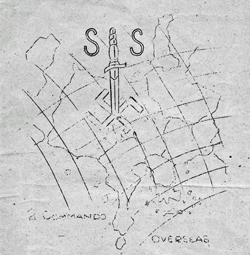
Everybody knew we were going overseas. But at least we were going to get seven days embarkation leave before we went, and it was a crowded leave train that pulled out of Ayr station on that Friday night. It was to say the least of it rather a blow to be woken up at one o’clock in the morning with the news that the train had been turned about and that we were to return to the sleeping landlords and ladies we had left but four hours earlier.
Six days later, April 13th 1943, Gourock seemed no less dismal than Ayr, and it was no real relief to be assembled in an overcrowded hold while the Colonel told us that the Commando was about to spend three months on the Rock of Gibraltar – because everyone knew that the Second Front would open ‘any day now’!
Gibraltar was enjoying a ‘Levant’ when the Dunottar Castle steamed in after an uneventful trip. The main Billet was to be Alameda Barracks with its Nissen Huts and the protective screen of cannon which had repelled the French during Rooke’s heroic defence in 18;;. There were knowing looks when it was heard that the Officers were to be guests of a Pioneer Company in the appropriately chosen Nunnery. By way of Commando training the only natural amenity offered by the Rock was climbing. An assault course built by the Independent Company, striven over, competed over and sworn over, seemed the only alternative to the local sport of burrowing and tunnelling or a continuous round of bathing in sandy/Catalan bays. Later, this monotony was varied by the use of two obsolete LCMs to convey as many men as they could possibly be made to carry on a round trip of the Rock, and to land them on a machine gun-swept beach for the assault on an imaginary power station. ‘Exercise Seaweed’, as it was dubbed, was immensely popular with its instigators at least. Two unfortunate troops had to repeat it seven times in almost as many days for the benefit of the great and their greater guests.
Normal entertainment on the Rock palled all too rapidly. The Football team were knocked out of the Prince of Wales Cup before they got very far. The Commando and Independent Company entered a combined side in the Cricket League, but only came into the limelight when Sgt Prescott and Pte Coulthard set up an all-time Rock record for a first wicket stand. Batting against a team of Sappers they scored 150 odd before being separated. Another all-rock victory was gained by the Unit with 100% in the Saluting competition. Water Polo and 6 a-side Hockey were indulged in, but without conspicuous success. Derby day however coincided with Payday, and this was too much for a subaltern inspired by the Sport of Kings. A vast blackboard was erected in one corner of the square and as the Pay queue dwindled in the other corner the crowd around the ‘Bookie’ grew. Runners and riders with their prices were chalked up by the Troop Sergeant Major, the inspired subaltern took the bets, and the Troop Commander’s Batman, remembering his days as a barrow-boy in the East End of London, shouted the odds. The Troop Commander himself had an excellent alibi, and a non-plussed RSM found himself unable to deal with the technical illegalities. Those concerned, on the contrary, gained a measure of fame from a notice in the pages of ‘The Rock’.
Vacancies for leave to Spain were all too few, but those who went came back with bulls cars and other parts of bulls, to encourage a practical demonstration in the mess. Sides were taken, the initiated took the floor, and chaos reigned.
‘Rock-happiness’, a virulent disease, had taken its grip. The ‘Off-the-Rock Society’ was formed, and exercise ‘Nuts!’ was the first of their many activities.
In the theatrical world the Commando made its mark upon the Rock with Lt Frank Mason’s very successful production of the first ‘Green Berets’ show, starting a Crazy Gang tradition which was to be followed with similar success elsewhere. For entertainment also a far-seeing Welfare Association produced Vivien Leigh, Beatrice Lillie and Leslie Henson. The latter, after a dinner at which Lieutenant Commander Tommy Woodruffe had proved to Col Jack that the Fleet could be lit up to order, is known to his undying shame to have recorded in his diary ‘….had an evening with some very tame Commandos’!
The Navy combined with the local defences to provide a fitting climax to the end of the North African Campaign, in Exercise ‘Gehenna’, when every blunderbuss on the Fortress hurled HE into the sky for three minutes, while Winston Churchill sat on the highest Rock to witness the proceedings.
Sanity was preserved by the arrival just three months after we had reached the Rock of Lord Louis Mountbatten, who, in a rousing speech, told us that 3 Commando and the two Marine Commandos had left something for us to do in Sicily. And with some still firmly believing that this was just a cloak to hide our intended assault on the Coast of France or ‘The Grapes’ in Ayr, the Prince Charles and Princess Beatrix took the Commando with what could be packed into a large valise to Syracuse, and then late at night to Augusta.
Brucoli, where we were destined to stay for most of the Sicilian campaign, brought heat and flies and dysentery, and an initial loathing of the Italian race. The Commando exercises which preceded the Scaletta operation were distinguished by the Colonel’s new invention for hurling arrows into the air (it was made from a Besa tripod) and by his first use of the Mad Minute, practically demonstrated. Neither invention got beyond the training stage, though it would have been good to see them used in battle.
The Scaletta operation itself was an anti-climax. To the whole Commando assembled aboard the Prince Charles, Major-General Leese led off with a fearsome pep-talk whose main theme seemed to be that the immediate future might well be bloodier than Saint Nazaire’. Lack of information, and the frantic haste of planning and preparation, did nothing to lessen the fearful expectancy. And so when the Navy dropped us at the wrong place and at the wrong time, we were pleasantly surprised to be able, after a short mortar engagement, to march triumphantly into Messina. A rather hollow success.
After another period in the orange groves, this time outside Catania, where malaria was added to the distress of dysentery, the Commando was moved across the breadth of Sicily to some more pleasant groves outside Palermo. Life here was still further improved by the American 5-in-1 ration; and for the first time since coming abroad there were no complaints about the food.
Being attached to the 5th Army however had its disadvantages, as was agreed when a Negro lorry driver informed a party of men of the exact details of the coming operation at Salerno. His forecast turned out to be more detailed than our scanty briefing when it came.
With the Rangers, who gave us a grand reception, in two LSI and ourselves in a third, and 41 RM Commando in LCIs we made the sea passage mostly in daylight. Except for one small air attack it was uneventful. The three Churchills (Col Jack, Col Tom and Capt Randolph) were conspicuous by their presence. The last named demonstrated a masterly command of the Italian language in translating a message from General Eisenhower, though it is possible that he might already have seen the English original! Not even he, however, could explain the truth about the Italian surrender announced at 9pm that evening. The guesses were many, and the betting was high.
The second wave were not unduly surprised to hear that the initial assault had gone in without any opposition on the beaches. But they were rudely shaken by the mortar barrage that met them as they neared the shore in broad daylight. However the primary objectives were taken with comparative ease; though opposition was encountered on the high ground above Marina, and the I.O. killed by an 88mm, when ordered to threaten Salerno. The Marines were holding the La Molina pass covering the main road into the town, but they had been counter-attacked repeatedly and suffered many casualties. The situation there was precarious and we had been moved over to relieve them when a final and almost successful counter-attack was put in. We were pushed back from the crest of the hill, but managed to dig in on the reverse slope. A barrage was put down ahead of us by a regiment of 25 pounders, a cruiser, and the monitor Roberts and we were able to retake the hill.
The Infantry relieved us in due course and we regrouped in the now captured Salerno town. After a short rest the depleted Commando moved out of the town under mortar fire in MT. The convoy eventually reached a leafy valley, where the CO gave orders for a ‘beat’ in six columns, making as much noise as possible to flush the game! No attack on Jericho could have been more successful, because nearly 150 Boche were put in the bag before daybreak, for the loss of one man wounded.
The subsequent attack was not so pleasant, and 1 and 2 Troops were badly mauled (all the Officers and the Sgt Major were casualties in 2 Troop) before being brought within the perimeter of the village of Piegolelle, where the CO organised an all-round defence. Two nights later, to the strains of an occasional tune from Mad Jack’s pipes, the Commando was finally relieved and retired to the Salerno beaches. The short period here was notable for an amazing tribute in a speech to the whole unit by Major General McCreery, then commanding 10 Corps.
An LSI sufficed to carry us back to Sicily, and by stages to Catania. The Brigade was reformed and rumours were rife. All the prophets proved false, and 3 Commando sailed Blightywards while we were destined for Taranto. We made Taranto harbour in the rain, and suffered initiation to the miseries of the Italian State Railways in a freezing journey to Molfetta.
From Molfetta the first recruiting boards went out, and here later the first cadre courses were formed. Infective Hepatitis or Jaundice spoiled the Christmas festivities for some, but the remainder were able to enjoy the second Green Berets show, and to show Italy the meaning of Whoopee!
The opening weeks of 1944 saw an exodus of two troops at a time to the monastery of San Michele. The area proved a natural Italian Achnacarry, with climbing on the snow-clad slopes of Monte Vulture to remind some of Ben Nevis.
Meanwhile the Commando had been left to the tender mercies of a succession of remarkably similar organisations known in turn by the obviously progressive titles as Forces 133, 266 and 399. For all the veil of secrecy which cloaked their activities, our connection with them was soon to have patent results, and with the New Year cognac still a powerful memory advanced elements of the Commando were whisked away to join a minute recce party under the CO on the Island of Vis.
The Jugoslav partisans gave us a phenomenal welcome. With the Germans barely 12 miles away across the water, and their last remaining Island threatened, there is no doubt that they were glad to see us. Indeed the shots that sang across our bows from riflemen ashore were but indicative of their pleasure. Full street lighting was on; organised parties of men met the ships and formed a guard of honour and conveyed the baggage to billets which had been cleaned by organised parties of women; organised choirs of men and women sang partisan songs while we waited; a brass band struggled with National Anthems and addresses were read from the steps of ‘Navy House’.
The set-up for Commando tactics was ideal. Recce parties and wireless stations on the German-held Islands were maintained almost continuously during the first few weeks. While the rest of the Commando and the first intakes were still in Italy going through the San Michele mill, Colonel Jack led two daring, if not typical, raids on the Islands of Hvar and Brac. In a raid he had himself planned for 2 Troop Captain Bare was unluckily wounded and died while being carried back to the boat by the German prisoners he had secured. He was given a funeral with the full military honours of three nations in the British Cemetery where the sailors of George III had been buried years before.
By the end of February the whole Commando was divided between the two small harbours of Vis and Komiza and the house on the central plain which Farmer Captain Walker had christened Duck’s Plash. Lieutenant B J Barton MC, on his own initiative, carried out two very successful small-scale 2-man raids, which earned him the DSO and the nickname Barton of Brac.
The first and most fruitful combined operations was planned as an attack on the garrison of the Island of Solta. The Navy were to land the Commando and a detachment of Rangers, with a few Italian 47/32 pack guns and an RAF link set in a small cove on the South side of the island. The whole party was then to cross the Island under cover of darkness and surround the town of Grohote if possible in complete silence. At first light the fighter bombers were to strafe the town and then the heavy weapons were to pummel it into submission. The raid was an outstanding example of close co-operation of all forces. A remarkable feature was the number of Officers who had spent 24 hours or more with Jugoslav partisans in their hideout on the Island prior to the final briefing, and by reconnaissance close to the enemy positions in daylight had provided a thorough picture of the task in hand. The Navy did the right thing by landing us in the right place at the right time, the RAF established perfect communication and gave us an air-circus exhibition of precision bombing, while PWB rose to the occasion and provided a loud-speaker to call for surrender which actually did work! The presence of Admiral Sir Walter Cowan was an inspiration sufficient in itself to secure the success of the operation. The entire garrison of over 100 was killed or captured, and for two days the Germans on the mainland knew nothing of what had happened. Then they sent over a rowing boat, and finding no Huns they took a couple of unsuspecting females who could only tell them that the English came and the Germans went.
The German reply came in the form of three air raids on the Island – concentrated but comparatively ineffective as regards material damage done. ‘Flaps’ and threats of seaborne and airborne landings abounded. The Island was fortified and prepared for defence. Parachute divisions and gliders were reported on the coast. Siebel ferries of unimagined proportions became the subject of lurid Intelligence reports.
But in the hours of daylight, life continued as normal. The game of Rugby football was introduced to the inhabitants of Dalmatia, who apparently considered it rather a brutal form of sport. Soccer matches were arranged, culminating in the tournament to celebrate May Day. Everything went according to plan with the very painful exception of the fact that the Partisans lost in the final to SS Bde. Further return matches were at once projected, but nothing could compensate them for having lost their game on their ground on their day.
Schooner hunting soon became the rage. The Royal Naval complement included MGBs, MLs and Vospers and under the inspired leadership of Lt Comd Tom Fuller they carried boarding parties from the Commando on nightly tours between the Islands and the enemy coast. The object was to sink or capture the unsuspecting schooners which by night were bringing supplies to the now beleaguered German garrisons. One of the captured craft contained Danish butter in sufficient quantities to keep Navy House and other places supplied for at least a month. There was an additional spice of excitement in the occasional brushes with U boats and aircraft which these trips produced.
The ceremony of handing over the first of these schooners to the Partisans was conducted by a visiting Admiral taken completely off his guard. He had to remain rather long at the salute while the flags were being changed, because with both flags at half mast there was a technical hitch only solved eventually by a man who climbed the rigging to release them.
The raid on Mljet will be remembered for many reasons. For the scale on which it was projected (a Solta six times over) for the success with which the landing was effected; for the damage it was to have inflicted on the sizeable garrison; for the enormous amount of sweat and effort expended; for the perfect summer weather and the driving wind and rain; for the grandeur and the superfluity of the mountains; and for the rumour which still persists that someone saw a German. All the same the RSR fired a good many rounds of 75mm at the Hun, and the propaganda set broadcasting from the Sea Hawk drew enemy mortar fire from somewhere, the RAF scored near misses on a good many crags, and it was quite nice to be back in Vis.
Shortly after Mljet the first party of Officers went back to the mainland on a Parachute course at Brindisi; but in the meantime a spot of bother occurred in Jugoslavia. Tito’s HQ had been attacked and the Marshal himself nearly captured. A large Partisan force was directly threatened and a diversion somewhere was vital. Appeals were made to the British, and a large scale attack was planned on the German garrison of Brac. Col Jack was acting Brigadier, and with 40 and 43 Commandos as the spearhead he led the attack. His resulting capture and the death in action of Col Manners cast a gloom over the whole island. An attempt to rescue Col Jack proved abortive.
It was particularly sad that Col Jack Churchill was not able to be present at the presentation of the Commando to Marshal Tito. This ceremony, performed at 1030 on June 23, was accompanied by a really full scale diversion by the 25 pdrs of the 111 Fd Regt and by the 3.7s of the AA Gunners. The Marshal, escorted by an entourage of Tommy Gunners, appeared to be entirely in his element. He addressed the Unit, and his speech, when translated, was found to be duly appreciative and highly complimentary.
His was the first of a number of inspections which characterised the closing days on Vis. Brigadier Davey commanding Land Forces Adriatic saw the Commando and gave a hint that they would be seeing more of him. The GOC SS Group paid us a visit, inspected the Unit, breakfasted with the Officers and gave a lecture on Commando activities in France. Admiral Cowan – Commando Cowan – left the Island after inspecting our Guard of honour and receiving our cheers.
A demolition course of considerable scope was run on the little neighbouring Island of Bisevo where the Partisans had made a prison Camp for the many Germans who kept rolling in. Football, swimming, soft-ball, basket-ball – all kinds of sport filled the summer days between raids. A 3rd edition of the ‘Green Berets’ ran to 16 performances in various parts of the Island.
But the CO had been called to Italy for conferences, and it became evident that we were destined for other fields. After a tremendous farewell party in the Officers Mess, with Partisan bands outdoing each other and suitable interruptions by the Commando piper, we at length embarked in LCIs and an ancient Adriatic steamer for Italy. We reached Monopoli camp on July 16th, and almost immediately started training with the HLI for operation Healing II. This operation, which was minutely planned with models and photographs and pages of paper, was a harassing task designed to destroy the German garrison of Himara near the town of Spilje in Albania. The garrison which was guarding that sector of the main supply route to the south, proved a very tough proposition. When we landed on July 29th and formed up under cover of darkness for a dawn attack on their positions they did not seem unduly surprised to see us, and despite the support of heavy naval gunfire and RAF fighter bombers and the guns of the RSR, they could only be dislodged by the determined frontal attacks of the Commando and the HLI. Even then they hit back in no uncertain fashion, and the attacks went on all day. In the end the time factor forced us to withdraw, but not before the town of Spilje had been entered and the German forces so disorganised and depleted that it was a comparatively simple matter for the Partisans to nab the rest next day. Sgt Webster, Gnr Pallett and Dvr John were cut off during the battle when the latter was wounded and the force returned without them. Two attempts had been made to bring them out in the week which followed, but no success achieved, when they were evacuated by Force 399 through their Liaison service with the Partisans who had been sheltering them.
Casualties at Spilje had been fairly high, and the beginning of August saw most of the Commando on leave in Rome and other high spots. A visit from Col Charles Vaughan who inspected the unit and told us much about the future, France, England, the present, the ‘Humming Bomb’ and ourselves, was a feature of the month. The promotion of Major Fynn to Lt Colonel, and his confirmation as CO was the occasion of a magnificent party in the Grotto at Polignano when most of the Uniform and practically all the fairest of the fair sex in South Eastern Italy assembled to wine sup and dance. As incidentals to this operation the local Italian population were shanghaied into such rowing boats as they could find, with their musical talent amongst them, and amid a shower of mortar flares and Verey Lights, they sang their way into the Grotto from the sea. A motor convoy on the neighbouring road is reported to have halted for half an hour fearing a fresh invasion. Other ‘attractions’ included a Jugoslav partisan choir, the Pipes, and a succession of Eightsome Reels.
In September the CO was married at Saint Augustine’s Church in Bari, Padre Banting officiating. A guard of honour outside the church was formed by Troop Commanders and Warrant Officers with Fighting Knives as befitted so important an occasion. But the Commando touch was added by Captain Parsons who had organised a smoke screen belching Verey Lights and flares, and a particularly explosive Jeep to convey the couple to the reception. The Jeep didn’t make the grade (again by arrangement) and the entry of the ‘horseless carriage’ towed by a second guard of honour and led by the Pipes, provided an excellent start to an excellent party.
But even while the festivities were going on, planning was proceeding apace. LFA, we discovered, had quite a big Staff, and they were certainly not devoid of ideas. Operation after operation was mooted, planned and scrapped, and finally after three false starts began the ‘fifty-hour operation’ of Sarande.
We arrived at the chosen beach on the Albanian coast a few miles North of Corfu, to find that our recce party under Capt Alec Parsons had been attacked by the Germans and nearly put in the bag. To cap this, shortly after daylight it started to rain and to the troops in KD with the lightest possible equipment, who were forced for their own protection to hold positions at about 2000 feet, the rain was a decided nuisance. We had been sent over to ‘harass’ the hun for the necessary period of 24 hours, in lieu of some other specific operation which had to be cancelled. So harass the hun it was. And for fifteen days we patrolled and strafed and recced in the craggy mountains and the waterlogged plain, all the time holding the valley in which our beachhead lay by manning positions on the flanking mountains. There was no water on the mountains, nor any food, and even when mules had been provided to do some of the arduous carrying, several of these died under the strain and the men had to take over their loads. Gradually a Brigade Force was built up under Brigadier Churchill, consisting of ourselves and 40 RM Commando, 150 Assyrian Levies, and elements of Royal Artillery and the RSR; and all the time offensive patrolling went on, and most of the time it rained. There were many casualties from exposure in the first few days, and despite the surprisingly good morale quite a few men had not recovered in time for the battle. Rain and the sharp rocks in particular played havoc with men’s feet.
However, on the 7th and 8th October we began to move up for an attack on the garrison of Sarande, carrying up the ammunition and stores required over the mountain tracks. At 0245 on October 9th the leading Troops began to advance and by 1015 our final objective, a Battery of captured British 25 pdr guns on a fortress hill, was secured. The Royal Marines, in a magnificent battle, cleared Sarande and the job was virtually done.
We withdrew by sea to our original beach and, amid a confusion of orders and counter-orders from Italy, the CO led a party to Corfu to clean up the Germans who remained. This party received a magnificent welcome from the populace, many of whom spoke English, and the work of reconnaissance was somewhat hindered by the need for Ceremonial and receiving the honours paid. Lt Eastaugh, halted by a crowd in a village, had to listen to a speech in modern Greek in which he was assured that his party were ‘not men but angels, sent from Heaven to protect us’.
Brigadier Churchill took his leave of the Commando on Oct 16 and the next day we returned to Monopoli and another spell of leave. In November, the camp at Monopoli showing signs of reverting to the marsh it must originally have been, we moved to billets in Bitetto. Reorganisation started in earnest. A speech to the Commando by Major-General R E Laycock after he had inspected us, seemed to indicate that operations of a different kind were ahead of us. Innumerable courses were laid on, intake troops were recruited and trained, and Christmas Horses, Mules and the proximity of Bari, were the only things that should have interfered with training.
By the beginning of 1945 it was evident that something was afoot. Mountain warfare training in the snow seemed to be the order of the day, and with two troops at a time ‘battling’ in the hills at Gravina, and later a 2 day Bde Exercise at Minervino, it seemed logical that our farewell to LFA at the conclusion of this feverish spell should be the prelude to our move to the flat, flat plains of Ravenna.
Here we came under command of 5 Corps and, arriving on February 18th, went into the line with 12 Lancers on the 21st. After ten days we returned to Ravenna, were in the line from March 4th to the 11th, and again from the 19th to the 22nd. During these periods there was a good deal of patrolling to be done, and we suffered a number of casualties from shell and mortar fire, and from the vast numbers of mines both own and enemy with which this much contested sector was littered.
In the interim between the second and third spells in the line, and in the last week of the month training was carried out at a feverish pace with Fantails and Stormboats, in which new craft it was intended that we should carry out our share of operation ‘Roast’. This remarkable operation to clear the Germans off the Spit of land between Lake Comacchio and the Adriatic, and thus secure the right flank for the big attack which was to follow, was carried out by the whole Brigade and won honours for all units taking part. From our own point of view even now there is that about the success of the operation which savours of the miraculous. No brief account can do justice to the story. Let it be said merely that everything that could have gone wrong in the early stages had been foreseen and provided for; all those things did go wrong, and the snags had to be overcome by independent or concerted effort; as, for example, the little detail of having to walk half the way knee deep in soft mud and waist deep in water. We reached the beaches six hours late, without our anti-tank guns without our reserve ammunition, with a minimum of medical supplies. The initial assault was done by a Troop and Commando HQ together, the only flights able to reach the right place by daylight. Instead of one troop as had been arranged, two and a half troops had to land on 9 Commando’s beachhead, leaving a very depleted force to take the main objectives. Yet within four hours of landing these objectives had been secured by whirlwind tactics, and the troops with 9 had fought their way through from the south to join us.
When, on the evening of the third day after landing, the Brigade, having carried out its task of clearing the Spit, was relieved by 24 Guards Brigade, we had accounted for about 250 Germans in wounded and PW alone, and had secured large quantities of guns and equipment.
After a few days rest we were moved up with 43 RM Commando and Bde HQ to the town of Conselice, from where we were destined to carry out our last action in Italy. This was briefly the task of making good the left flank of the thrust through the Argenta gap, by the not-so-simple expedient of fighting our way up the four dykes which contain the river Reno and the canals which run immediately alongside it. To the left a large stretch of floodland robbed us of the power of manoeuvre and immediately to the right was our boundary with the main effort.
The principal snag was the difficulty of lateral communication. There was no information as to which of the four dykes held the main strength of the enemy, and once a part of our force was committed to one of the dykes as a line of advance it was virtually on its own. To reinforce against opposition encountered or to exploit success on a particular dyke was a slow business. Troops were decidedly under strength after the days in the line and the matter of the Spit, and until the capture of a heavily defended lateral bridge improved communications, individual troops must have found it a decidedly chancy business.
The supply problem too was acute; finally a jeep-track was made by the simple expedient of driving through the undergrowth, but much of the difficulty still remained. And the better the results of the fighting, the worse was the problem of supply.
Finally, after a very sticky period in which troops had to hold on to their gains in face of heavy fire and attempted counter-attacks, 43 Commando broke through with the tanks, and almost at once we were leap-frogged through again to take up the chase.
Short of Molinella, when the situation in our flanks was entirely obscure, and the German situation obviously chaotic, we were halted for a couple of days during which we patrolled in all directions, taking prisoners and drinking pre-war Vermouth dug out of hiding for the occasion by the Italian Partisans.
We were taken back to Ravenna for a rest, and immediately reorganised into three troops and a recce section to meet the commitments which were designed to follow. Then, amid talk of further special training for the crossing of the Po, on a sudden we found the Po was crossed, and the end in Italy had come.
April 13th 1943 – May 8th 1945 ; Gourock – Ravenna
Brigadier, what now ?
|
CASUALTIES
|
OFFICERS
|
ORs
|
||||
|
Operation
|
Killed
|
Missing
|
Wounded
|
Killed
|
Missing
|
Wounded
|
|
Scaletta-Messina
|
1
|
-
|
2
|
3
|
-
|
14
|
|
Salerno
|
7
|
-
|
4
|
26
|
9
|
110
|
|
Dalmatia
|
2
|
1
|
6
|
2
|
14
|
33
|
|
Spilje
|
-
|
-
|
4
|
6
|
1
|
47
|
|
Sarande
|
3
|
-
|
3
|
3
|
-
|
25
|
|
Line Duties
|
1
|
-
|
3
|
10
|
3
|
28
|
|
Comacchio
|
-
|
-
|
1
|
3
|
-
|
25
|
|
Argenta Gap
|
-
|
-
|
3
|
4
|
-
|
26
|
|
Total
|
14
|
1
|
26
|
57
|
27
|
308
|
|
Total Officers : 41
|
Total ORs : 392
|
|||||
|
Embarked with unit 13 Apr 43 and remaining with unit until VE Day 1945 : 3 Officers, 161 ORs.
|
||||||
Decorations and awards record from an account in a booklet called No 2 Commando Overseas written by an unknown member of No 2 Commando detailing the period April 13th 1943 to 8th May 1945 Gourock – Ravenna. Original booklet from the collection of L/Sgt Joe Rogers MM, No 2 Cdo 5 troop [transcribed by Di Edwards]
Note: This list is posted as transcribed from the document. It is not meant to be a definitive list. It is as it states, those who were in No.2 Commando itself, so for instance does not contain those who served as signallers, or in any other capacity, as part of HQ 2 Commando Brigade.
Service after the War
"After the war Jack Payne, my brother Stanley, and I, all enlisted in the London (TA) 10th Battalion Parachute Regiment, and spent 6 years jumping out of aeroplanes and balloons. I may have mentioned that we had done an initial Parachute Course on our return from Yugoslavia, at a place named Gioia del Colle, which means Happiness on the Hill.
We were in number 3 Company, based at Dagenham Essex. Jack Payne persuaded us to make up a Company Boxing Team, and we won the Inter Company Trophy, 5 years running, so they gave it to us and set up another Trophy."
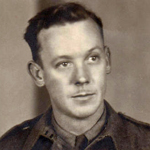
Herbert Dixon enlisted with the Buffs on 15 March 1940. He then volunteered for No.5 Independent Company. After joining No.2 Commando he was posted to 6 troop. Late 1943 when the Commando was restructured he was moved to 5 troop. There are group photos of him and others in the 5 troop album.
[Image] Tim Huelin (grandson)
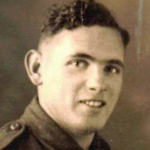
The personal memories of Alf Sawyer relating to his military service in No 2 Commando. Use the download facility above. Provided courtesy of his son Ian Sawyer
Read below the wartime memories of Private Sawyer No 2 Commando.
No.2 Commando Boxing Team 1943 in Gibraltar
Top row: 1. Gnr .John 'Jack' White;
Middle row: 1. nk; 2. nk; 3. LCpl Peter Sharp; 4. LCpl. A. Turpin; 8. Pte. F. Haigh.
Bottom row: 1. Harry Lumm; 2. nk; 3. Lieut. Frank Mason; 4. Lt Col 'Jack' Churchill; 5. belvd to be Capt.Samuel Jenkins; 6. nk; 7. Gdsm. Roy 'Jack' Payne.
Operation Healing 2 - Spilje, Albania, 29th July 1944. Stanley Buckmaster (5tp) and Jock Cree (5tp) are on either side of the German prisoner in the middle of the photo. Jock on the right of him as you view the photo. Photo credit: Fred Mather. Additional photos from this operation are in the No.2 Commando gallery.
Info from Eric Buckmaster and Des Rochford both No.2 Cdo :The German prisoners are wearing assault jackets from some of 5 troop and carrying ammunition housed in the pockets. Eric said that it was easier to make them carry the heavy stuff."